inside ECE
2020 Year in Review
ECE and Your Health
Autonomy for Accessibility
Connecting the World
Powering and Protecting the Planet
Tracking Butterflies

ELECTRICAL AND COMPUTER ENGINEERING
Electrical Engineering and Computer Science Building 1301 Beal Avenue Ann Arbor, MI 48109-2122
UMichiganECE


EDITORS:
Catharine June
Hayley Hanway
GRAPHIC DESIGNER:
Rose Anderson
UMichECE
umichece
EECSatUM
The Regents of the University of Michigan
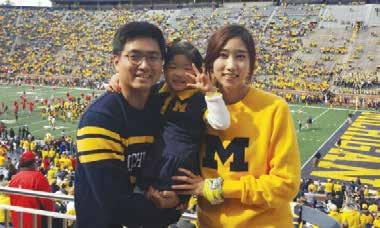
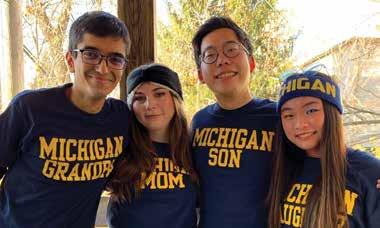

Jordan B. Acker, Huntington Woods
Michael J. Behm, Grand Blanc
Mark J. Bernstein, Ann Arbor
Paul W. Brown, Ann Arbor
Shauna Ryder Diggs, Grosse Pointe
Denise Ilitch, Bingham Farms
Ron Weiser, Ann Arbor
Katherine E. White, Ann Arbor
Mark S. Schlissel (ex officio)
A Non-discriminatory, Affirmative Action Employer. © 2020
2
Graduating students sent us some of their favorite images from their days at Michigan.


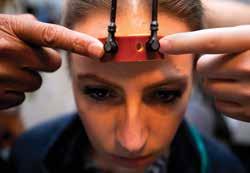
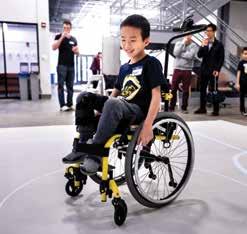
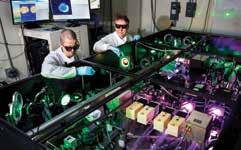

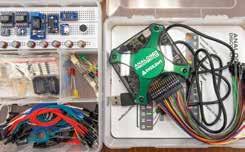
6 HIT BY COVID 4 LETTER FROM THE CHAIR 5 BY THE NUMBERS 30 5G AND ECE: CONNECTING THE WORLD 12 INSIDE ECE AND YOUR HEALTH 34 INTO THE UNKNOWN WITH ECE 18 POWERING AND PROTECTING THE PLANET WITH ECE 38 WHY WE CARE ABOUT PLASMA 24 TRACKING MONARCH BUTTERFLY MIGRATION WITH THE WORLD'S SMALLEST COMPUTER 41 HERCULES TO ZEUS: THE MOST POWERFUL LASER SYSTEM IN AMERICA 26 AUTONOMY FOR ACCESSIBILITY inside
46 THE POWER OF DIVERSITY AND COMPASSION 52 SPOTLIGHT ON EDUCATION 81 ALUMNI SPOTLIGHTS 67 STUDENT NEWS AND AWARDS 85 DONORS 80 ECE COUNCIL 56 FACULTY NEWS AND AWARDS 42 ECE RESEARCH SNAPSHOTS
THIS ISSUE
FROM THE CHAIR
Dear Friends,
As we reach the end of 2020, we are saying farewell to a world forever changed. Change offers an opportunity to adapt, reflect, and become stronger. The faculty, students, and staff that I have the privilege to work with have found the strength to continue our mission: to educate, explore new technologies, and serve the public.

Our 2020 magazine, Inside ECE, provides an overview of what’s been happening this past year in Electrical and Computer Engineering. Our research is ever changing and evolving. Our courses may seem fairly stable – but what is often hidden from view is how much our faculty incorporate new research and technology into both new and long-standing courses.
For most of the past year, our faculty have been adapting our courses to serve students remotely. Only one of the 100+ courses taught in the department required some in-person attendance; it was a laser lab. At the same time, all faculty and student instructors were given the option of teaching remotely for the Fall 2020 term, and this is also true for the Winter 2021 term. Remote instruction is not ideal, but our faculty are finding new ways to connect with students, and we will incorporate new successful techniques into future courses.
You will find two features that reflect historical events of 2020: Hit by COVID-19, and The Power of Diversity and Compassion. We are living through tumultuous times and don’t have the benefit of time to reflect, but we can record what’s been happening, and how we’ve chosen to react. Our choice in ECE has been to respond with compassion for all the people in the department, and keep them as safe as possible while continuing to provide our students with the knowledge and tools they need to create a bright future for all.
This is the first time our magazine is primarily electronic. I hope that we can send everyone a copy in years to come, though many may prefer to read it online. I welcome your feedback.
I wish you all good health and look forward to the day we can meet again.
Mingyan Liu
 Peter and Evelyn Fuss Chair of Electrical and Computer Engineering
Peter and Evelyn Fuss Chair of Electrical and Computer Engineering
Undergraduate Students
Bachelor’s: EE 326 Bachelor’s: CE 307








Master’s: ECE 396 PhD: ECE 276


5 People Tenure/Tenure-Track Faculty 72 Research Scientists 16 Postdoctoral Researchers 47 Visiting Researchers 44 Alumni 18K+
Bachelor’s: EE
Bachelor’s: CE
Master’s: ECE 245 PhD: ECE
Degrees Awarded
99
97
50
Students
Tech Transfer U.S. Patents (FY20) 33 Invention Disclosures (FY20) 75 License Agreements (FY20) 35 Startups Since 2010 24 Undergraduate Programs – Electrical Engineering 8 – Computer Engineering 7 Graduate Programs – Electrical Engineering 6 – Computer Engineering 6 # Top 10 Programs at U-M 102 Research Expenditures (FY20) $47.8M Faculty Honors Endowed/Named Professors 26 Fellows 40 Faculty Have 73 Titles CAREER/YIA Awards 61 NAE Members 5 Education Awards 68
Rankings:
News & World Report
Graduate
BY THE NUMBERS
U.S.
HIT BY COVID-19
ECE Pulls Together to Support its Students and Continue Research
The world is living through a worldwide pandemic that infected about 40 million in the first 10 months, and killed nearly 3% of those infected. It has caused chaos in the lives of countless more.
Students caught off-guard this past March had the option of completing their studies online, or scrapping the term. Most attempted to complete their studies. There was more choice when it came to the new academic year. Should students continue with their education? Should they live on campus?
New students had to find a way to begin their education with limited ability to connect with others, including their professors. Faculty, staff, and some students have the added challenge of not only working from a home with children, but needing to help educate their school-age children.
Here’s a snapshot of what life’s been like in ECE since the university first shut down on March 12, 2020
DECEMBER 31, 2019
The disease impacting China was officially identified as an outbreak by the World Health Organization (WHO) China Country Office.
JANUARY 21, 2020
First U.S. case of the deadly mystery virus confirmed.

FEBRUARY 11, 2020
WHO dubs the mysterious new viral outbreak as COVID-19, short for CoronaVirus Disease 2019.
MARCH 6, 2020
The City of Austin canceled the popular South by Southwest 2020 event, just a week before it was scheduled to begin. Typically attended by hundreds of thousands of people, it was one of many conferences and events that were canceled or postponed due to COVID-19.
MARCH 11, 2020
WHO declares COVID-19 to be a pandemic.
U-M President Mark Schlissel sent an email message to students, faculty and staff canceling classes for the remainder of the week, and declaring that all classes will be taught remotely through the end of the academic year. The next day, the Big Ten canceled all conference and non-conference competitions through the end of the academic year.
MARCH 20, 2020
U-M President Schlissel orders all noncritical laboratory research to ramp down, with the exception of research related to COVID-19.
6
We Miss You Already!

Normally hustling and bustling, the classrooms and halls of the EECS building were eerily silent.

Hand sanitizer quickly became treasured items.

Prof. Pallab Bhattacharya missed his students so much he filled the space with some friendly faces. Somewhere else, the real students were learning all about Semiconductor Optoelectronics Devices and their role in data storage, the Internet, high-performance computers, displays, image sensors, lighting and solar cells.
PhD Defenses Go Remote

ECE had not one, but TWO remote defenses at the exact same time on Thursday, March 19. Both sailed through – with just one day to make the switch from live to remote!

7
Digital Graduation
The cancellation of all in-person commencement activities was particularly difficult for graduates. To celebrate and honor the Class of 2020, the university created significant digital programming, and ECE created individualized content including video messages from the faculty, a digital EECS graduation booklet, an article full of student submissions about their memories of U-M, and more.
“I was really missing my favorite standing desk in the Duderstadt, so I turned my desk at home into a standing desk. The circumstances around you may change drastically, but there are small steps you can take to adapt smoothly to those changes.”
— Isha Bhatt, ECE Undergrad
“My cat is inspecting these arduino compatible robot chassis that we’ve been assembling for EECS 373 final projects.”
 — Rob Giles, Senior Computing Consultant
— Rob Giles, Senior Computing Consultant
Thank You U-M Hospital Staff!
As it became clear that our medical workers, including those at the University of Michigan hospital, were our new domestic soldiers on the front line, our faculty, staff, and students made a video thanking them for their efforts.

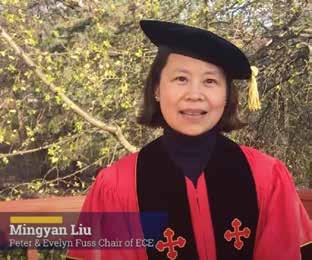

8
Home Alone
Research Ramp-up
After 10 long weeks, and in response to Gov. Gretchen Whitmer’s announcement, the university began to allow a small number of research labs to reopen – under strict distancing and PPE protocols. Several ECE faculty and their students were among the first to get back to work.

“One of the things that’s probably not as appreciated is how important it is for people to meet each other in the lab,” said Stephen Forrest, the Peter A. Franken Distinguished University Professor of Engineering. “A lot of ideas are exchanged. A lot of talk goes on.”
And of course the equipment itself is essential!
Forrest, for example, was on the verge of perfecting his organic vapor jet printing technique, currently used to make OLED displays, and to produce arrays of beating heart cells. “After many hiccups and back sliding, just before the labs closed, we figured out a way to attach the cells to a scaffold exactly how we wanted them to in high yield,” said Forrest. “We know the chemistry works. Now we just have to print them.”
Prof. Zetian Mi’s lab, on the other hand, was developing the technology to build UV light emitters for use as a safe and powerful disinfectant for hospitals and workplaces. They used the time out of the lab as best as they could.

9
David Laleyan working in the lab pre-shutdown.
As an experimental researcher with a lab, Prof. Zetian Mi was among the first group of individuals granted access to College of Engineering buildings on May 26, 2020.
“Being a heavily experimental group, we are dependent on our labs and equipment to conduct our research,” said doctoral student David Laleyan, who is a member of Prof. Zetian Mi’s research group. “The work also often requires several students and postdocs working closely together, which of course is currently not possible. There were fears that the lab shutdowns would put our research at a standstill, but amazingly this has been a productive opportunity to collect our thoughts, organize our experimental data and results, catch up on readings, and come up with strategies to hit the ground running once the labs reopen.”
Planning, Planning, and More Planning
Faculty worked at a feverish pace to shift their classes online. Biweekly faculty meetings became weekly meetings that continued throughout the summer as it became clear that the pandemic was not going away any time soon – and fall semester was quickly approaching.
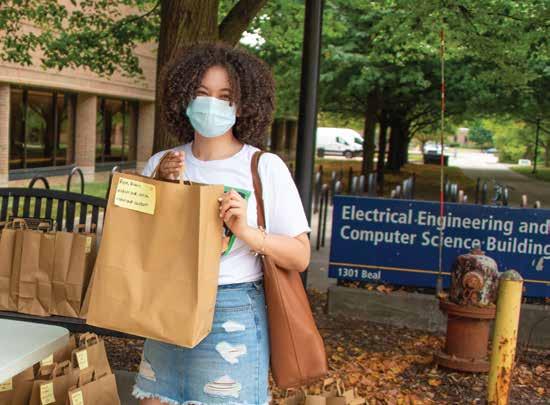
Faculty and student instructors were given the option of teaching in person or teaching remotely.
Remote Labs!
Remote learning during the pandemic has forced professors to re-imagine how to teach labs –without access to a lab.
In ECE, more than 600 lab kits were sent to students around the world. Students who returned to campus picked up their kits in August.

One Exception
EECS 438 (Advanced Lasers and Optic Laboratory), one of the several major design experience courses offered by ECE, was the only class that was completely in person this fall. You simply can’t ship a laser through the mail.
 Handing out lab kits for undergraduate courses in electrical engineering for students on campus. The rest were mailed out.
Handing out lab kits for undergraduate courses in electrical engineering for students on campus. The rest were mailed out.
10
How s it Going?
Despite what is lost in purely online education –some faculty reported more interaction in their online courses than when teaching in person. And ever since the move to online or hybrid teaching, faculty have been sharing what was working well, and what wasn’t. They care deeply about the education the students are receiving, and are thinking ahead to the future classes their students will take.
Prof. Michael Flynn taught EECS 311 (Electronic Circuits). He reported that 40% of the 35 students in the class were still in Ann Arbor, 40% were overseas, and the rest were in the U.S. He chose to teach with a flipped classroom style, similar to some other faculty, and said that things were going pretty well.
Prof. Jeff Fessler taught EECS 551 (Matrix Methods for Signal Processing, Data Analysis and Machine Learning). He said that 60% of the 110 students in the class are in Ann Arbor, about 30% are in China, and the rest are scattered around the world. Fessler was impressed at the level of student involvement during the live online lecture, with about 100 students showing up. He increased interaction among students by having them ask questions about each other, and says he’ll continue that when things go back to “normal.”
With about 400 students in the class, Scott decided to scrap exams and do literature reviews. “This whole semester is a bit of an experiment. I’m excited about it. The first topic is going to be on socially responsible machine learning, and the second will be more self-directed.” Grading will be done using a peer review system, which Prof. Al Hero did last semester with good results.
Prof. Becky Peterson had students share a photo and fun, non-technical fact about themselves to build community in her EECS 598 (Semiconductor Power Devices) class. She also set up a course GatherTown site where students can meet and collaborate without exchanging phone numbers or zoom links.
WINTER 2021

The next semester is expected to be similar to Fall 2020, with most courses offered online, and some with in-person labs as an option. Again, all faculty members and student instructors have the option to be completely remote, just like the students.

It’s not great – but together, we’re making it work.
 Prof. Clay Scott
Prof. Clay Scott
11
INSIDE ECE AND YOUR HEALTH
Battling COVID-19 has dominated the news as outbreaks continue to occur around the world. Such a pandemic had been predicted for many years, and it’s presumed to occur repeatedly in the future.
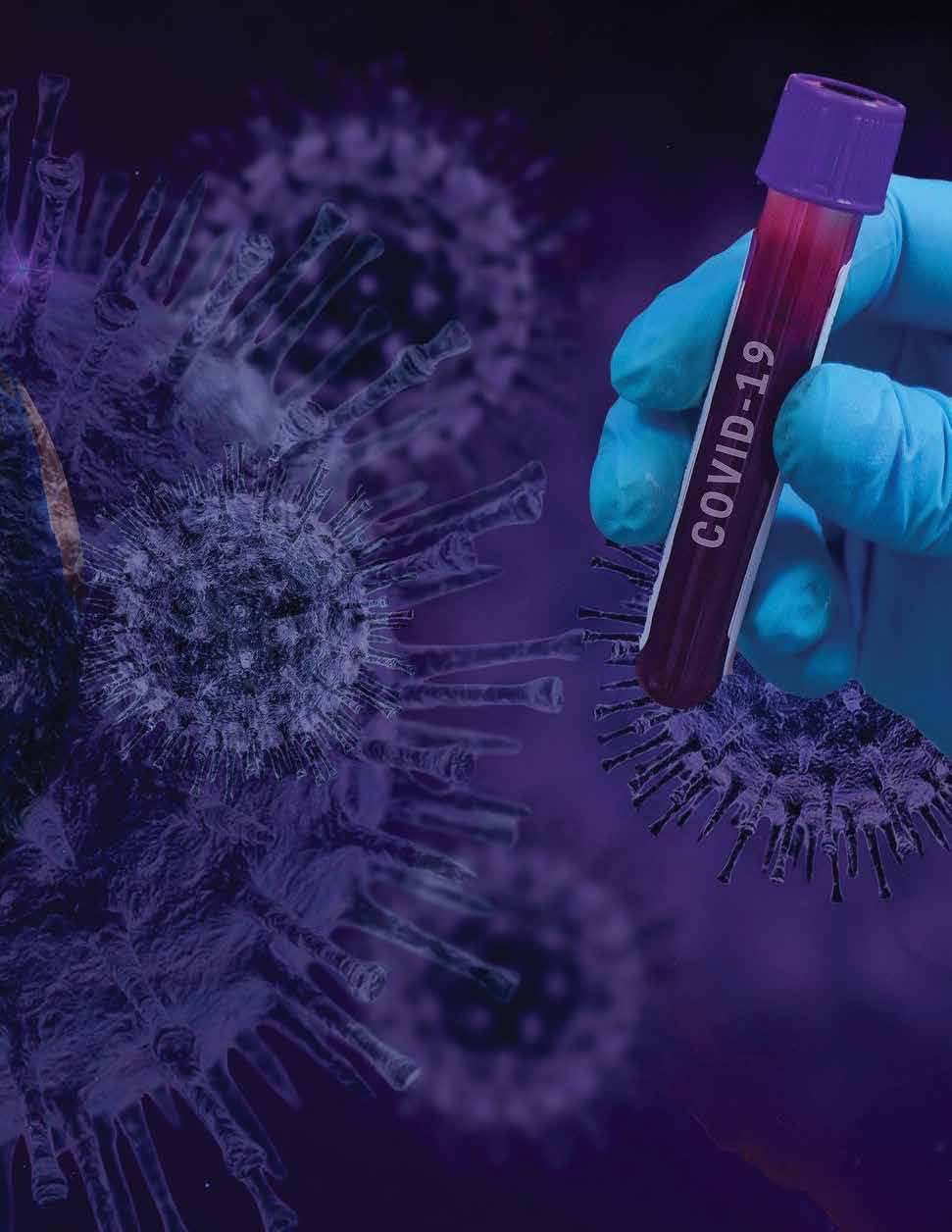
Researchers in electrical and computer engineering take the long view – building solutions for new problems that are often based on fundamental research that took years or often decades to develop.
Here are some examples of ongoing research that have applications relevant to improving life with COVID-19, followed by other medically-related research.
12
Tracking Early Detection of Disease, Including COVID-19
Faculty are finding ways to identify certain types of illness before obvious symptoms appear Specifically, data from medical wristbands suggests that evidence of disrupted sleep could predict when study participants were coming down with the flu—24 hours before they became contagious, according to an interdisciplinary research project involving Prof. Al Hero.
A machine learning algorithm used data from a medical wristband to deduce the sleep patterns of 25 study participants who had been deliberately exposed to a strain of the flu. For seven of the eight participants who came down with the flu and also had usable data, evidence of disrupted sleep appeared 24 hours before the participants began shedding viruses.

While the initial study was focused on the flu, this method may be general enough to spot the beginning of other infections—possibly including COVID-19.
“As we get more data from the populations wearing smart watches through this pandemic, our predictive models will be refined. We imagine that these refined models could be used to generate an early warning signal and even potentially enable the prediction of asymptomatic spreading without tests,” said Alfred Hero, who is the John H. Holland Distinguished University Professor of Electrical Engineering and Computer Science and the R. Jamison and Betty Williams Professor of Engineering.
While this approach would in no way be able to diagnose COVID-19, it may be able to give useful guidance about when people should self-isolate out of precaution.
Collaborators included faculty from the Department of Infectious Disease at Imperial College London, and the Center for Applied Genomics and Precision Medicine at Duke University.
A Safe and Powerful Disinfectant
Store shelves quickly emptied of disinfectant cleaners and hand sanitizers in March of 2020 as people sought for ways to keep themselves and their families safe from this new highly contagious disease known as COVID-19.
Killing harmful bacteria and viruses from surfaces and the sterilization of medical equipment is a daily priority in doctors’ offices and in hospitals. It has become especially critical in the current pandemic as hospitals have become overwhelmed with patients.
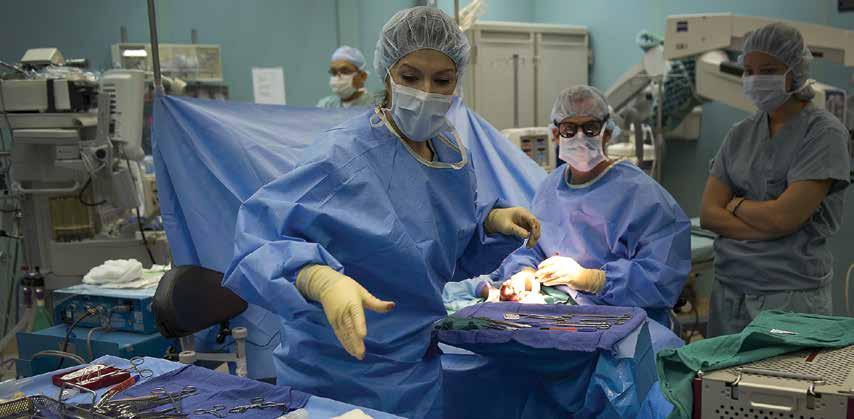
Ultraviolet (UV) light has been proven to be an effective disinfectant of harmful microorganisms, but so far, there is no technology that can provide this form of light safely and efficiently. Fortunately, Prof. Zetian Mi and his research group are overcoming the drawbacks of current technology so that this can be a reality. Research is being conducted in the Lurie Nanofabrication Facility as well as his individual lab.
“Success of our work will lead to lamps that can be readily installed in indoor public locations to reduce the spread of microbial diseases such as COVID-19,” said Mi.
13
Gaming COVID-safe Behavior
When human behavior is competitive, we often don’t use resources or adopt behaviors in ways that are most beneficial for the community—as seen in behaviors like hand sanitizer and toilet paper hoarding, and the use of masks. But most of our decisions about how to behave aren’t entirely individualistic. We make them as part of a community. We are swayed both by leadership—and the incentives and disincentives that they can offer—as well as altruism.
Mingyan Liu, Peter and Evelyn Fuss Chair of ECE is leading a project that could be applied to the goal of maximizing COVID-safe behavior, or other behavior that works for the common good, based on multi-scale game theory.
To begin with, the team is exploring how to model compliance or lack of compliance regarding COVID-19 orders and recommendations in their game-theory framework. Factors that may influence individuals include the prevalence of COVID-19 in the local community, or a person’s vulnerability or proximity to vulnerable individuals. But they may also be affected by the timing of the order and even the words and phrases used by officials. This aspect of the analysis will allow the team to then investigate community-wide behavior as a result of high-level policies.
Liu plans to connect behaviors identified from such data with COVID-19 case data to discover which restrictions and recommendations are most effective.
“We’re also interested in understanding what additional mechanisms or policies could be introduced to make the overall system more efficient—for instance, enabling more collaboration among communities rather than competition,” said Liu.

Spreading Rumors and COVID-19
Ying’s algorithm reconstructs the spread of an entity such as an illness from single or multiple sources.
With an approach that combines big data, network science and stochastic systems, Prof. Lei Ying is working to develop algorithms that can quickly and accurately identify COVID-19 “patient zero” as the virus spreads to new places or resurges, and reconstruct its spread with limited information.
Ying is using a wide array of data that might include, for example, human mobility data, social network data and genetic network analysis. This is a new application of an NSF project that Ying and his team have been working on for several years.
The project focuses on establishing a theoretical framework for locating the source of anything that has already spread so
widely, it can seem like finding the original stalk of straw in a haystack.
What has spread might be a rumor on the Internet, an emotion prompted by an image on social media, or in the case of COVID-19, a viral germ.
“Our algorithm is designed to be used with imperfect contact Tracing,” said Ying, “so it provides a more accurate picture of the spreading with partial or limited contact tracing information.”

14
MORE ON HEALTH
We’re not doctors, but we do build technology used to improve people’s health, and some of our students become doctors (see the profile about Stefany Escobedo, in this issue).
Here’s a snapshot of recently-reported medically-related research that is not specifically tied to the pandemic.
Portable Concussion Detector
With no way to reliably tell whether an athlete has a concussion, many may be playing with an undiagnosed injury. Likewise, 2 million people die every year because we don’t have an early warning when brain cells are dying—and another 4 million experience cognitive disabilities.
Prof. Mohammed Islam is leading an interdisciplinary team in the development of a noninvasive way to measure whether brain cells are in distress using an infrared laser. The device uses optical fibers to deliver pulses of infrared light to a person’s forehead. This light can penetrate through the skin and skull to the brain without doing harm. It interacts with an important molecule for metabolism called cytochrome C oxidase, or CCO.
While existing technology can give real-time information on whether the brain is getting oxygen, this new device gives information about whether the brain cells are able to use that oxygen. That could enable concussions to be diagnosed on the sidelines of an athletic event. Alternatively, it could provide rapid feedback as doctors adjust treatment in the ER, operating room or the intensive care unit.
Collaborators include Steven Broglio, director of the Michigan Concussion Center, Rachel Russo, a trauma and emergency surgeon, and Ioulia Kovelman, associate professor of psychology.

15
Allyssa Memmini, Movement Science PhD, led an experiment testing a laser designed to detect concussions in the Center for Human Growth and Development at the University of Michigan on January 30, 2020.
Improving Breast Cancer Research With Machine Learning
Prof. Euisik Yoon has been improving methods to detect and treat cancer for many years by developing better tools for detection and testing, which leads to improved treatment. Two projects have shown promising improvements by incorporating machine learning into their systems.
In one project, Yoon and his team of graduate and undergraduate researchers developed a new tool to improve drug screening for common cancer treatment drugs. They designed a machine learning program that makes large-scale drug screening efficient and low cost for use with microfluidic platforms, which yield far more accurate results than traditional drug screening.
“Automation and efficient readout methods are the key for microfluidics to get to the next level in the next decade,” said Dr. Yu-Chih Chen, who helped lead the project. But machine learning only works if you’re training it with information provided by direct observation, which is why Yoon says it was important for his students to have some background or understanding of biology.
The team’s machine learning model was able to accurately judge the drug inhibition score of a tumor sphere using only the bright-field image. They used this method to precisely estimate the drug efficacy of three chemotherapy drugs. Their results suggest that it’s possible to first train a generic model using a few representative drugs, and then apply it to many different drugs in large-scale, efficient, and low-cost screening.

In a second project, Prof. Euisik Yoon’s group developed a method to quickly identify cancer stem-like cells (CSCs), which could help improve the effectiveness of cancer treatments.

CSCs can seed and develop tumors in metastatic sites, causing cancer to relapse in patients after treatment. They are also generally resistant to chemotherapy and radiotherapy, so therapeutics that directly target CSCs may greatly improve the success of cancer treatments. However, CSCs vary widely among and even within patients, making it difficult to develop treatments.
To speed up the process and thereby reduce the threat of cell contamination, Yoon’s group developed and trained a convolutional neural network (CNN), which is a machine learning method for image classification, to predict single-cell derived tumorsphere formation.


This method can help advance the study of CSCs in breast cancer, improving targeted treatments with potential similar success in other types of cancer. The next step is to see if the model can be widely applied to other forms of cancer.
“The combination of single-cell analysis and machine learning will create strong synergistic effects to expedite bio-discovery,” said Chen, who also collaborated on this project.
Tumorsphere chip and culture chamber. (a) Photo of a cancer sphere chip for drug screening. (b) Microscope image showing 8 tumorsphere culture chambers with inflow and outflow channels. (scale bar: 400 μm). (c) Laser confocal microscopy image of a unit chamber measured by an Olympus OLS 4000 LEXT instrument.
16
Memory Research Now Possible With Michigan Probe

In one of the latest improvements to the Michigan Probe, Prof. Euisik Yoon led research that will lead to better understanding communication among brain cells. His team, which includes the original developer of the Michigan Probe, Kensall D. Wise, and longtime collaborator Dr. György Buzsáki of New York University’s Neuroscience Institute, developed a special type of shielding so that the electrons on the neural probe could better distinguish the signals that came from brain neurons after they had been activated with light, in a process known as optogenetics. The true signals were obscured by “artifacts” – a type of noise in the signal.
“Now that the artifact is removed,” said Yoon, “we can modulate neurons in nearly any area of the brain and determine exactly where in the brain the neurons are located, and how they are influencing neighboring neurons.”
This research is key to advancing our understanding of the brain and developing treatments for neurological diseases such as Alzheimer’s Disease. One of the new experiments that the team has in mind would explore memory.
How Do Microorganisms in the Body Communicate?

It’s possible that microorganisms that live in the body, known as biofilms, can use electromagnetic (EM) signal transmission as a means of communication within their communities of cells. Prof. Kamal Sarabandi and doctoral student Navid Barani present a novel multiphysics model to explain how EM signaling communication would work in biofilms.
Biofilms can both protect health –such as those found in the mouth and intestinal tract, or harm it, as in the case of staph infections. Biofilms may also contribute to the development and growth of certain types of cancer. By understanding communication mechanisms in biofilms, biologists can better identify the nature of the information being exchanged.
“This may allow us to disrupt the communication of infectious bacteria that make us sick or the growth of cancerous tumors,” said Sarabandi.
“The most exciting part of this finding is we integrated our knowledge in applied electromagnetics with physics and biology to explain a phenomenon existing in nature,” Barani says. “This really emphasizes the nature of the multidisciplinary world we are living in.”
Sarabandi says they are just at the beginning of this exciting research, which is funded by the DARPA RadioBio program.
17
A four-shank probe, with each prong just 0.07 millimeters across, next to a penny for scale.
Credit: Kanghwan Kim, Yoon Lab
Staphylococcus aureus. Credit: Centers for Disease Control and Prevention.
Photo by Janice Carr
POWERING AND PROTECTING THE PLANET WITH ECE

18
2020 marked the 50th anniversary of Earth Day, an event which galvanized the modern environmental movement. Five weeks before the first Earth Day in 1970, students from the University of Michigan hosted a Teach-In on the Environment that attracted 15,000 attendees and served as an important prototype for the official event.

Earth Day led to passage of landmark environmental laws in the United States, including the Clean Air, Clean Water, and Endangered Species Acts. Many countries soon adopted similar laws, and in 2016, the United Nations chose Earth Day as the day to sign the Paris Climate Agreement into force. Today, Earth Day is the largest civic event on the planet.
As in 1970, U-M is committed to forging a cleaner, sustainable future. Electrical and computer engineers are at the forefront of some of the most exciting and promising strategies to address the world’s greatest pressing problems, from climate change to energy access to habitat and biodiversity loss.
19
Students gather for a Diag rally during Michigan’s 1970 Teach-In on the Environment.
Photo: Available online in the Bentley Image Bank; original in U-M News and Information Services
Photographs, Bentley Historical Library
Solar Energy
This year saw multiple advances in the quest for clean, stable, cost-effective sources of energy. Stephen Forrest, the Peter A. Franken Distinguished University Professor and the Paul G. Goebel Professor of Engineering, led a team that set a new efficiency record for color-neutral, transparent solar cells. These transparent solar cells can double as windows, sustaining the energy needs of the building and potentially one day an entire city block.
“Windows, which are on the face of every building, are an ideal location for organic solar cells because they offer something silicon can’t, which is a combination of very high efficiency and very high visible transparency,” said Forrest.
Forrest’s team achieved 8.1% efficiency and 43.3% transparency with an organic – or carbon-based – design rather than conventional silicon. While the cells have a slight green tint, they are much more like the gray of sunglasses and automobile windows.
Forrest is also working on new heat-harnessing “solar” cells that reflect 99% of the energy they can’t convert to electricity. This could help bring down the price of storing renewable energy as heat and harvest waste heat from exhaust pipes and chimneys. The energy storage application, known informally as a “sun in a box,” stores extra wind and solar power generation in a heat bank.
“It’s a recycling job,” said Forrest. “The energy emitted by the heat bank has over 100 chances to be absorbed by the solar cell before it gets lost.”
In related research, Forrest and his group came a step closer to proving that organic photovoltaic cells are a commercially viable option by building a class of thermally evaporated single-junction organic photovoltaic cells that are long lasting.


Organic solar cells have long been a focus of research due to their lower cost and unique properties – such as their flexibility And they have reached 15% efficiency, enough to compete with their inorganic counterparts. However, organic photovoltaics tend to degrade much more quickly than inorganics due to their intrinsically weaker bonds.
Forrest and his group investigated a combination of particularly stable materials, and set about testing their overall longevity when used in an organic solar cell.
The packaged cells were subjected to white-light illumination the equivalent of 37 suns in order to accelerate the aging process. Given their efficiency by the end of the testing period of more than 68 days, the extrapolated intrinsic lifetime of the solar cells worked out to be an astonishing 27,000 years.
Forrest and his group investigated a combination of particularly stable materials, and set about testing their overall longevity when used in an organic solar cell.
20
Yongxi Li holds up a sample of a transparent solar cell.
Photo: Robert Coelius
Xiaheng Huang conducting a lifetime test of the organic solar cells using a high-intensity aging system.
Artificial Photosynthesis
While Forrest’s group focuses on harvesting renewable energy, Prof. Zetian Mi is exploring how we can make it ourselves. Mi’s team developed a new artificial photosynthesis approach that uses sunlight to turn carbon dioxide into methane, which could help make natural gas powered devices carbon neutral.
Methane is the main component of natural gas. Photosynthesis is the process through which green plants use sunlight to make food for themselves out of carbon dioxide and water, releasing oxygen as a byproduct. Artificial photosynthesis often aims to produce hydrocarbon fuels, similar to natural gas or gasoline, from the same starting materials.
The solar-powered catalyst is made from abundant materials and works in a configuration that could be mass produced. The researchers think that it could be recycling smokestack carbon dioxide into cleanburning fuel within five to ten years.

“Thirty percent of the energy in the U.S. comes from natural gas,” said Mi. “If we can generate green methane, it’s a big deal.”
Mi was also awarded funding from the Michigan Translational Research and Commercialization (MTRAC) Innovation Hub for Advanced Transportation for a project building a prototype solar hydrogen production system. It’s projected that hydrogen fuel cell-based electric vehicles will be more cost efficient than battery electric vehicles per mile by 2040, especially for vehicles with high power requirements, larger size, and longer daily driving distance.
Grid Distribution and Energy Security
Whether you harvest clean energy or make it, the next challenge is integrating it into the existing energy grid. Prof. Johanna Mathieu is a national leader on research to reduce the environmental impact, cost, and inefficiency of electric power systems. Her research is helping to improve the efficiency and reliability of the power grid while integrating renewable energy and reducing economic costs.
Specifically, she develops theories, algorithms, and tools to implement new strategies that actively engage distributed flexible resources such as energy storage devices, electric loads such as household appliances, and small-scale renewable energy sources, such as solar and wind. Her work is improving the power grid’s reliability, economics, and environmental impact.
Currently, Mathieu is partnering with Prof. Tony Reames in the School for Environment and Sustainability (SEAS) on a project funded by the National Science Foundation (NSF) to reduce barriers to residential energy security. Mathieu is analyzing the smart meter data from low and moderate income households and is developing technology-based approaches to better pair consumers with utility programs that help them reduce their electricity costs.
The project compares energy case management approaches with and without smart technology to quantify the additional benefits of smart technology. The researchers also hope to design electricity rates that will cover basic needs for free and any supplemental electricity would be supplied at rates that still cover utility costs.
 An electron microscope image shows the semiconductor nanowires. These deliver electrons to metal nanoparticles, which turn carbon dioxide and water into methane.
An electron microscope image shows the semiconductor nanowires. These deliver electrons to metal nanoparticles, which turn carbon dioxide and water into methane.
21
Photo: Baowen Zhou
Environmental Monitoring
Underwater
Our faculty have been leaders in remote sensing of the environment for decades. This work sheds important light on how the environment is changing. While much of that work has been done from satellites in space or on earth, recent work is taking this monitoring to the deep seas.
Reliable wireless underground and underwater communication is an important tool for pollution monitoring. It also helps advance scientific research of the deep seas, which has attracted increased interest in light of our changing climate. This the focus of new research by Kamal Sarabandi, the Rufus S. Teesdale Professor of Engineering and PhD student Navid Barani.
They are building an electromagnetic-based communication device, which offer superior performance in some ways over acoustic and optical approaches, but require extremely large antennas for deep-sea or underground purposes. So the team employed the relatively new technique of mechanical antennas, which allows for very low-frequency handheld antennas.
“The purpose of this research has been to develop antennas that enable underwater and, basically, underground communication,” Barani said. “An efficient mechanical antenna with phase modulation capability means you don’t need to be on the surface of the water to transmit signals.”
Snowpacks
Water is one of the most important and powerful resources on Earth, and a lot of it resides in snowpacks. Melting snow provides freshwater to the western states, and the great polar ice caps are key regulators of ocean levels and currents. As glaciers melt, sea levels rise, threatening to flood cities and coasts. This influx of freshwater can affect ocean currents such as the Gulf Stream, which would significantly impact the climates of the northeastern U.S. and northwestern Europe.
To help determine how much water is stored in snow, known as the Snow-Water Equivalent (SWE), PhD student Mostafa Zaky, who is advised by Prof. Kamal Sarabandi, built a new computational model that better estimates the electromagnetic backscattering from snowpacks. This information could improve climate change and flood forecasts, as well as overall water resource management.

22
Industrial Efficiency
Large facilities waste energy and money on inefficiencies like steam loss and degrading motors, but the ECE startup Everactive aims to change that. Everactive builds batteryless sensors that detect steam loss, degrading motors, and other inefficiencies. They’re piloting their sensors at U-M, and are currently monitoring 40 traps at Medical Sciences Research Building III.
Steam traps found in large building facilities are designed to open periodically, clearing condensation from steam pipes. But they can get stuck open—continuing to clear the condensation but also pouring out steam. Worse, the traps occasionally fail shut, potentially leading to an explosion.
“It’s like a homeowner putting off the decision to fix a leaky faucet, or insulate the attic, or upgrade to a high-efficiency furnace. Sometimes they just don’t know how much money they are losing by doing nothing, and other times they know upgrading will pay off in a year or two but just don’t do it because they have other priorities,” said Prof. David Wentzloff, co-founder and CTO of Everactive.
Erik Boyer, a regional energy manager for the office of campus sustainability at U-M, explained that a single failed trap can create 80 million metric tons of extra carbon dioxide emissions over the course of a year, at a cost of $19,500.
Update on Carbon Neutrality
Everactive provides and maintains the sensors, and analyzes the data that they generate. Operators receive notifications when a steam trap fails, with details about where that trap is located. Because Everactive sensors harvest energy rather than rely on batteries, they require no routine maintenance, and can potentially run for 20 years.

University of Michigan President Mark Schlissel launched the President’s Commission on Carbon Neutrality (PCCN) early in 2019, with the goal of developing scalable and transferable strategies for achieving carbon neutrality at the university

“The commission’s work will aim to provide a roadmap that can be scaled and implemented in institutions and communities much larger than our own. Our hope is to have this far-reaching impact on an issue of such central importance to our way of life now, and into the future,” said Prof. Stephen Forrest, who co-chairs the PCCN along with Jennifer Haverkamp, Director of the Graham Sustainability Institute and Professor from Practice of Michigan Law School.
Nearly two years later, the Commission is getting close to issuing its recommendations, expected February 2021. They have already released reports from 12 analysis teams that include Energy Consumption Policies, Food, Health, and Power Infrastructure, Mobility Electrification, Commuting, and Environmental Justice. All are invited to provide comments and send ideas to the PCCN via a webform.
Forrest and Haverkamp joined student researchers from the commission’s analysis teams to discuss what it means for U-M to pursue carbon neutrality as part of Michigan’s celebration of Earthfest. Forrest also spoke about the progress of the carbon commission and U-M’s other climate efforts during the Midwest Climate Summit this fall.
Thanks largely to the efforts of the PCCN, Michigan recently joined the University Climate Change Coalition (UC3), which is a collaborative coalition of North American universities “that leverages relationships and expertise to accelerate local climate solutions and build community resilience.”
Jennifer Haverkamp and Stephen Forrest, co-chairs of the President’s Commission on Carbon Neutrality, updated the campus community on the commission’s work September 25, 2019.
23
Photo: Daryl Marshke carbon-commission.jpg
TRACKING MONARCH BUTTERFLY MIGRATION WITH THE WORLD’S SMALLEST COMPUTER


In Mexico, days before the COVID-19 shutdown, a team of engineers and biologists were riding on horseback into the heart of a popular overwintering site for monarch butterflies to conduct preliminary tests on their newest iteration of the Michigan Micro Mote (M3). The project, supported in part by National Geographic, hopes to aid wildlife conservation efforts by shedding light on butterfly migration and habitat conditions.
The M3, created by David Blaauw, Kensall D. Wise Collegiate Professor of EECS, and several other University of Michigan researchers, is a fully energy-autonomous computing system that acts as a smart sensing system and can be configured for a wide variety of applications. For this project, the M3 will be glued to the back of individual monarch butterflies to track and monitor environmental conditions – specifically light and temperature and eventually air pressure – they encounter during migration.
“This is our most complex M3 system,” says Blaauw. “We need to capture data about the light intensity that is accurate down to a few seconds, and we need to be able to transmit that captured data a long distance because we will not be able to physically retrieve the specimens.”
Blaauw and Prof. Inhee Lee, an ECE alum who is now at the University of Pittsburgh, are responsible for the chip and system design. Prof. Hun-Seok Kim designs and trains the algorithms that analyze the captured data and reconstruct the migratory path of the specimen. André Green, a professor of Ecology and Evolutionary Biology at U-M, analyzes these paths to learn more about monarch biology and applies this knowledge to conservation efforts.
24
A prototype of the sensor is attached to the back of a monarch. Photo taken at Prof. Greenʼs field site insectary at Matthaei Botanical Gardens (Ann Arbor).
Photo: Prof. André Green
Monarch butterflies in the Monarch Butterfly Biosphere Reserve in Mexico.
Photo: Prof. André Green
Monarchs can travel as far as 3,000 miles during migration, spending the summer in the northern parts of the U.S. to breed and the winter along the coasts of California, Florida, and Mexico. The sensors have to be hardy enough to survive the long trip, as well as any inclement weather along the way, but light enough so they don’t disrupt the behavior or harm the butterflies. This iteration of the M3 is the lightest yet, weighing around 50 milligrams, which is tenfold lighter than the lightest tracking devices to date. As part of the team’s preliminary tests, they attached the M3 device to several butterflies and monitored their condition in a greenhouse.
“All initial indications are that we’re not having strong negative effects on the butterflies,” says Green. “We found no significant difference in their metabolism whether they were carrying the sensor or not.”
The conventional method to study monarch migration involves attaching a paper tag to an individual butterfly and recovering the specimen at known monarch destinations.
“Using that technique, we can know only the starting point and ending point for the specimens we recover, which is a small percentage of the total,” Lee says. “But with our technique, we can actually track each individual’s complete path.”
In addition to tracking the entirety of an individual monarch’s journey, this will be the first time it’s possible for conservationists to see how day-to-day environmental conditions impact their behavior.


“We’ll be able to see what types of habitats they actually spend their time in,” Green says. “That will help inform where we should focus efforts for conservation activity.”
Monarchs are particularly important for conservation, for they act as a sentinel species. Since monarchs travel to many different locations, they show us how the collective impact of human activities affect the wellbeing of an entire population.
One of the biggest challenges has been figuring out how to pinpoint a monarch’s location, for a GPS is too large and heavy to include in the device.
“We can infer the data indirectly from other primitive ultra-low power sensors using a new data-driven framework,” Kim says.
The team uses deep learning algorithms and neural networks to evaluate the environmental data and infer the location based on matching conditions. The location model is created from data collected by nearly 300 volunteers who act as pseudo-butterflies. The volunteers, or citizen scientists, use sensors to collect environmental data along known monarch migration routes.
“Bicyclists travel around the same speed and the same distance as monarchs do in a particular day,” Blaauw says, “so we have volunteer cyclists take larger sensors with them on multi-day trips, and we use that data to check the algorithms. It’s a bit of a role reversal, for normally we use animals to model as humans in science, but this time we’re using humans to model for animals.”
“Working together with the volunteers is the most exciting part of this project,” Kim says. “It is a very rare opportunity to design an advanced machine learning algorithm using the data collected by K-12 students and their families.”
The team is hoping to do a few preliminary deployments this fall in specific local areas (COVID-19 permitting), and another deployment next fall in more distant locations. They plan to scale up gradually to full deployment that covers the entire migration range over the next year or two.
This iteration of the M3 could be applied to tracking other species as well, furthering additional wildlife conservation efforts.
Monarch butterflies filling the sky. This photo is from the Monarch Butterfly Biosphere Reserve in Mexico.
Photo: Prof. André Green
Monarchs blanket trees in the Monarch Butterfly Biosphere Reserve in Mexico.
25
Photo: Prof. André Green
AUTONOMY FOR ACCESSIBILITY
Autonomous technology has widespread benefits for all populations of people, and it is particularly important for improving accessibility. Twenty-six percent of American adults live with a disability, and technology has the potential to support a more inclusive, equitable society.
ECE researchers are developing technology to enhance recreational opportunities for children with physical disabilities. They are advancing prosthetic limbs for more natural mobility. And they are improving autonomy in vehicles to bring greater independence and safety to all sitting behind the wheel, as well as others on the road and to pedestrians.
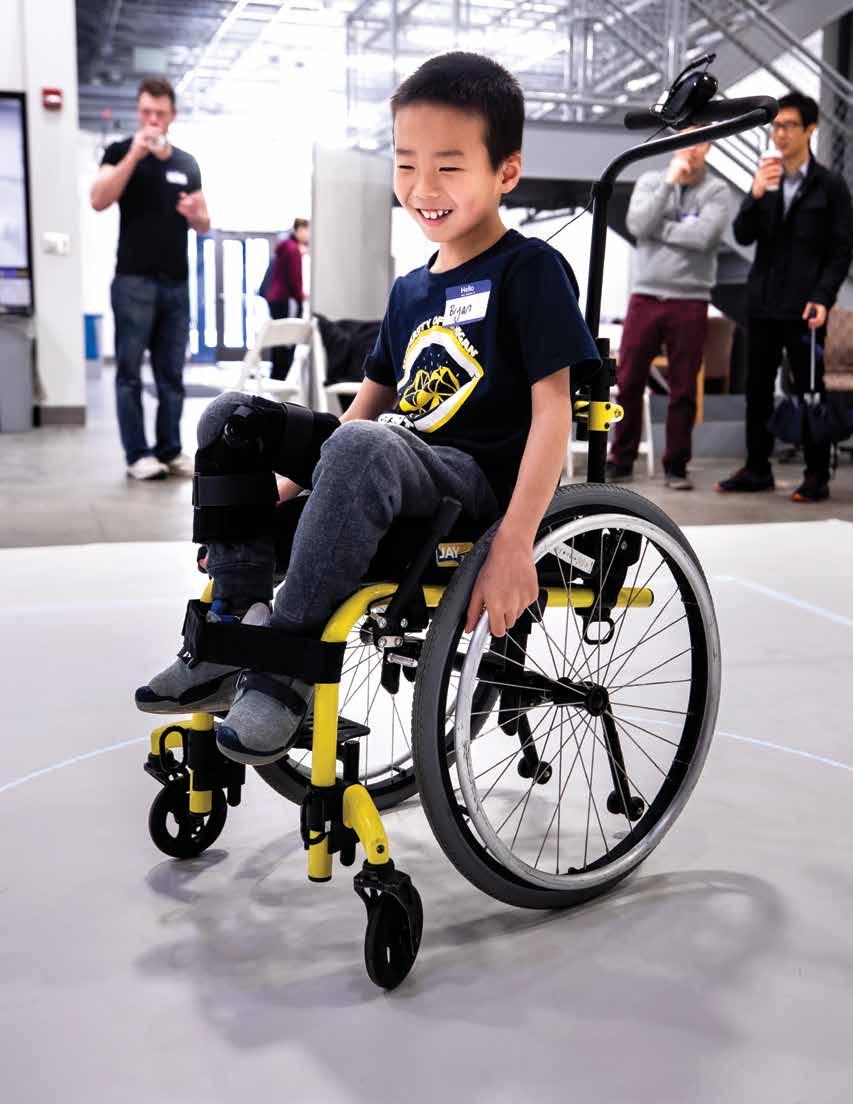 A participant tests out iGYM on North Campus in 2019.
Photo: Joseph Xu
A participant tests out iGYM on North Campus in 2019.
Photo: Joseph Xu
26
iGYM is Where Kids of All Abilities Can Play Together
As a power wheelchair user, James Falahee had become used to being left out.

“I think that the chance for disabled people to be able to participate in sports is very important, because throughout most of my life, I have been forced to sit on the sidelines and watch my friends play sports and games,” he told The University Record.
While there are invaluable adaptive sporting opportunities for those with mobile disabilities, such as powerchair football, these opportunities aren’t designed to allow disabled and able-bodied people to play together. Now, thanks to an interdisciplinary team of University of Michigan researchers, Falahee can play with and compete against his friends, regardless of anyone’s physical abilities, using iGYM.
iGYM is an augmented reality system that emulates a life-sized version of air hockey. The field, goals, and ball are projections that interact with players. Players can pass the ball to their teammates and score goals.
The project, funded by U-M’s Exercise and Sport Science Initiative (ESSI) program, is led by Prof. Roland Graf (Art & Design). Graf, with Profs. Sun Young Park and Michael Nebeling (Information) designed the initial concept of the project, but they needed someone to create the actual system. So they recruited ECE Prof. Hun-Seok Kim.
“The initial idea was to make a real physical robot, an autonomous ball, that actually moved around,” Kim says, “but that turned out to be a very challenging process.”
The team decided to create an augmented reality system instead. Two regular projectors are mounted on the ceiling next to a camera. A computer vision algorithm then compares each image frame to the reference image without any players, allowing the algorithm to detect when a player is on a certain area of the field.
“Based on that information, we can project the virtual balls and goals, and we simulate the physics between the ball and the person,” Kim says. “And that’s how the gameplay works.”
The team was particularly focused on including parameters for an inclusive competition. These parameters –such as the friction of the ball to the playing surface, the size and speed of the ball, the goal size, and the bounciness of the ball – could be adjusted for each individual so that the players’ skill levels would be more evenly matched.
“We found that having this ability to adjust the game parameters made it more enjoyable, more accessible, and more inclusive for everyone,” Kim says.
The aesthetics of the game can also be easily adjusted. You can change the color of the lines, the layout of the field, or the type of ball. You can also add audio of a crowd cheering every time a goal is scored or stadium chants to hype up the players. The team hopes to expand the program to simulate other games like bowling, ping pong, an interactive obstacle course, or life-size Pac-Man.
The team spent eight months developing the program, and it’s been up and running for over a year. Kim has used the past year to refine the system and has improved many of its algorithms.
“We can now predict where the player will be in the next image frame based on the history of the player in the previous frames,” Kim said. “This allows us to limit the search range for detecting a player, which makes the movement of the peripheral circle smoother and the overall system faster, because you’re reducing the number of computations required for image processing.”
A publication about the project, “iGYM: An Interactive Floor Projection System for Inclusive Exergame Environments” won the Best Paper award at CHI-PLAY 2019, a subconference of the international Computer Human Interface Conference
The game itself has been well-received by kids and adults alike, with many participants returning frequently.
“We had a case where these two brothers had never played a physical game before, because their abilities are quite different,” Kim said. “We saw some teary eyes from the parents, and it was a very rewarding moment to see them having a lot of fun.”
Various participants test out iGYM on North Campus in 2019.
27
Photo: Joseph Xu
Advancing Robotic Prosthetic Legs

Prof. Robert Gregg is working on two projects to advance the design and development of robotic prosthetic legs. Robotic prosthetic legs offer many benefits, especially for above-theknee amputees.
“Robotic legs have the potential to actually restore the more normative biomechanics of a biological leg,” Gregg says. This leads to less wear and tear on the individual’s joints.
In one project, Gregg is developing a robotic prosthetic leg prototype that uses small and powerful motors that were originally designed for a robotic arm on the International Space Station. The prototype is quieter and more energy efficient than current designs, and creates a more natural gait.
“Our prosthetic leg consumes approximately half the battery power of state-of-art robotic legs, yet can produce more force,” said Gregg.
Motors in robotic legs need to fit into the space that an ordinary limb would take up, and it has been difficult to summon the powerful force needed to swing the legs without resorting to several small motors and gears that end up being quite heavy and noisy.
Gregg’s group surmounted this by incorporating two of those stronger space station motors, one powering the knee and the other powering the ankle, which led to fewer gears.
In addition to enabling a more agile knee, reducing the number of gears brought the noise level down from the scale of a vacuum cleaner to a refrigerator. Also, regenerative braking was used to absorb some of the shock when the prosthetic foot hits the ground.
The amputees who tested the prosthetics in Gregg’s lab reported that they can feel the leg helping them push off the ground as they walk.
“In some cases, they have observed that they feel like muscles in their hips and back are working less with our leg, compared to their conventional leg,” said Gregg.
The team’s next step is to improve the control algorithms that can help the leg automatically adjust to different terrain, changes in pace and transitions between different types of activity.
Gregg is actively seeking commercial partners to help bring the technology to market.
In the second project, Gregg and co-PI Prof. Elliot Rouse (Mechanical Engineering) are developing new open source control software to expand the capabilities and responsiveness of robotic prosthetic legs.
Rouse released the first ever open-source design of a bionic leg last year, which focused on the hardware specifications. Gregg’s project focuses on the control software needed to make a robotic leg more responsive to physical cues.
“Our method of using continuous cues synchronizes the prosthetic leg to the intended motion of the human, rather than the other way around.” Gregg says. “It lets the user step over obstacles or kick soccer balls.”
The goal is to release the control software design to the public, furthering the speed of research and advancement. Having a starting template can shave years off a project and allow researchers to focus on a specific application or component.
An amputee tests the leg at the University of Texas at Dallas.
Photo: Locomotor Control Systems Laboratory
28
Autonomous Transportation
Driverless cars offer convenience – imagine being able to take a nap while you commute to work! – but they are more important for safety and accessibility. Nearly 1.25 million people die in road crashes each year, and an additional 20-50 million are injured or disabled. Autonomous vehicles have the potential to react much quicker and more efficiently than people, and do not suffer from distraction or sleepiness. In addition, there are many members of the population who can’t or don’t drive. For the elderly or disabled, robotaxis would offer independence and mobility at a fraction of the cost of current people-operated services, such as Uber or Lyft.
We’re getting closer, but there are still many challenges to be addressed. One such challenge is the ability of the control algorithms controlling lane keeping (LK) and adaptive cruise control (ACC), which helps vehicles maintain safe distances from vehicles ahead, to work in harmony.

When both LK and ACC are activated simultaneously, there’s no guarantee that they will work correctly – until now.
Jessy Grizzle, the Elmer G. Gilbert Distinguished University Professor, and a team of scientists from several universities have created a solution to ensure that controllers associated with LK and ACC behave in a formally correct way when both are activated. Their research follows the work of Prof. Necmiye Ozay and her team, who created the first-ever solution to this problem.
The team’s published research, “Correctness Guarantees for the Composition of Lane Keeping and Adaptive Cruise Control,” by postdoctoral researcher Dr. Xiangru Xu, Jessy Grizzle, Prof.
Paulo Tabuado (UCLA) and Aaron Ames (CalTech), received the IEEE Transactions on Automation Science and Engineering (T-ASE) Googol Best New Application Paper Award for 2019.
ECE alumnus Mitchell Rohde (BSE EE ’94; MS EE:S ’96; MS PhD BME ’97 ’00) is excited to apply his expertise in autonomous systems to accessibility through driverless vehicles. It’s one of the reasons he allowed his startup company, Quantum Signal AI, to be acquired by Ford.
“Our current transportation system has all these holes when it comes to accessibility for elderly folks or folks with disabilities or folks that are socially or economically disadvantaged,” Rohde says, “but autonomous vehicles can be on call 24/7 all year long at a fairly low cost.”
QS AI develops smart systems leveraging signal/image processing and control algorithms. The company has built products and solutions for customers worldwide for twenty years, with the last 15 focusing heavily on mobile robotics, autonomy, and related areas.
Many of the researchers from Ford will be working in the new Robotics building. Rohde hopes this will lead to even more opportunities to collaborate with U-M.
“We’ve been working with U-M basically since we started back in 1999,” Rohde says. “It’s always an exciting thing, and we’re always looking for great collaborations with faculty and for enthusiastic graduates to come and join the team.”
29
5G AND ECE: CONNECTING THE WORLD
5G, with its combination of ultra-low latency, high speed, high reliability, high capacity, and potential for ubiquitous use, will usher in a multitude of highly anticipated applications, while dramatically improving the functionality of existing wireless services. 5G technology is built on the work of electrical and computer engineers, and relies on ECE research to fulfill its tremendous promise.
According to a recent report commissioned by Qualcomm Technologies, the impact of 5G on global economic growth is expected to tip $13.2 trillion by 2035. Its use is expected to be so widespread as to put it in the same category of general purpose technologies as the printing press, electricity, the automobile, and the Internet.

The United States is committed to expediting 5G through the FCC’s 5G FAST Plan, which includes a proposed $9B 5G fund to bring the most advanced wireless services to underserved rural America.
Some of the most anticipated applications impacted by 5G include a truly massive Internet of Things; improved control and automation in manufacturing, energy, robotics, and autonomous vehicles; highly precise location tracking for traffic safety and
asset management; and remote healthcare. The new 5G will also be a key enabler of “smart” homes, cities, agriculture, energy, and grid. And for the average user – it will enable a more seamless experience for those trying to communicate with others remotely, especially when incorporating video and including the exchange of data-rich files.
This will all take time, and there’s plenty of work to do in order to take advantage of the possibilities inherent in 5G, the fifth generation technology standard for broadband cellular networks. Electrical and computer engineers will be applying their expertise in electronics, electromagnetics, antennas, chip design, control, signal processing, radio-frequency engineering, cyber-physical systems, telecommunications, and more, to optimize devices and build algorithms needed to exploit the potential inherent in 5G technology.
Here are a few current research projects related to 5G technology happening here at Michigan.
30
Massive IoT - Autonomous Driving
With 5G capable of connecting 1 million devices per square kilometer, we are building sensors and computers that are compatible with this new Massive IoT. For example, Prof. Hun-Seok Kim is developing a new type of VLSI system-onchip (SoC) that combines the adaptability of general-purpose processors with the efficiency of a specialized baseband modem integrated circuit. This hybrid system will be suitable for demanding 5G wireless applications that range from swarms of IoT sensor devices to autonomous vehicles and devices. It could also allow for a 5G wireless communication design that adapts to different environments through changes in software.
In the area of antenna design, Prof. Kamal Sarabandi and his team are developing a full-duplex antenna that can potentially provide services for twice as many users as that of current cellular networks. This antenna system has a wide range of applications, including autonomous vehicles, remote sensing, and biomedical imaging.

Sarabandi is also developing technology for vehicle-toeverything (V2X) communication to take advantage of the highest 5G speeds available at the millimeter-wave spectrum. With this technology, autonomous vehicles can connect to the cloud and access local information like point cloud of obstacles for precise geolocation and situational awareness, sharing intent and sensor data to adjacent vehicles and pedestrians, etc. The result will be higher levels of safety for autonomous driving.
5G presents an entire new set of challenges to the design of mobile devices. To support many wireless technologies (such
as Wi-Fi, Bluetooth, GPS, 3G, 4G, etc.), today’s mobile devices already contain a significant number of RF switches and badpass filters to set the device operating frequency. 5G will only continue to increase the number of communication frequency bands and accordingly the number of filters and switches, which will increase the circuit size, complexity, and cost.
Prof. Amir Mortazawi and his group are looking to better support 5G by creating a new class of reconfigurable radio frequency (RF) acoustic devices that are only tens of micrometers in size – or the width of a human hair. Working with Mortazawi, doctoral student Milad Zolfagharloo Koohi pioneered a way to combine switching and filtering functionalities onto a single device.
“[We are] laying the ground for the upcoming 5G technology and allowing the next generation of communication devices to be much faster and cheaper,” said Koohi.
Michigan’s Mcity, the advanced mobility research center featuring 16 acres of roads and traffic infrastructure, now has a 5G ultra wideband network.
Prof. Necmiye Ozay is developing formal methods for driving safety, where one of the goals is to understand to what extent 5G (or other communication schemes with different range and bandwidth properties) can improve safety. One goal of the project is to lengthen the time that a car can predict its driving path, and share this information with surrounding vehicles. She will be testing new algorithms being developed for highway safety at Mcity.

31
Michigan’s Mcity
Edge Computing
5G is expected to dramatically increase the demand for computing at the edge of a wireless network, so-called edge computing, rather than sending all of the data to a cloud server It is critical for autonomous and semi-autonomous driving and other mission critical applications.
To facilitate edge computing, Prof. Robert Dick is developing highly heterogeneous, low-rate approaches to data capture, thereby reducing data transfer (and analysis) requirements with little impact on decision quality. The approach uses a biologically inspired, multi-round process to guide later captures based on observations in earlier captures.
Similarly, Prof. Vijay Subramanian and colleagues are investigating how machine learning techniques can help better optimize network operations for improved wireless service.
Impact on the Grid
5G will facilitate efforts to control both traditional power system generating resources and distributed energy resources, which will in turn improve the flexibility, reliability, and economics of the nation’s grid. Profs. Johanna Mathieu and Ian Hiskens are conducting significant research in this area, while partnering with industry and other institutions.
One project is addressing the electric load control problem, in which the goal is to coordinate the power consumption of thousands of small electric loads like air conditioners and refrigerators to help the grid balance supply and demand without inconveniencing electricity consumers and while respecting the physical limitations of the power distribution network. This will ultimately support the integration of more wind and solar power on the nation’s grid.
Hiskens and Mathieu are also investigating the limitations and physical issues that arise using typical communication networks to coordinate flexible loads. And they will be developing control strategies to overcome those issues, many of which could significantly change with high fidelity 5G networks.
Reliability
Communication is ultimately the transfer of information from one point to another. When done digitally, errors in transmitted bits can result in lost or damaged details. Prof. Hessam Mahdavifar is working to design schemes that can correct such errors and improve the reliability of communication systems for the next generation of the smart world, 5G, and beyond.
Mahdavifar has two projects focused on channel coding, which creates methods to construct codes that can correct errors that happen during the transfer of information. One is addressing the world of billions of connected devices through the Internet of Things; he plans to contribute to the development of wireless
networks that can achieve the ultimate limits of narrowband and wideband (i.e., 5G) communications.
The other project addresses the challenges inherent in achieving the best communication possible in 5G through adopting errorcorrecting codes.
“What’s really exciting about 5G for us coding theorists is that the entire channel coding paradigm has been redesigned in 5G, so we’ll be using entirely new codes to solve these problems,” Mahdavifar says.
Bringing 5G to Rural Areas
Professor Vijay Subramanian is leading a project to respond to the nation’s call for pervasive 5G in sparsely populated areas. The problem is that companies feel it’s not cost effective to install the same coverage in rural or even some suburban areas as in urban areas. To help solve this problem, his team, that includes Profs. Kamal Sarabandi and Robert Dick, is developing a hybrid powerline/wireless architecture that uses existing infrastructure as well as low-power wide area networking (LPWAN) protocols to bring 5G to homes, schools, and even buses in the Upper Peninsula.

32
First Digital Single-chip Millimeter-wave Beamformer Will Exploit 5G Capabilities
The first fully-integrated single-chip digital millimeter-wave (MMW) beamformer, created by Prof. Michael Flynn and his team, opens up new possibilities in high-frequency 5G communications. The technology could be used to improve vehicle-to-vehicle communication, autonomous driving, satellite internet, and national defense, to name a few.


Beamforming allows a device that is transmitting signals to point them in a particular direction, as opposed to having the signals radiate out in all directions – which can lead to significant interference and loss of efficiency. It is an essential technique for MMW communication, which occurs at a relatively high frequency (typically between 24GHz and 100GHz). This high frequency communication allows for high-speed data transfer, one of the key advantages of 5G.
Analog beamforming has been a standard approach for researchers, but Flynn has been investigating a digital approach to exploit advantages such as large-scale beamforming, highly accurate beam-patterns, flexibility, and the ability to generate multiple beams simultaneously.
“With analog beamforming, you can only listen to one thing at a time,” said Flynn. “But there are a number of new applications where you want to listen to multiple things at the same time, and switch quickly between them.”
For example, Flynn can imagine using digital beamforming on drones sent into disaster areas to provide emergency Internet
to people in trouble. Similarly, there are plans to launch satellites in space in order to provide connectivity to people who live outside cities, where access to the Internet can be spotty or non-existent. Having phones with digital wireless beamforming capability would provide individuals with more reliable access to the Internet.
Flynn and his group built a 28GHz MMW digital beamformer, with a custom-designed antenna array consisting of 16 antennas in single integrated circuit. It is the first known single-chip system to do MMW digital beamforming. In part because it’s a single chip, the power and size are better than current digital systems by an order of magnitude. And because it’s digital, the signal can both be pointed in any direction, and can “listen” in from four different directions at once.
“People never stop chasing for better and better connectivity,” said doctoral student Lu, who received a best student paper award for the research. “Millimeter-wave digital beamforming may be a gamechanger in the world of 5G.”
Commercializing Technology to Take 5G to the Next Level
Two ECE postdoctoral researchers and alumni are steadily building their young company, SkyGig, to bring the next generation of high-speed wireless connectivity to the 5G ecosystem, satellite communications (Satcom), and beyond.
After earning first place and $75K in the ECE Innovator Program in 2018, being awarded a Michigan Translational Research and Commercialization (MTRAC) grant in 2018-19, and founding SkyGig in 2019, Dr. Armin Jam and Dr. Avish Kosari have been recognized by various awards and programs with more than $1M in funding sponsored by NSF, NASA, and Activate, among others. They are now expanding their team to accelerate development and commercialization of their disruptive technology.
6G and Beyond
“Millimeter-wave (mmWave) technology is at the frontier of wireless communications, and as such, still provides significant challenges,” said Jam. “At SkyGig, we are targeting the higher portion of the radio frequency spectrum, referred to as the millimeter-wave band, with key applications in 5G, SatCom, and automotive radar, among other emerging markets.”
Jam and Kosari aim to lead in this area by bringing innovative holistic approaches to mmWave transceiver technologies through their combined expertise in electromagnetics and antennas, and RF integrated circuits, respectively.
Looking beyond 5G, Prof. Ehsan Afshari is pushing the existing boundaries in high frequency communication by combining novel circuit topologies and efficient systems. He is currently involved in a project to design and implement a fully integrated communication link at 220GHz that can support data rate of 60Gbps, which is 3x that of 5G. This is at a distance of 10m, but the proposed system can easily be modified for longer distances (>100m) with either lower data rate (below 20Gbps), or the same data rate but using off-chip high gain antenna arrays on the printed circuit board.
Among Afshari team’s accomplishments are the highest effective isotropic radiated power among all radiators above 200 GHz, a 220GHz radio with 24Gbps data rate at a distance of 1m, the highest output power among all integrated circuit sources at and above ~500 GHz, the first fully integrated THz phased array on silicon, the first coherent THz imaging system on silicon, and the first fully integrated >100 GHz FMCW radar on silicon.
In summary, 5G is poised to become a technology that will drive the economy and dramatically impact virtually every aspect of modern society – with ECE right in the center of the action.
33
A 40Gbps transmitter at 220GHz.
Complete system board with a 16-antenna beamformer array in the center.
Into the Unknown With ECE
Space exploration has long captivated the world. From seeking out alien life to discovering new resources to finding another home for humanity, the possibilities in the final frontier seem endless.
But to get there, we’re going to have to solve a variety of challenges. Our own electrical and computer engineers have long been at the heart of the solutions needed so that we can boldly go where no one has gone before. From new methods of space propulsion, to unravelling the mysteries of spatial phenomena, to crewing a NASA shuttle mission, our professors, students, and alums have made their mark on the field.

34
Photo: NASA/ESA Hubble Space Telescope
“We were in a high inclination orbit, and you could see the aurora over Antarctica standing up as a green curtain with waves on the front of it. This was in early August during the Perseid showers, so while you’re watching the aurora, you’re seeing shooting stars underneath you, below you,” said ECE Prof. Anthony England, Dean of the College of Engineering and Computer Science at U-M Dearborn and former NASA astronaut who worked on several of the Apollo and shuttle missions. “It’s pretty spectacular to see the Earth that way.”
If you watched the film Apollo 13, you have already seen England at work. He helped write the procedure to build the CO2 scrubber that enabled the astronauts to return safely to Earth –the scene in the movie where the team had to figure out how to fit a square peg in a round hole.

For their extraordinary work, England and the rest of the team received the President’s Medal of Freedom in 1970. While England’s opportunity to fly to the Moon was lost when Apollo missions 18 through 20 were cancelled, he did fly on Space
Space Travel: Make it So
Shuttle Challenger in the summer of 1985. His mission focused upon solar astronomy and plasma physics.
Prof. Brian Gilchrist, the Director of the Space Physics Research Lab and the XTRM labs, may not have flown in space like England, but he has spent much of his career looking to advance spacecraft technology. One of his projects, in partnership with NASA and other universities, explores the possibility of using space electrodynamic (ED) tethers as a means of pushing and pulling against the Earth’s magnetic field. This would solve a major issue associated with long-term space travel around planets with magnetic fields: propellant.
Propellant is heavy to get into space and requires a lot of storage for long-term travel, which limits the design possibilities of spacecraft. What’s more, there are no stops on the way to Mars for you to conveniently pull over and top-up should you start to run low. Using space tethers could minimize or eliminate all-together the amount of propellant needed once the craft enters space orbit, and it could help keep space stations in orbit. While tethers are one option, another option for deep space travel is to mine the needed resources. Alum Hannah Goldberg (BSE MSE EE 2003 2004) was a Senior Systems Engineer at Planetary Resources, Inc., a company that believes asteroids could function as interplanetary gas stations.
Asteroids contain water, often separated into hydrogen and oxygen, which is a typical propellant for spacecraft. For extended Deep Space travel, you can’t possibly carry enough water from Earth – the ship would never get off the ground. The benefit of asteroids is that they’re abundant – over 1,500 are easier to reach than the Moon – so you wouldn’t have to travel so far to get access to more fuel.
Goldberg helped further the company’s goal to send up small unmanned robotic spacecraft to mine the water and any precious metals that may also be on the asteroids, such as platinum. The next step, using the water as gasoline for larger spacecraft, is years if not decades down the road.
Goldberg is currently a senior systems engineer at GomSpace, a commercial provider of Cubesat components, platforms, and solutions. She serves as the technical lead in the development of a constellation of communications satellites.
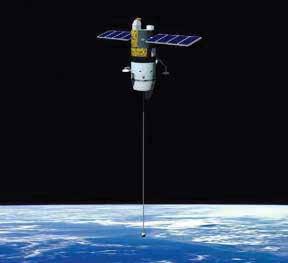
35
An example of a tether used for an Orbit Transfer Vehicle (small to large scale) to enable boost/deboost/inclination change.
Photo: NASA
Prof. Anthony England (left) and fellow astronaut John Bartoe are controlling the solar astronomy and plasma physics payloads through computer interfaces on aft flight deck of Space Shuttle Challenger during late July and early August of 1985.
Spatial Anomalies: The Great Mysteries

Dr. Katie Bouman (BSE EE 2011) was famously part of the international team of over 200 scientists who photographed a black hole for the very first time. She led the group that developed the tests and techniques used to verify the black hole image.
Black holes are so far away, a telescope capable of photographing them would need to be the size of the earth itself. Bouman’s team came up with an alternative: a network of radio telescopes. This conglomerate, known as the Event Horizon Telescope (EHT), features eight radio observatories that include bases on six mountains and four continents.

When it came time to reconstruct the actual black hole image, the team wanted to safeguard against any potential for bias, so they split into four groups. Each group used a specific method of image reconstruction (there are different approaches) and worked entirely in isolation. No group was given any information about the results of the other teams.
“After seven weeks, we all gathered together in Cambridge, Massachusetts, and revealed our images to each other,” Bouman said during a visit to campus last January where she spoke about the entire project. “It was one of the happiest moments. Seeing the same basic structure result from each team and method made me really confident in the results that we were getting.”
The image that Bouman helped create provides confirmation of more than a century of theory and will open up entirely new avenues of study.
Like Bouman, Prof. Louise Willingale also works to deepen our understanding of some of the most complex and awe-inspiring phenomena in the galaxy.
With the help of the T-cubed laser and HERCULES, housed at the Gérard Mourou Center for Ultrafast Optical Science, and other external facilities such as the OMEGA EP laser at the Laboratory for Laser Energetics at the University of Rochester, Willingale uses laser light to produce plasma. Plasma is the fourth state of matter that consists of an ionized gas and contains electrons and ions that respond to electromagnetic fields.
Once she’s produced the plasma, she’s able to study processes like magnetic reconnection, which is the breaking and reconnecting of oppositely directed magnetic field lines. This process is central to some of the most awe-inspiring and spectacular spatial anomalies, including solar flares and the famous Northern Lights, but it can also inform us about many other kinds of spatial phenomena, such as the structure of pulsar jets and effects associated with neutron stars.
36
The first ever image of a black hole located in the center of Messier 87 (M87), an elliptical galaxy some 55 million light years from Earth. Image created by the Event Horizon Telescope (EHT) and released by the National Science Foundation.
This artist’s concept from 1972 is a cutaway illustration of Skylab with the Command/Service Module docked to the Multiple Docking Adapter.
Photo: NASA
Pioneers in Space
When people first ventured into space, we gained not only an iconic image of the Earth but an entirely new platform for research. Specialized tools needed to be developed, and professors Fawazz Ulaby, Kamal Sarabandi, and Leung Tsang were at the forefront of this innovation.
Ulaby, the Emmett Leith Distinguished University Professor of EECS and Arthur F. Thurnau Professor, pioneered remote sensing systems that now fly aboard satellites operated by NASA as well as the European, Canadian, and Japanese space agencies. Specifically, he designed the first radar to ever fly in space. The home of his radar system was aboard Skylab, America’s first space station. Ulaby went on to receive the NASA/Department of the Interior William Pecora Award for shaping the direction of the space program in microwave remote sensing.
Sarabandi, the Rufus S. Teesdale Professor of Engineering and Director of the Radiation Laboratory, has been involved
The Future
While the past 50 years have seen a lot of advancements in space exploration, it’s the younger generation who will bring about the next Giant Leap for Mankind. Undergrad Havel Liu is working on a project to design a constellation of miniature satellites, called “CubeSats,” which would revolutionize global communication. If successful, the project could be a blueprint for future interplanetary communication arrays.
The Michigan Mars Rover team is devoted to advancing vehicles for the exploration of other planets. Their rover can function over difficult, uneven terrain, operate complicated tasks with a robotic

in mission planning and experimentation for many of NASA’s space-borne remote sensing imaging radars including NASA’s 1994 Shuttle Imaging Radar (SIR-C), 2000 Shuttle Radar Topography Mission (SRTM), and 2015 Soil Moisture Active Passive (SMAP). The active and passive polarimetric radar calibrators and external calibration techniques developed for these missions have become the standard approach used worldwide. In addition to his outstanding contributions, he has also served as a member of the NASA Advisory Council.
Tsang’s contributions center on microwave remote sensing theories for satellite missions. Using microwave sensors mounted on satellites for continual global monitoring, Tsang played a major role developing theoretical models for measuring many facets of the planet’s workings. His research is making it easier to monitor climate change, manage water and agricultural resources, predict the weather, and more.
arm, and autonomously localize and navigate the area. Most importantly, their rover collects soil samples to test for signs of life.
“There’s a lot that we don’t know about the material – and the extraterrestrial material – of other planets,” said MRover President Michelle Gehner, an undergrad in EE. “That’s why I really wanted to learn about how to engineer better ways to create instruments that will help us explore other worlds.”
37
The Michigan Mars Rover Team celebrates their best ever finish at the University Rover Challenge held in Utah in 2019.
Why We Care About Plasma
Plasma science has the potential to bring societal benefit in medicine, energy, electronics, and more — including helping us deal with pandemics.
Collaboration and communication in university programs and governmental agencies are key to ensuring U.S. leadership in plasma science, according to the decadal study co-chaired by Prof. Mark Kushner, Director of the Michigan Institute for Plasma Science and Engineering.
Plasma, the least familiar to most people of the four states of matter, is also the most prevalent in the universe. Consisting of ionized gas, plasma is found naturally in the Earth’s ionosphere and magnetosphere, stars and solar wind, auroras, and lightning. Plasmas are also artificially engineered to create a wide array of society-enhancing technologies.
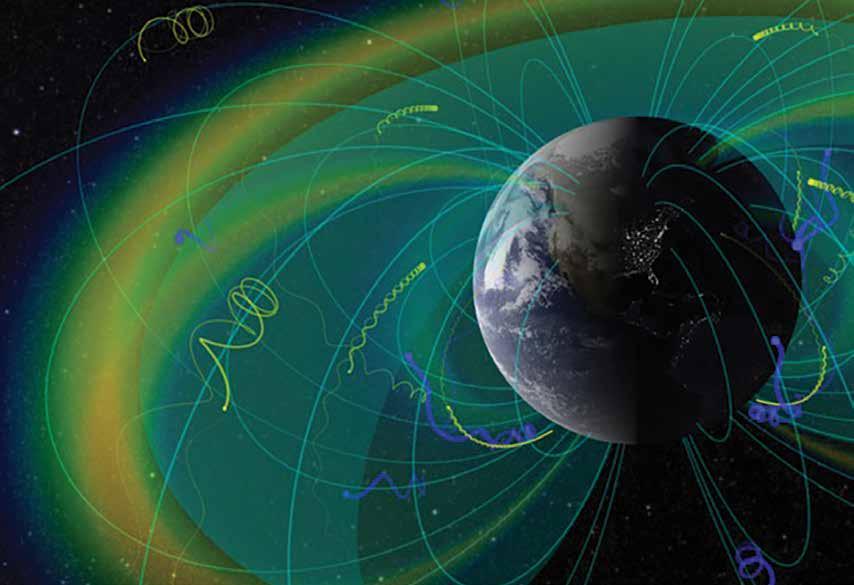
“Our entire information technology revolution wouldn’t have happened in the absence of the ability of plasma to make the tiny little features in microelectronic devices,” said Mark Kushner, the George I. Haddad Professor of Electrical Engineering and Computer Science and director of the Michigan Institute
Watch the series of MiPlasma videos by leading plasma experts around the world, produced by the Michigan Institute for Plasma Science and Engineering.
Mipse.umich.edu
for Plasma Science and Engineering (MIPSE). The research activities in MIPSE span the entire field of plasma science, including harnessing plasmas for fusion energy; plasmas to clean water; plasmas for space propulsion and understanding the plasma universe.


We spoke to Kushner, co-chair of Plasma Science: Enabling Technology, Sustainability, Security and Exploration (Plasma 2020), the decadal study about plasma science in the United States, to explain its findings and recommendations on the future of plasma science research and education, as well as why we as a society should care about it.

38
Why is Plasma Science So Important?


Plasma science and plasma-enabled technologies have revolutionized modern society. This impact starts at the very largest scale of the universe, attempting to answer, for example, where magnetic fields come from, how galaxies are formed, and what produced the conditions that enable life on Earth.

At the other extreme, plasma science is fundamental to the manufacture of semiconductor devices. Plasmas are used to make the chips that power Zoom calls, the internet, all computers, and other electronic and microelectronic devices. And it will lead to the development of new technologies ranging from better, faster electronics to new modes of cancer therapy and food safety, from producing carbon-free electricity using fusion power to compact particle accelerators and electrical propulsion for spacecraft. Plasma science touches all of these disciplines.
About Plasma 2020
The latest Decadal Study of Plasma Science, conducted by the National Academies of Science, Engineering and Medicine, calls for collaboration among federal agencies to realize the full benefits of a field that runs the gamut from the cosmological scale, shedding light on the early days of the universe, to the nanoscale, enabling the etching of semiconductors into ever smaller circuits.
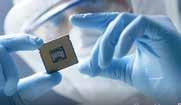

The study, Plasma Science: Enabling Technology, Sustainability, Security and Exploration, was released in draft form over the summer. Since then, Mark J. Kushner and co-chair Gary Zank of the University of Alabama have been giving briefings on the status and future of the field to government agencies, including: the National Science Foundation, Department of Energy, Department of Defense, the Science and Technology Committee staff of the House of Representatives and the Senate, the Office of Science and Technology Policy, and the Office of Management and Budget.
The decadal study was funded by the National Science Foundation, Department of Energy, Office of Naval Research, and Air Force Office of Scientific Research.

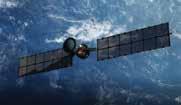
Read the report:
https://www.nap.edu/read/25802/chapter/1
39
Mark Kushner
Q & A with Mark Kushner
Visualization of the radiation belts with confined charged plasma particles and plasmapause boundary.
Credit: NASA’s Scientific Visualization Studio
What’s the Biggest Takeaway From the Decadal Study?
One of the leading recommendations of the study is that federal agencies should collaborate on interdisciplinary initiatives that enable translational research, research that takes fundamental concepts and moves them towards applications and technology.
We are good about funding fundamental plasma science through agencies such as the Department of Energy, National Science Foundation, Department of Defense and NASA— though more funding is needed in basic science and for new facilities. To take that next step and make better use of the basic research, the more fundamentally oriented agencies need to collaborate with agencies that could benefit from plasma-based technologies such as the National Institutes of Health, the Environmental Protection Agency, U.S. Department of Agriculture, and the Food and Drug Administration. If we linked those agencies through inter-agency collaborations, we would enable translational research in a continuous way, starting with the fundamentals and adapting those fundamentals into technologies. With more feedback between the research on fundamentals and the final applications, the transition of plasma science to societal benefit is more rapid and more focused.
How Has the Michigan Institute for Plasma Science and Engineering (MIPSE) Served the Discipline?
MIPSE brings together plasma researchers at the University of Michigan, Michigan State University, and around the world to investigate fundamental plasma phenomena and translate advances in plasma science into society benefiting technologies. There are currently more than 80 members representing more than 13 different disciplines.
In addition to our formal partnership with Michigan State University and informal partnerships with other universities, we bring international scholars here to visit and foster collaborations. We have a video series where we interview internationally renowned scientists and make them available for others around the world to use in their outreach in plasma science.
In addition, we advertise other people’s seminar series, we post international collaborative efforts, and we even offer a jobs board. This jobs board includes postings from around the world.
All of this is directed at community building for the health of the discipline.
Examples of Plasma Science Projects at University of Michigan
DOE Center for Low Temperature Plasma Interactions with Complex Interfaces


Parker Solar Probe: ‘We’re missing something fundamental about the sun’

Water Purification: Treating PFAS water contamination with cold plasma
ZEUS Laser Facility: Most powerful laser in the U.S. to be built at Michigan

Plasma Sterilization of Air: A plasma reactor zaps airborne viruses – and could help slow the spread of infectious diseases

Plasma Sterilization of Surfaces:
Plasma jet wands could rapidly decontaminate hospital rooms


Center for Laboratory Astrophysics: To study astrophysical events




40
HERCULES TO ZEUS: The Most Powerful Laser System in America
HERCULES (High-Energy Repetitive CUos LasEr System), the ultrafast laser developed in the Gérard Mourou Center for Ultrafast Optical Science (CUOS), set the world record for on-target laser intensity in 2003. The ultra-fast laser pulse generated by HERCULES is 50 times more powerful than all the world’s power plants combined. HERCULES still held the record in 2016, but new facilities knocked the laser off the pedestal in more recent years.
Today, ECE faculty are leading the design and creation of ZEUS (Zettawatt-Equivalent Ultrashort pulse laser System), a 3.0 petawatt system that will be one of the most advanced particle accelerators in the world, and the highest-power laser system in the U.S. In the process, HERCULES, which operated at peak power up to 500TW, will essentially be upgraded to become ZEUS. ZEUS will have two modes of operation, one for experiments using a combined single 3 PW beamline, and the other for dual beam 2.5 PW and 500 TW experiments. Advancing to a 3.0 petawatt system could help unlock secrets of the universe, advance cancer treatments, improve security screenings for nuclear threats, and much more. It is expected to provide unique and world-leading capabilities for scientific, medical, defense, and industrial research.
Zeus will operate as a National Science Foundation User Lab, which will fund outside researchers from all over the world to come and work on the laser. Prof. Karl Krushelnick is the Project Director and Franko Bayer is the Project Manager.

“It’s exciting for the students and our research here, because we’ll have so much cross-pollination with people bringing in their ideas,” says Prof. Louise Willingale, a Co-PI who will eventually use ZEUS for her research. “We’re hoping it will ensure U-M continues to be a hub for this type of research in the U.S.”
“The amount of hardcore physics that we’ve been able to do has been a little bit limited by the intensity of our current laser systems,” says ECE research scientist Dr. John Nees, who is one of the chief designers of ZEUS. “Upgrading from the HERCULES level to the ZEUS level puts us at a place where we can have very, very strong interactions between the laser light and the particles that the laser accelerates.”
Systems like ZEUS can operate on such high power because the laser pulses are extremely short. The light pressure that is generated during this process is found in the interior of stars.
Like HERCULES, ZEUS will be housed in CUOS, which was established in ECE as an NSF Science and Technology Center in 1990. CUOS established Michigan as a leader in ultrafast optical science. It also served as a catalyst for the thriving optics community that now exists in Southeastern Michigan.
The first director of CUOS, Prof. Emeritus Gérard Mourou, later received the 2018 Nobel Prize in Physics along with his former student, Prof. Donna Strickland, for their method of generating high-intensity, ultra-short optical pulses known as “chirped pulse amplification.”
Chirped pulse amplification led to the development of the safer, bladeless version of LASIK eye surgery, which tens of millions of people worldwide benefit from today. Mourou refined much of that technique during his nearly 20-year career at U-M, and ZEUS offers an opportunity for researchers to pursue the next great achievements in science.
The facility is expected to be fully operational by September 2023.
41
ECE research scientists Anatoly Maksimchuk and John Nees demonstrate HERCULES.
Photo: Joseph Xu
A Better Gyroscope for Autonomous Navigation Without GPS
Khalil Najafi, the Schlumberger Professor of Engineering, and his team have developed a small, inexpensive, and highly accurate gyroscope, which could help drones and autonomous cars stay on track without a GPS signal.
“Our gyroscope is 10,000 times more accurate but only 10 times more expensive than gyroscopes used in your typical cell phones,” Najafi said. “This gyroscope is 1,000 times less expensive than much larger gyroscopes with similar performance.”
Most smartphones contain gyroscopes to detect the orientation of the screen and help figure out which way we’re facing, but their accuracy is poor. They’re the reason why phones often incorrectly indicate which direction a user is facing during navigation.

It doesn’t matter much to a human on the street or behind the wheel, but a driverless car could get lost quickly with a loss of GPS signal. Inside their backup navigation systems, autonomous vehicles currently use highperformance gyroscopes that are larger and much more expensive.
“High-performance gyroscopes are a bottleneck, and they have been for a long time. This gyroscope can remove this bottleneck by enabling the use of high-precision and low-cost inertial navigation in most autonomous vehicles,” said assistant research scientist Jae Yoong Cho.
Better backup navigation equipment could also help soldiers find their way in areas where GPS signals have been jammed. It could also speed up warehouse robots.
The key to making this affordable, small gyroscope is a nearly symmetrical mechanical resonator, which produces a ringing tone when struck. The ring is crucial to the gyroscope’s function. The complete device uses electrodes placed around the glass resonator to push and pull on the glass, making it ring and keeping it going.

Photo: Najafi Group
Cho and Najafi are commercializing the technology through their startup company, Enertia Microsystems. The gyroscope was developed in the Lurie Nanofabrication Facility.
A Self-erasing Chip for Security and Anti-counterfeit Tech
Self-erasing chips developed by Prof. Parag Deotare’s group, in collaboration with Prof. Jinsang Kim in materials science and engineering, could help stop counterfeit electronics or provide alerts if sensitive shipments are tampered with. The chips rely on a new material that temporarily stores energy, changing the color of the light it emits. It self-erases in a matter of days, or it can be erased on demand with a flash of blue light.
“It’s very hard to detect whether a device has been tampered with. It may operate normally, but it may be doing more than it should, sending information to a third party,” said Deotare. With a self-erasing barcode printed on the chip inside the device, the owner could get a hint if someone had opened it to secretly install a listening device. Or a barcode could be written and placed on integrated circuit chips or circuit boards, for instance, to prove that they hadn’t been opened or replaced on their journeys. Likewise, if the lifespan of the barcodes was extended, they could be written into devices as hardware analogues of software authorization keys.
The self-erasing chips are built from a three-atom-thick layer of semiconductor laid atop a thin film of molecules based on azobenzenes—a kind of molecule that shrinks in reaction to UV light. Those molecules tug on the semiconductor in turn, causing it to emit slightly longer wavelengths of light. To read the message, you have to be looking at it with the right kind of light.
The semiconductor itself is a “beyond graphene” material, said Deotare, as it has many similarities with the Nobel-Prize-winning nanomaterial. But it can also do something graphene can’t: It emits light in particular frequencies.
Next steps for the research include extending the amount of time that the material can keep the message intact for use as an anti-counterfeit measure. The team aims to bring this technology to market.
42
Resonator and electrodes. The resonator is made of glass, which enables it to vibrate for long periods.
ECE Research Snapshots
This message will self-destruct in seven days, or it can be erased with a flash of blue light. Photo: Che-Hsuan Cheng
3D Transistor Arrays Can Take Us Beyond Moore’s Law
Silicon integrated circuits, which are used in computer processors, are approaching the maximum feasible density of transistors on a single chip—at least, in two-dimensional arrays. Now, Prof. Becky Peterson and her group have stacked a second layer of transistors directly atop a state-of-the-art silicon chip.
They propose that their design could remove the need for a second chip that converts between high and low voltage signals, which currently stands between the low voltage processing chips and the higher voltage user interfaces.


“Our approach can achieve better performance in a smaller, lighter package,” said Peterson.
Moore’s Law holds that computing power per dollar doubles roughly every two years. As silicon transistors have shrunk in size to become more affordable and power efficient, the voltages at which they operate have also fallen. Higher voltages would damage the increasingly small transistors. Because of this, state-of-the-art processing chips aren’t compatible with higher-voltage user interface components, such as touchpads and display drivers. These need to run at higher voltages to avoid effects such as false touch signals or too-low brightness settings.
“To solve this problem, we’re integrating different types of devices with silicon circuits in 3D, and those devices allow you to do things that the silicon transistors can’t do,” said Peterson.
Because the second layer of transistors can handle higher voltages, they essentially give each silicon transistor its own interpreter for talking to the outside world.
“This enables a more compact chip with more functionality than what is possible with only silicon,” said Youngbae Son, recent PhD graduate in ECE.
The research was published as “Monolithic integration of high-voltage thin-film electronics on low-voltage silicon integrated circuits using a solution process,” Y. Son, B. Frost, Y. Zhao and R. L. Peterson, Nature Electronics 2 (11): 540-548 (2019).
The devices were fabricated in the Lurie Nanofabrication Facility.
43
An illustration of a step in the production process, injecting the zinc-tin-solution atop the spinning silicon chip. Illustration by Youngbae Son and Rose Anderson
Ongoing research in the Lurie Nanofabrication Facility.
Conductive, Transparent Plastic
In an effort to improve large touchscreens, LED light panels and window-mounted infrared solar cells, a team led by Prof. Jay Guo has made plastic conductive while also making it more transparent.
They provided a recipe to help other researchers find the best balance between conductivity and transparency by creating a three-layer anti-reflection surface. The conductive metal layer is sandwiched between two “dielectric” materials that allow light to pass through easily. The dielectrics reduce the reflection from both the plastic and metal layer between them.
“We developed a way to make coatings with high transparency and conductivity, low haze, excellent flexibility, easy fabrication and great compatibility with different surfaces,” said Guo.
Guo is continuing to move the technology forward, collaborating on a project that uses transparent conductors in solar cells for mounting on windows. These could absorb infrared light and convert it to electricity while leaving the visible spectrum to brighten the room. He also proposes large panel interactive displays and car windshields that can melt ice the way rear windows can.
The University of Michigan has licensed the technology to the startup company Zenithnano, co-founded by Guo, to pursue commercialization.
Changyeong Jeong, an ECE doctoral student, measures how well light passes through a sheet of flexible transparent conductor. The material sandwiches a thin layer of silver between two “dielectric” materials, aluminum oxide and zinc oxide, producing a conductive anti-reflection coating on the sheet of plastic.

 Prof. Jay Guo holds a sheet of flexible transparent conductor.
Photo: Robert Coelius
Prof. Jay Guo holds a sheet of flexible transparent conductor.
Photo: Robert Coelius
44
Photo: Robert Coelius
Nano-LEDs for Next-generation Displays

NS Nanotech, a U-M startup co-founded by Prof. Zetian Mi, announced the creation of a smaller, more energy-efficient light-emitting diode that aims to offer brighter, crisper displays for massive signs, mobile phones, and other devices. The LED draws only half the power and lasts twice as long on a single charge as any of today’s smartphones.
Mi said the demonstration shows the feasibility of a new generation of green LEDs and represents a significant innovation within the industry.
“Imagine a mobile phone with a brighter and crisper display than you have ever seen, but which draws only half the power and lasts twice as long on a single charge as any of today’s smartphones,” said Mi, who led the team that developed the technology at Michigan and McGill University in Montreal.
The company’s underlying research uses new methods for growing nano-LEDs and their resulting structures. That approach boosts efficiency and performance while lowering costs— bridging a gap that has historically limited LED use in numerous markets.
NS Nanotech, which closed its first round of seed funding last year, says it envisions its technology initially being used in microLED displays and then expanding into health, energy efficiency and sanitation applications. The same technology used in such displays is expected to be capable of delivering invisible, ultraviolet-spectrum light for water and air purification as well as medical equipment sterilization.
Catching Nuclear Smugglers With Algorithms
A new algorithm could enable faster, less expensive detection of weapons-grade nuclear materials at borders, quickly differentiating between benign and illicit radiation signatures in the same cargo.
The algorithm is capable of identifying weak radiation signals, such as might be seen from plutonium encased materials that absorb radiation. It works even in the presence of a high radiation background, including everyday sources such as cosmic rays from space and radon from the rock underfoot.

“The design of the high accuracy radiation detection algorithm was propelled by two major insights,” said Prof Al Hero. “The first was that machine learning combined with physics modeling can do better together than either can do alone. The second was that the mathematical model should be designed for accurate identification of the sources of radiation instead of designing it to quantify the strength of these sources, which was what previous algorithms focused on.”
This research began at U-M as part of the Consortium for Verification Technology, a 5-year $25 million nuclear nonproliferation research program funded by the U.S. Nuclear National Security Administration, led by Prof. Sara Pozzi in the Department of Nuclear Engineering and Radiological Science. Dr. Angela DiFulvio, a former postdoctoral researcher on the project, continued the work when she moved to the University of Illinois in 2018.
“This work is a powerful example of the benefit of close and sustained collaboration between computational data scientists and nuclear engineers, resulting in major improvement of nuclear radiation detection and identification,” Hero said.
45
THE POWER OF DIVERSITY
Electrical and Computer Engineering at Michigan is committed to ensuring our environment is one that celebrates diversity, equity, and inclusion for all members of the ECE and U-M community. This commitment is based on the belief that real solutions can only be found when people from all identities and walks of life have seats at the table and opportunities to lead, and the recognition that too many in our community have felt marginalized.
ECE has initiated a variety of activities, especially over the past 5-10 years, intended to help our students feel welcome and comfortable. Thanks to strong support from leadership and passion and commitment from faculty and staff, these activities engender compassion, cultural exchange, and understanding.
In the past year, we expanded our partnerships with Historically Black Colleges and Universities, and we recently added a monthly cultural exchange activity. And in response to the specific and blatant incidents of police violence against Black citizens, ECE hosted town halls, added Juneteenth as an annual event, and identified ways to improve communication across all levels of our division.
EECS Speaks Out

The 2020 Black Lives Matter protests fueled a movement that inspired millions of people around the world, including many members of our ECE community, to work harder to recognize and combat anti-Black racism. ECE held several community events over the summer, and during these gatherings, many students, faculty, and staff spoke about their personal experiences.
Herbert Winful, the Joseph E. and Anne P. Rowe Professor of Electrical Engineering, Arthur F. Thurnau Professor, and ECE Diversity, Equity, and Inclusion Lead, spoke about being racially profiled by police. During his undergraduate studies in California, campus police harassed him frequently, and once tried to arrest him for sitting outside his own lab building. The police brought
him to the station and searched him so roughly they broke his watch, but then found his student ID and had to release him.
Winful, along with members of the Graduate Society of Black Engineers and Scientists (GSBES), led the development of an EECS Juneteenth Celebration to uplift students during such a stressful time. Over 300 people attended the virtual event that featured song, a reading of the Emancipation Proclamation, a
46
“They didn’t even apologize for what they had done,” Winful said.
Why it Matters in Engineering AND COMPASSION
The importance of role models who share a similar identity or background has long been emphasized in STEM fields. In 1971, Prof. Leo McAfee was the first Black professor hired by the College of Engineering. Among those for whom he served as a role model were David Tarver (BSE MSE EE 1975 1976), who went on to start the company Telecom Analysis Systems (which he later sold for $30M), Prof. Rhonda Franklin (MSE PHD EE 1990 1995), and Prof. Rashaunda Henderson (MSE PHD EE 1994 1999). All three expressed their appreciation for McAfee at his retirement celebration; they saw him as a role model for their own future success and as a symbol of hope when times were tough.


Our current Black students tell us how important it is to see people who look like them, and this includes while they are being recruited to come to Michigan, and once they are here.
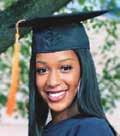
“Research shows that if you have diversity then you’re more able to come up with a better solution because you have different points of view leading toward the solution,” said Franklin.
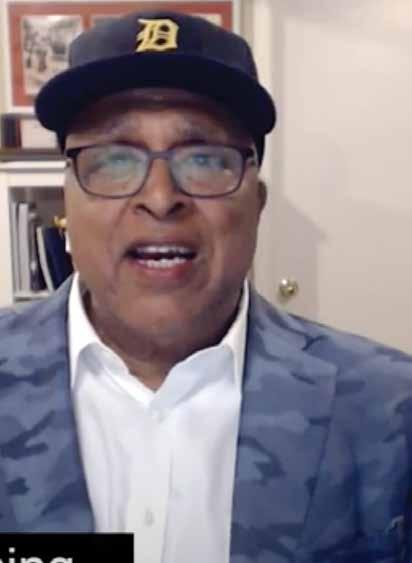
student panel, and the presentation of a proposal – drafted by members of GSBES – to the EECS chairs for proposed actions to increase the diversity of the department and improve recruitment efforts for Black students and faculty.
In response, ECE prepared a report detailing undergraduate, graduate, and faculty recruiting statistics, challenges, activities, and areas for improvement. This report is published on our website under, “Response to GSBES Open Letter on Diversity in EECS.”
“It seems like when the police swear to serve and protect, they’re swearing to protect white people from Black people. We shouldn’t let that happen anymore.”
— Herbert Winful
the Joseph E. and Anne P. Rowe Professor of Electrical Engineering, Arthur F. Thurnau Professor, and ECE Diversity, Equity, and Inclusion Lead
“Being a Black female engineer, I am not just doing it for my own interest necessarily. I have to be a body in that space, a face they see, oftentimes the only one, to show that we do belong in these spaces, you should see us in these spaces. And that can be a lot of pressure especially when at times you don’t feel welcome or acknowledged by your professors and peers.”
— Camille Burke, EE Undergraduate Student
“If we want to continually improve the nation, these conversations have to be had, and we need to hear from perspectives that have not been amplified for a long time. Everyone wins if we try to create a more just society.”
Demba Komma, ECE PhD Student


—
“Engineers tend to shy away from social issues as much as possible, and I think that might need to change. When something like this comes up, you have no choice but to address it and discuss it.”
— Nathan Louis, ECE PhD Student
47
Spotlight on Diversity
Prof. Adrienne Stiff-Roberts Honored With the Willie Hobbs Moore Distinguished Lectureship

Prof. Adrienne Stiff-Roberts (MSE EE ’01; PhD Applied Physics ’04) was this year’s recipient of the ECE Willie Hobbs Moore Distinguished Alumni Lectureship in recognition of her accomplished career. Stiff-Roberts is the Jeffrey N. Vinik Professor in the Department of Electrical and Computer Engineering at Duke University, where she is also the Director of Graduate Studies for the University Program in Materials Science and Engineering. She gave a virtual talk to the ECE community about her research program that investigates hybrid thin film deposition using resonant infrared, matrix-assisted pulsed laser evaporation (RIR-MAPLE) to control structure and properties and to improve the performance of optoelectronic and energy-related devices. She also spoke about her love of shows like Star Trek and Dr. Who, as well as her memories of Michigan.
“Michigan was a really great experience for me,” she said. “From day one, I felt welcomed and felt like I had a support system.”
Institution Partnerships Offer Best of Both Worlds
Last fall, ECE helped host faculty from Morehouse College and Prairie View A&M University to explore cross-collaboration opportunities, which allow students and faculty to experience the cultures of both Historically Black Colleges & Universities and U-M.

U-M and Morehouse already have a longstanding partnership through the Dual Degree in Engineering Program, which began in 2004. As part of this program, students from the Atlanta University Center Consortium (Clark Atlanta University, Morehouse College, and Spelman College) are able to earn two bachelor’s degrees: one from their home university and one from U-M. This visit, supported by funds from the Rackham Recruitment Grant, explored ways to strengthen the current relationship with Morehouse and develop new avenues of partnership with Prairie View A&M.
“Michigan has always been one of our strongest partners,” said Morehouse Prof. Dwayne Joseph, who’s been involved with the dual degree program for seven years. “They really make sure our students are taken care of.”
ECE Honors Spirit Day
ECE hosted its 3rd annual Spirit Day event to promote a more inclusive, compassionate environment for students, staff, and faculty. Spirit Day is a world-wide anti-bullying campaign designed to raise awareness about the challenges and issues faced by members of the LGBTQ+ community.
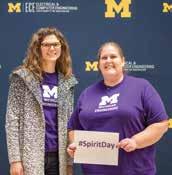
Members of Graduates Out in Science, Technology, Engineering and Mathematics (GO STEM) facilitated a roundtable discussion where attendees could express their stories and advise allies on ways to better support the community.
“When I was sitting on the panel speaking to professors, students, and staff, I was beaming with happiness that so many people want to make the university more inclusive,” said Sabrina Benge, a master’s student in ECE who helped facilitate the event. “Attendance and participation are what bring about change.”
48
U-M ECE faculty and Director of Partnerships, Outreach, and Recruitment in the Office of Student Affairs, Debby Covington, stand with faculty from Morehouse College and Prairie View A&M University during a visit to U-M’s campus in fall 2019.
Prof. Louise Willingale and ECE PhD Coordinator Kristen Thornton attend the Spirit Day festivities in 2019.
Student Groups Who Aim to Empower and Build Community
Supporting
ECE provides financial support to students and student organizations that support diversity or outreach. Funding is given to support the work of the club, send students to conferences, and sponsor outreach programs and events.
Last fall, one of the clubs ECE sponsored was the Michigan chapter of the Society of Hispanic Professional Engineers (SHPE), sending several students to the largest convention for Hispanic STEM students and professionals in the country. Students attended career panels and workshops while networking with a variety of big-name companies.
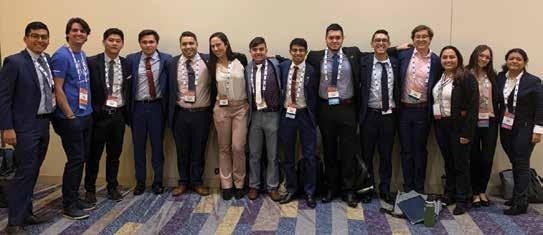
“The connections made here and throughout the conference will serve our members and our chapter very well moving forward and will allow us to be a much more capable organization on campus,” said Nancy Hernandez, Electrical Engineering undergrad and U-M SHPE President.
Optics Society Wins Elaine Harden Award From College of Engineering
The Optics Society at the University of Michigan (OSUM) was awarded the Elaine Harden Award from the College of Engineering for its dedicated leadership and service to the community. Last year, OSUM partnered with its sister society, the Ann Arbor Chapter of the Optics Society, to bring hands-on optics to economically disadvantaged school kids aged second grade through high school. OSUM provided old electronics that the students disassembled and reassembled into new items, like cameras, allowing them to learn about the principles of optics and lasers.
“Working on that outreach project was really rewarding,” said ECE PhD student Laura Andre, who served as president of OSUM last year. “It was exciting to see the students tinkering and discovering new things about science. They were really interested in learning more about technology and wanted to pursue engineering in the future.”
Alums Empowering Diversity in Engineering

Prof. Rhonda Franklin (MSE PHD EE 1990 1995) cofounded the IEEE Microwave Theory and Techniques Society’s International Microwave Symposium (IMS) Project Connect, which aims to provide science, technology, engineering, and math enriching opportunities to underrepresented undergraduate college students.

David Tarver (BSE MSE EE 1975 1976), whose motto is “Change the world, and have fun doing it,” became a community organizer and entrepreneurial activist after growing a telecommunications business to a market value in excess of $2B. He established the Fred and Louise Tarver Scholarship Fund to honor the sacrifices made by his parents and help others achieve their dreams.

Dr. Clarence Wardell III (BSE CE ‘04) is the director for What Works Cities, a national organization that provides resources to assist local governments in determining how they can best address key issue areas and serve those who need them most. Prior to What Works Cities, Wardell founded tinyGive, a startup that provided social fundraising tools and resources to organizations, and the Police Data Initiative. The Police Data Initiative began 5 years ago with the support of the Obama Administration and spurred by the Black Lives Matter movement.

49
Prof. Rhonda Franklin
David Tarver
Dr. Clarence Wardell III
Celebrating Cultural Exchange
Every year, ECE celebrates many cultural events and holidays from around the world, serving to empower cultural exchange, understanding, and respect. COVID-19 has turned some of these into virtual events.
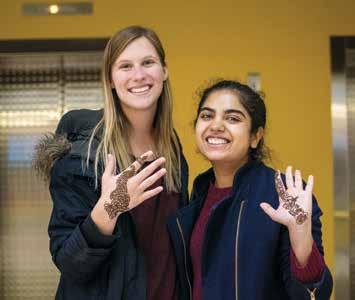


ECE Culture Club



The ECE Culture Club is a new series of events that highlights different traditions, languages, food, crafts, etc. associated with a specific country and culture. Each session is led by an ECE student or staff member from the respective culture. Each event takes place virtually on the third Wednesday of the month.
Halloween
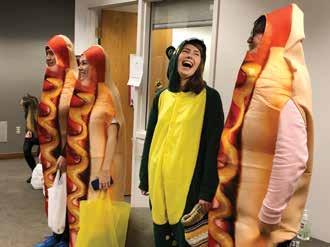
Halloween – or “All Hallows’ Eve” – is a largely secular holiday that originated in the festival of Samhain among the Celts of ancient Britain and Ireland when it was believed that the souls of the dead returned home. ECE celebrates Halloween with a costume contest and a traditional Trick-or-Treat event where students visit offices throughout the EECS building to collect candy.
Diwali
Diwali (Deepawali) is the famous Hindu Festival of Light, which lasts for five days and is celebrated every year. Lighting a lamp symbolizes the destruction – through knowledge – of all negative forces. ECE celebrates Diwali with food, dancing, and activities such as henna and candle lighting and decorating.
Students show of their henna during the ECE Diwali celebration.
Prof. Mingyan Liu says, “Long Live and Prosper!”.
Students trick-or-treat in the EECS offices.
50
Lunar New Year

Also known as Chinese New Year and the Spring Festival, this holiday has been around for thousands of years and is practiced by 20% of the world’s population. It began as a ceremonial day to pray to gods for a good planting and harvest season, but it is also associated with the myth of Nian. Nian was a monster who came every New Year’s Eve until a boy repelled it with firecrackers and red decorations. ECE celebrates Lunar New Year with an event featuring Chinese music, cuisine, calligraphy, and performances.
Iftar
Iftar is the evening meal that breaks the traditional fast during Ramadan. ECE hosts a special Iftar dinner, which features traditional foods and occasionally live music. For anyone who is not able to return home during Ramadan, they are still able to share this tradition with their ECE family

Festive “Ugly” Sweater Contest
While ECE does not host a Christmas celebration, we do host an event celebrating common Western cultural practices late in the Fall semester that we call our “Festive Sweater Party.” It features hot coco, cookie decorating, and a competition for most festive holiday sweater.

Nowruz
Nowruz is part of the Persian New Year Festival that dates back to more than 3,500 years ago. It’s about spending time with family, friends, and neighbors. ECE’s Nowruz celebration features food, music, and a Half-Seen, which is a tabletop arrangement of seven symbolic items.

 Kristen Thornton, ECE PhD Coordinator, and students pose in their “festive sweaters.”
ECE’s Half-Seen tabletop arrangement.
Chinese calligraphy.
Lunar New Year red lantern decorations.
Kristen Thornton, ECE PhD Coordinator, and students pose in their “festive sweaters.”
ECE’s Half-Seen tabletop arrangement.
Chinese calligraphy.
Lunar New Year red lantern decorations.
51
SPOTLIGHT ON EDUCATION
Demystifying the Grad School Experience
As technology advances, the additional training supplied in a graduate program becomes more and more crucial for career prospects. However, there are many misconceptions about graduate school that discourage people from pursuing an advanced degree. To encourage students to pursue a graduate degree at Michigan or elsewhere, ECE hosted its first Graduate School Workshop.
In recent years, the demand for workers with graduate degrees has increased. Electrical and computer engineers with graduate degrees can make as much as $30,000 more for starting salary, and anyone who wishes to do research will find that a PhD is a basic prerequisite. However, the number of domestic applicants for grad programs has declined over recent years, says Prof. Heath Hofmann, Associate Chair for Graduate Program. Hofmann hopes programs like this can help encourage more domestic students to consider graduate school.
The 40 students who attended the first workshop in 2019 came away with positive experiences.

“It’s helped immensely and made the task of applying to a school seem significantly less daunting,” said Corey Stuff, a senior at Central Michigan University. “I’ve really gotten to know the advantages of coming to grad school, and it really solidified that this is the right choice for me.”
For Marcella Gatti, a senior at Wayne State University who’s interested in nanotechnology as well as optics and photonics, the faculty panel was especially valuable. “It’s given us a unique inside look at a university, and that’s really special,” she said.
Prerit Oberai, a master’s student at the University of Colorado Boulder who’s interested in computer networks and distributed systems, said that the workshop convinced him that a PhD is a worthwhile pursuit, and he really appreciated getting to talk to the faculty directly.
The second workshop, held virtually in 2020, was similarly successful. The students especially enjoyed the virtual lab tours and breakout sessions, and many students reported it was the best zoom meeting they ever had.
52
EDUCATION NEWS
Machine Learning
Machine learning has become one of the shiniest coins in the box of techniques for applications including computer vision, autonomous driving, and mining big data.
Coupled with signal processing, machine learning has been used to remove unwanted background noise that disturb speech in movies, and to isolate the electrical impulses generated by thoughts to move limbs with the help of an electro-mechanical device – or to operate a computer keyboard. It has also been applied to speech recognition to greatly improve accuracy, and prediction applications such as weather forecasting, search engines, traffic patterns, social networks, and gaming.
But what is it?
“As it is a highly multidisciplinary field championed by computer scientists, statisticians, mathematicians, and electrical engineers, there is not a single widely agreed-upon definition of machine learning,” stated Prof. Al Hero, who is the John H. Holland Distinguished University Professor of Electrical Engineering and Computer Science and R. Jamison and Betty Williams Professor of Engineering. “Most experts would agree, however, that a main objective of machine learning is to develop principles for automated detection of meaningful patterns poin data.”
Machine learning exists without a formal underlying theory, and that lack of a mathematical structure is something that researchers in ECE would like to remedy.
“In our field,” said Hero, “we strive to develop sufficient understanding to be able to predict when a signal processing algorithm will fail. As a result, you have signal processing algorithms that are in cars and in airplanes. They are an integral part of control systems that are reliable precisely because you
know what the failure conditions are and can account for them in the design. When dealing with complex machine learning algorithms, you often can’t predict how well an algorithm that’s been developed on one training set is going to work when applied to a different one.”
And that can lead to disastrous results, such as the wellpublicized accidents involving autonomous driving.
Faculty in ECE are working to develop a robust mathematical model for machine learning, while training the next generation through their courses.
The first course dedicated to machine learning in the department was offered in 2002. Since then about ten additional courses have been added, including an undergraduate course. Machine learning has also been added to long-standing courses in signal processing.

Since machine learning can be applied to nearly any application and any field involving big data, it would naturally appeal to students from a variety of disciplines.
Prof. Raj Nadakuditi developed a class for these students in 2018: Computational Data Science and Machine Learning. The class has attracted students from more than 60 different majors across the university. In this course, a biomedical engineer can take algorithms developed for cars and apply the same technique, with some tweaking, to cells. As Nadakuditi often states, “ECE folks have always been able to put the pieces together to figure out how things work.”
Nadakuditi hopes that “students will take what we’ve learned, ported into their own application domain, and be the first person to do something no one else in their area did before.”
53
Students presenting their projects in the graduate-level course, Machine Learning. KLA sponsored a contest at the event.
New Degree Program: Master of Engineering in ECE
In the past decade, the number of master’s students in ECE has more than doubled, reaching a peak of 500 students two years ago. With the advent of COVID-19, and some students opting to defer their admission, there are currently just under 400 master ’s students. Most of these students have no interest in pursuing a doctoral degree; they are looking for a program that will prepare them to enter industry, and have determined their area of specialty. For these students, ECE has created a new graduate program: the Master of Engineering in Electrical and Computer Engineering.
The program is highly structured and emphasizes rigorous theory combined with practical training. Additional areas of focus are project management, communication, and entrepreneurship. The program leverages the strong course content of the College of Engineering’s #1 nationally ranked Center for Entrepreneurship.
“The goal of the program is to train students with basic knowledge, hands-on experience, practical training, and entrepreneurship in areas where there are high demands from industries,” says Prof. Leung Tsang, who oversaw the development of the program. “I hope that the graduates find good placement and excel in industries.”
MEng will be offered in a variety of concentrations. Current students can enroll in the Data Science & Machine Learning (DS/ML) concentration beginning fall 2020, and prospective students can also apply for the concentration in Autonomous Systems, available fall 2021. More MEng concentrations will be added in the future, including Semiconductor Manufacturing, VLSI, and Embedded Systems & Cybersecurity.
The MEng program is distinct from the Master of Science (MS) program. In particular, the MS program is highly flexible in terms of curriculum, making it suitable for students who either may not know exactly which field they want to focus on, or who want to have greater input on which courses they take.
The concentrations available in the MEng program are aligned with emerging application areas of high workforce demand. Individual courses within the concentrations are selected due to their direct relevance to industry needs. Several companies have already supported the classes through software and hardware donations, and through in-class contests that help serve as recruiting opportunities. The new MEng program will continue to foster and grow these close relationships between individual companies and the department.

NEWS
EDUCATION
54
Prof. Raj Nadakuditi teaching Computational Data Science and Machine Learning to students from across the university.
Cybersecurity for Future Leaders
Taught for the first time in 2019, students in the undergraduate course “Cybersecurity for Leaders” will gain a better understanding of the science, technology, public policy, and national security considerations behind cybersecurity. The goal is to protect the very tenets of democracy.
The National Counterintelligence and Security Center Director William Evanina recently provided an unclassified overview of foreign threats to the 2020 election, highlighting those coming from China, Russia, and Iran. Election security was one of the course’s six focus areas this Fall 2020.
“This course is to help ambitious students, when they reach positions of leadership, to be able to ask the right questions and make well-informed decisions on matters of cybersecurity
and privacy,” says ECE visiting professor Carl Landwehr, who co-teaches the course from the technical perspective of cybersecurity. Landwehr is joined on the policy side by Javed Ali, a Towsley Foundation Policymaker in Residence at the Ford School.
“It takes time, usually decades, for this year’s graduates to rise to senior leadership positions. The course aims to convey the technical foundations behind cybersecurity concerns and the basis for related policy issues that will still be relevant when students reach those positions of responsibility,” said Landwehr.
Continuum: A New Model for Continuing Education in High-demand Topics
ECE initiated a new online continuing education program called Continuum. Continuum is intended to jumpstart learning of high-demand and emergent topics – and was created especially for ECE alumni.
The first course offered was Computational Machine Learning for Scientists and Engineers; it began September 2020. This course is designed to equip those taking the course with the ability to understand, train, and design machine learning algorithms, particularly deep neural networks, and to deploy them on the cloud. Participants graduated between one and 52 years ago, and hail from three countries and 15 states.
The second course offered was Applied Computational Linear Algebra for Everyone. This course is designed to equip participants with the knowledge to link the math of linear algebra
New Courses
UNDERGRADUATE
Software Defined Radio
(EECS 398: Profs. Achilleas Anastasopoulous and Wayne Stark)
Learn how basic software radios work, and their implementation in software and hardware.
GRADUATE
Advanced Energy Storage
(EECS 598: Dr. Ziyou Song)
Introduction and comparison of different energy storages, with special applications to electrified vehicles and renewable energy systems.
Convex Optimization Methods in Control
(EECS 598: Prof. Peter Seiler)
Convex optimization plays a central role in the numerical solution of many design and analysis problems in control theory.
to code with a few “must know” applications centered around different ways of casting and fitting a system of equations.
Course developer, Prof. Raj Nadakuditi, emphasizes that Continuum is much more than a traditional massive open online course (MOOC), which tends to provide minimal individualized assistance. “Our goal is to support you through your learning experience, especially when you get stuck as we dive in deeper,” said Nadakuditi.
Both courses make use of a one-of-a kind cloud-based interactive computational textbook developed by Prof. Nadakuditi and recent alumnus Travis DePrato.
Keep the website (continuum.engin.umich.edu) bookmarked to learn about future opportunities.
Design of Quantum Computers
(EECS 498: Prof. Pinaki Mazumder)
Creation and development of new applications utilizing quantum information processing architectures.
Semiconductor Power Devices
(EECS 598: Prof. Becky Peterson)
Design and operating principles of semiconductor devices for discrete and integrated power electronics.
VLSI for Communication and Machine Learning
(EECS 598: Prof. Hun-Seok Kim)
Methodologies to design energy efficient and/or high-performance VLSI systems for the state-of-the-art wireless communication, machine learning, and signal processing systems.
Data Science and Machine Learning Design Laboratory
(EECS 605: Prof. Raj Nadakuditi)
Hands-on projects to bring into sharper focus concepts in the data-to-decision cycle.
55
NEW FACULTY
QING QU, Assistant Professor Research Area: Signal and Image Processing and Machine Learning
Qu’s research interest lies broadly at the intersection of the foundation of data science, machine learning, numerical optimization, and signal/image processing. In particular, his recent research focuses on developing computational methods for learning low-complexity models/structures from high dimensional data, leveraging tools from machine learning, numerical optimization, and high dimensional probability/geometry. He is also interested in applying these data-driven methods to various engineering problems in imaging sciences, scientific discovery, and healthcare. He is the recipient of a Best Student Paper Award at SPARS’15 (with Ju Sun and John Wright), and the recipient of Microsoft PhD Fellowship 2016-2018 in machine learning. His recent work has been recognized by NeurIPS 19 spotlight (top 3%) and ICLR 20 oral (top 1.9%) presentations.
He received his BEng from Tsinghua University in Electronic Engineering in July 2011, his MSc from the Johns Hopkins University in Electrical and Computer Engineering in December 2012, and his PhD from Columbia University in Electrical Engineering in 2018. He interned at U.S. Army Research Laboratory during 2012-2013 and Microsoft Research in 2016.
Qu is currently a Moore-Sloan data science fellow at the Center for Data Science, New York University. He will join the University of Michigan January 2021 as an assistant professor.
PEI ZHANG, Associate Professor Research Area: Embedded Systems
Zhang’s research interest surrounds “Structures as Sensors,” which utilizes the physical properties of devices and structures (e.g., cars, buildings, rooms) as a sensor to discover physical information that surrounds them (e.g., people, roads, animals). As part of this, his work focuses on combining machine learning-based data models, physics models, as well as heuristic models to improve the understanding of the physical systems. His approach is applied to many fields including medicine, eldercare, farming, smart buildings. His work has been featured in popular media including CNN, Scientific American, Science Channel, Discovery Channel, CBS News, CNET, Popular Science, and BBC Focus. In addition, he has won several awards including the NSF CAREER award, ACM SenSys Test-of-Time Award, Google faculty award, and numerous best paper and demo awards. He is a member of the Department of Defense Computer Science Studies Panel.
He received his bachelor s degree with honors from California Institute of Technology in 2002, and his PhD degree in Electrical Engineering from Princeton University in 2008. While at Princeton University, he developed the ZebraNet system, which is used to track zebras in Kenya. It was the first deployed, wireless, ad-hoc, mobile sensor network for which he later received the Test-of-Time award.
Zhang is currently an associate research professor in the ECE Department at Carnegie Mellon University. He will join the University of Michigan January 2021 as an associate professor.

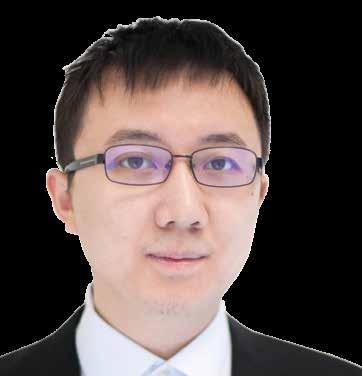
56
YOUNG INVESTIGATOR AWARDS
ELAHEH AHMADI ONR Young Investigator Award
Prof. Ahmadi’s project aims to develop the science and technology to enable high-frequency, high-power Gallium Nitride based transistors for the next generation of wireless technology.
Generations beyond 5G will continue to operate at higher frequencies, demanding higher gain and efficiency. There is also a need for efficient solid-state power amplification to replace complex, low-efficiency multi-stage circuits and bulky and fragile vacuum tubes in defense applications. And in the era of the Internet of Things (IoT), artificial intelligence, and autonomous vehicles, there is an urgent need for high-power and high-frequency transistors that can facilitate ultra-fast, highly reliable, and low latency wireless networks. Her project is called, “Ultra-scaled Channel N-polar GaN High Electron Mobility Transistors on on-axis GaN and SiC Substrates for Next Generation of Wireless Technology.”
AFOSR Young Investigator Program
Prof. Ahmadi’s second early career grant is focused on identifying and developing promising new materials to address the increasing need for electricity to power electric vehicles, electric transportation systems, wireless communication systems, and RADAR.
Current technology is relying on wide bandgap-based RF and power electronics based on SiC and GaN materials. Gallium oxide has shown promise to provide improved performance in a cost-effective manner for future systems, yet needs a more thorough investigation of the material and specifically, its electron transport. Using a hybrid molecular-beam exitaxy (MBE) system, Ahmadi aims to deepen our understanding of electron transport in a variety of gallium oxide materials. Her project is called “Investigation of Electron Transport in β-(AI, Ga)203 Thin Films and Heterostructures Under Applied High Pressures.”

57
YOUNG INVESTIGATOR AWARDS
HESSAM MAHDAVIFAR NSF CAREER Award
Prof. Mahdavifar’s project is focused on solutions for reliable communications for a future of billions of connected devices and an unprecedented increase in mobile traffic.

In the next decade, the emergence of massively connected networks of billions of devices will lead to an unprecedented increase in mobile data traffic. This research aims to develop enabling technologies for reliable and scalable communications over such massive wireless networks. It will also propose a novel paradigm for compression and computation methods, which can significantly reduce the cost of storing and processing massive datasets. The research connects information theory, coding theory, wireless communications, and data science through the lens of subspaces. His project is called “Coding Subspaces: Error Correction, Compression, and Applications.”
HUN-SEOK KIM NSF CAREER Award
Prof. Kim’s project is applicable to the Internet of Things (IoT) of the future, where massively deployed heterogeneous IoT devices are seamlessly interconnected with software defined radios and machine-learning based signal processing.

His research is expected to expedite and enable applications such as energy-harvesting and wirelessly-connected smart-dust devices, autonomous aerial and ground vehicles with ultra-reliable low latency communications, and intelligent automated factories with deep learning-assisted collaborative networks in highly congested channels. In particular, he is investigating new ultralow power wireless connectivity solutions assisted by novel digital signal processor architectures optimized for software-defined radio processing and machine learning.
The project is called “Heterogeneous Non-orthogonal Wireless Communications Enhanced by Unified SDR – Deep Learning Architectures.”
58
FACULTY NEW PROFESSORSHIPS
DAVID BLAAUW was named the Kensall D. Wise Collegiate Professor Electrical Engineering and Computer Science. Blaauw is a creative innovator and world-leader in the design and development of low-power computing. His research and collaborations led to the development of the world’s smallest computer, called the Michigan Micro Mote (M3).
After joining the department in 2001, Blaauw quickly established himself as a pioneer in the area of statistical static timing analysis (SSTA), a specialty in the area of computer-aided design (CAD). He helped develop an award-winning technique called Razor that dramatically reduced power consumption while increasing overall performance of computer circuits. He was also a key developer of a technique called near-threshold computing, where operating voltage is lowered to near the threshold voltage of the devices where they pivot between being on and off. The technique is now used by a number of leading companies in the industry.
Blaauw and colleague David Sylvester led development of the Michigan Micro Mote (M3), which broke through the ceiling of millimeter-scale computing in 2011 with a low-power sensor system that was 1,000 times smaller than comparable commercial devices. By 2014, the M3 was being disseminated to researchers around the world.
Blaauw’s research resulted in numerous best paper and influential paper awards, and led to his co-founding two companies: Ambiq Micro and CubeWorks. He received the Semiconductor Industry Association University Researcher Award, and he is an IEEE Fellow.


DENNIS SYLVESTER was named the Edward S. Davidson Collegiate Professor of Electrical and Computer Engineering. Sylvester is an internationally-recognized leader in the area of ultra-low power processor design. His research and collaborations led to the development of the world’s smallest computer, called the Michigan Micro Mote (M3).
First developed for implantable medical devices, later versions of the M3 opened the door to a host of Internet of Things applications – including air and water quality detection, smart home systems, health monitoring, energy management, infrastructure monitoring, and much more.
One of the key challenges to creating a computer the size of a sugar cube was reducing power consumption so it could operate on extremely small amounts of power. Sylvester and his colleague David Blaauw led the team that reduced the power consumption of these miniature sensing computers by a factor of 1000x compared to their nearest competitor. He did this by approaching the problem from a fundamentally new angle, using a technique he co-developed called near-threshold computing. It is a technique now used by a number of leading companies in industry. By 2014, Sylvester and his collaborators were disseminating a variety of M3 computers to researchers around the world.
Sylvester co-founded two companies related to low-power computing and millimeterscale computers – Ambiq Micro and CubeWorks, and his student founded a third – Mythic. He serves as Senior Associate Chair for ECE, and has served as General Chair or principal organizer of numerous conferences and workshops. He has received numerous professional awards, several education awards, and he is an IEEE Fellow
59
Prof. Sylvester will offer a talk in honor of the professorship at some time in the future.
Back: Mingyan Liu, Peter and Evelyn Fuss Chair of ECE; Dennis Sylvester, Sr. Associate Chair of ECE; Alec Gallimore, Robert J. Vlasic Dean of Engineering. Seated: David Blaauw, Kendall D. Wise Collegiate Professor of EECS.
Prof. Blaauw’s professorship lecture, “Computing in Millimeters,” presented on February 6, 2020, is available on Youtube.
HERBERT WINFUL was named the Joseph E. and Anne P. Rowe Professor of Electrical Engineering. Winful has made fundamental contributions to nonlinear optics and the physics of tunneling, while also championing an inclusive department.
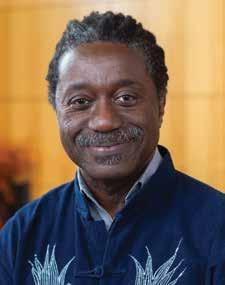
He was the first to include an intensity-dependent refractive index in periodic dielectric structures, thus launching a field that has produced phenomena such as optical bistability, gap solitons, pulse compression, and self-pulsations. In 2000, he proposed the distributedfeedback fiber Raman laser, which has been turned into reality at industrial laboratories. In 2006, Winful explained an apparent paradox having to do with quantum tunneling, and in a stroke of insight, was able to explain the Gouy phase shift along with one of his students.
Winful is a leader in efforts to create a more inclusive and diverse engineering community. Among other activities, he founded the Committee for an Inclusive Department and for the past 20 years has served as faculty advisor to the Society of Minority Engineers and Scientists – Graduate Component (SMES-G). He acted as lead for the USAID’s Excellence in Higher Education for Liberian Development (EHELD) program, and as PI for the multi-institution and multi-million dollar Michigan Louis Stokes Alliance for Minority Participation (MI-LSAMP) program. In 2018, he received the CoE Raymond J. and Monica E. Schultz Outreach and Diversity Award,
Winful has received numerous teaching awards and honors, including the Arthur F. Thurnau Professorship. He is a Fellow of the Optical Society of America, the American Physical Society, and Life Fellow of IEEE.
Newest Member of the National Academy of Engineering
Prof. Leung Tsang was elected to the 2020 class of the National Academy of Engineering for his “contributions in wave scattering and microwave remote sensing theories for satellite missions.”
“Election to the NAE is among the highest honors accorded in our profession,” said Alec D. Gallimore, the Robert J. Vlasic Dean of Engineering. “Professor Tsang is a world renowned expert in the field of theoretical and computational electromagnetics, and in particular microwave remote sensing of the earth.”
Using microwave sensors mounted on satellites missions for continual global monitoring, Tsang played a major role developing theoretical models for measuring many facets of the planet’s workings. In particular, his research has laid the foundation for the analysis of radar and radiometer remote sensing data and for the development of airborne and spaceborne systems aimed at monitoring the environment, including monitoring climate change, improving hydrological predictions, and managing water and agricultural resources.
To understand the impact of this fundamental research, soil moisture helps researchers understand and predict water cycles and droughts. Snowpack monitoring enables the tracking of water resources and the prediction of floods. Ocean wind readings can help predict and monitor weather, particularly hurricanes. Vegetation and forest surveys inform studies of crop yield, agriculture, ecology and the global carbon cycle.
All of these, plus measurements of polar ice caps, sea ice and ocean salinity, contribute to an ever clearer picture of the global climate.
Tsang has written more than 300 journal articles and authored four books, including Theory of Microwave Remote Sensing He has received numerous prestigious professional awards,
including a Group Achievement Award from NASA along with colleagues Kamal Sarabandi, Rufus S. Teesdale Professor of Engineering, and Dr. Leland Pierce for their “outstanding contributions to the development of the Soil Moisture Active Passive mission and demonstration of its scientific and societal impact.”
He has served as Editor-in-Chief of the IEEE Transactions on Geoscience and Remote Sensing and President of the IEEE Geoscience and Remote Sensing Society. Since 2008, he has been the President of the Electromagnetics Academy. He is a Fellow of IEEE, OSA, and the Electromagnetics Academy.
Tsang joined the University of Michigan in 2015. Prior to this, he was a professor of electrical engineering at the University of Washington, where he was also Department Chair of Electrical Engineering (2006-2011).
“It is a great honor to be elected a member of NAE. It is a recognition for myself, my collaborators, postdocs and students. I acknowledge my colleagues for their encouragement. I thank my family for their continuous support,” said Tsang.

60 FACULTY HONORS, AWARDS + ACTIVITIES
Prof. Winful will offer a talk in honor of the professorship at some time in the future.
2019 IEEE Custom Integrated Circuits Conference (CICC) Outstanding Invited Paper award for the paper, “Fully Integrated Solutions for High Resolution Terahertz Imaging”
LAURA BALZANO Associate Professor

Vulcans Education Excellence Award, College of Engineering
DAVID BLAAUW
Kensall D. Wise Collegiate Professor of Electrical Engineering and Computer Science
2019 Distinguished University Innovator Award, University of Michigan
IEEE Micro Top Picks for ISCA 2019 paper, “Neural Cache: Bit-Serial In-Cache Acceleration of Deep Neural Networks”
NAJME EBRAHIMI Postdoctoral Research Fellow

Selected to participate in the 2019 Rising Stars in EECS Workshop
Appointed to serve on the “Task Force on Faculty Teaching Excellence” for the American Society of Engineering Education
Keynote address at the International Conference on Active Learning in Engineering Education (PAEE/ALE 2020)

NOOSHIN M. ESTAKHRI Postdoctoral Research Fellow

Selected to participate in the 2019 Rising Stars in EECS Workshop
JEFFREY FESSLER
William L. Root Collegiate Professor of Electrical Engineering and Computer Science
2020 International Society for Magnetic Resonance in Medicine (ISMRM) Magna Cum Laude award for “Myelin Water Imaging Using STFR with Exchange”
Poster award at the 2019 Society of Nuclear Medicine & Molecular Imaging meeting for “On Enhancing Monte-Carlo Scatter Correction for Y90 Bremsstrahlung SPECT Using Guided Filtering”
Distinguished Graduate Mentoring Award, University of Michigan

Outstanding Paper Award by the journal, Microsystems and Nanoengineering for the 2016 paper, “A Fully Electronic Microfabricated Gas Chromatograph With Complementary Capacitive Detectors for Indoor Pollutants”
Named U-M Robotics Associate Director for Graduate Education, effective September 1, 2020






BRENT GRIFFIN
Assistant Research Scientist
Plenary Speaker – Robots, 3rd Annual TRI Joint University Workshop

JESSY GRIZZLE
Elmer G. Gilbert Distinguished University Professor; Jerry W. and Carol L. Levin Professor of Engineering
Certificate of Appreciation for Advocacy of Disability Issues, U-M Council for Disability Concerns
Guinness Book of World Records: lowest temperature endured by a bipedal robot
61
EHSAN AFSHARI Professor
CINDY FINELLI Professor
MICHAEL FLYNN Professor
YOGESH GIANCHANDANI Professor
ROBERT GREGG Associate Professor
FACULTY HONORS, AWARDS + ACTIVITIES
NIH Ruth L. Kirschstein Postdoctoral Individual National Research Service Award

(Advised by Prof. Jeff Fessler)
John H. Holland Distinguished University Professor of EECS; R. Jamison and Betty Williams Professor of Engineering
Fellow of the Society for Industrial and Applied Mathematics (SIAM) “for contributions to the mathematical foundations of signal processing and data science”


Commencement speaker, Department of Electrical and Computer Engineering, Princeton University
George I. Haddad Professor of Electrical Engineering and Computer Science

Co-chair, National Academies Board on Physics and Astronomy Decadal Survey of Plasma Physics





N. Harris McClamroch Professor of Electrical Engineering and Computer Science
Editor-in-chief, Journal of Discrete Event Dynamic Systems: Theory and Applications
2020 M A Sargent Medal “for longstanding eminence in science or the practice of electrical engineering,” Engineers Australia
Keynote speaker, 2019 IEEE Conference on Industrial Electronics and Applications
Co-General Chair of 2019 IEEE International Workshop on Future Computing (IWOFC)
2020 Staff-Faculty Partnership Award, College of Engineering
Ted Kennedy Family Faculty Team Excellence Award, as a member of the U-M Automotive Research Center (ARC), College of Engineering
2020 EECS Outstanding Achievement Award
Henry Russel Award, University of Michigan’s highest honor for faculty at the early to mid-career stages of their career

Invited to participate in the National Academy of Engineering’s 2019 U.S. Frontiers of Engineering Symposium
Conference Chair, 2020 Michigan Quantum Science and Technology Workshop
Commended Paper Award, 9th IFAC/IFIP/ IFORS/IISE/INFORMS Conference on Manufacturing Modelling, Management and Control (MIM 2019) for “Programmable Manufacturing Advisor for Smart Production Systems: Architecture, Analytics, Software, and Performance Demonstration”
62
MELISSA HASKELL Postdoctoral Research Fellow
ALFRED O. HERO, III
IAN HISKENS Vennema Professor of Engineering
MACKILLO KIRA Professor
MARK KUSHNER
STÉPHANE LAFORTUNE
WEI LU Professor
SEMYON MEERKOV Professor
HEATH HOFMANN Professor
JOHANNA MATHIEU Assistant Professor
ZETIAN MI Professor
Distinguished Paper Award from the Society for Information Display (SID) for “Submicron Full-color LED Pixels for Microdisplays and Micro-LED Main Displays”
Distinguished Lecturer for the IEEE Photonics Society, 2020-2021






Co-Chair, IEEE Summer Topical Meeting on Quantum Integrated Photonics, 2019
Editor-in-Chief, Semiconductors and Semimetals
ERIC MICHIELSSEN
Louise Ganiard Johnson Professor of Engineering

2020 Harrington-Mittra Award in Computational Electromagnetics, IEEE Antennas and Propagation Society (AP-S)
2020 Computational Electromagnetics Award, Applied Computational Electromagnetics Society (ACES)
Appointed Associate Dean for Research, College of Engineering
Editor-in-Chief, International Journal of Numerical Modelling, Electronic Networks, Devices, and Fields


RAJ RAO NADAKUDITI
Associate Professor
2020 EECS Outstanding Achievement Award
KHALIL NAJAFI
Schlumberger Professor of Engineering; Arthur F. Thurnau Professor
2019 Robert M. Janowiak Outstanding Leadership and Service Award, ECE Department Heads Association (ECEDHA)
NECMIYE OZAY
Associate Professor
Ted Kennedy Family Faculty Team Excellence Award, as a member of the U-M Automotive Research Center (ARC), College of Engineering
BECKY PETERSON
Associate Professor
Vice Chair, 2020 Device Research Conference
Named Director of the Lurie Nanofabrication Facility in September 2020


JAMIE PHILLIPS
Arthur F. Thurnau Professor
Service Excellence Award, College of Engineering
LELAND PIERCE
Associate Research Scientist
Outstanding Student Organization Advisor Award, College of Engineering
SANDEEP PRADHAN Professor
John F. Ullrich Education Excellence Award, College of Engineering
KAMAL SARABANDI
Rufus S. Teesdale Professor of Engineering
Fellow, National Academy of Inventors
Chair of Commission F, U.S. National Committee for the International Union of Radio Science (USNC/URSI)
Kenneth M. Reese Outstanding Research Scientist Award, College of Engineering
63
JOHN NEES
Associate Research Scientist
FACULTY HONORS, AWARDS + ACTIVITIES
Edward S. Davidson Collegiate Professor in Electrical and Computer Engineering
2019 Distinguished University Innovator Award, University of Michigan
IEEE Micro Top Picks for ISCA 2019 paper, “Neural Cache: Bit-Serial In-Cache Acceleration of Deep Neural Networks”
Outstanding Invited Paper, IEEE Custom Integrated Circuits Conference, for “Ultra-Low Power Receivers for IoT Applications: A Review”
HERBERT WINFUL
Joseph E. and Anne P. Rowe Professor of Electrical Engineering
Quantum Electronics Award, IEEE Photonics Society
2020 HKN ECE Professor of the Year Award


FAWWAZ ULABY
Emmett Leith Distinguished University Professor of Electrical Engineering and Computer Science
IEEE renamed the GRSS Distinguished Achievement Award as the “IEEE GRSS Fawwaz Ulaby Distinguished Achievement Award”


Outstanding Paper Award by the journal, Microsystems and Nanoengineering for the 2018 paper, “Dual Color Optogenetic Control of Neural Populations Using Low-noise, Multishank Optoelectrodes”
Co-chair of the 2020 International Conference for Advanced Neurotechnology Keynote speaker for 2019 Next Generation of Neurotechnology Symposium


Guiness World Record in 2020 for “lowest temperature endured by a bipedal robot.”

64
DAVID WENTZLOFF Associate Professor
CASSIE BLUE Bipedal Robot
EUISIK YOON Professor
FRED TERRY Professor
DENNIS SYLVESTER
FACULTY + STAFF AWARDS
Living the Values: Special Faculty and Staff Awards
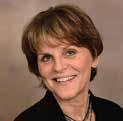
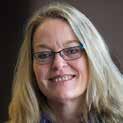
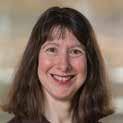


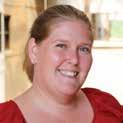
Electrical and Computer Engineering’s culture of innovation, excellence, collaboration, and social equity is expressed in the work of nine recipients of this year’s College of Engineering Incentive Award. The awards were created to reward both faculty and staff who consistently demonstrate the College’s vision, mission and values, and who bring creativity, innovation, and daring in helping the College build its culture
President’s Staff Award of Distinction
University of Michigan MLK Spirit Award
JACOB HAYWARD EECS Applications Programmer Lead

Hayward received a 2020 University of Michigan Staff Impact Award, and was then selected to receive the President’s Staff Award of Distinction. He was the only U-M staff member to receive this award in 2020. His innovations have been adopted by departments throughout the University.
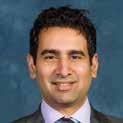
 THORNTON PhD Graduate Program Coordinator
THORNTON PhD Graduate Program Coordinator

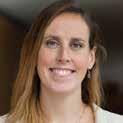
KRISTEN
“Being recognized for the MLK Spirit is such an honor, and I am glad that I am able to work in ECE, a department that supports me in following one of my favorite MLK quotes, ‘The time is always right to do what is right.’”
65
KATHY AUSTIN Research Manager
JOHN FELDKAMP Student Recruiter
HAYLEY HANWAY Communications Coordinator
CINDY FINELLI Professor JENNIFER HONEYCUTT Purchasing Supervisor
CATHARINE JUNE Communications Manager RAJ RAO NADAKUDITI Professor
LINDA RANDOLPH DCO Senior Computing Consultant
BARB RICE Research Manager
FACULTY RETIREMENTS
Demosthenis Teneketzis Honored for His Remarkable Career
Prof. Demos Teneketzis, an internationally-recognized expert on stochastic control, decentralized information systems, networks, and diagnosis of stochastic dynamic systems, retired after 35 years of research, teaching, and service.
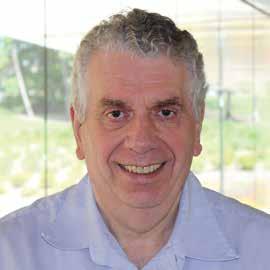
Teneketzis specialized in using information to make decisions and optimize the performance of systems in the context of centralized and decentralized architectures. He made fundamental contributions to learning in stochastic environments, information structures in decentralized stochastic control, decentralized sequential detection, multi-armed bandits, scheduling resource allocation and routing in networks, diagnosability in discrete event systems, real-time communication and information theory, mechanism design, energy markets, and cyber-physical security.
He combined perfectionist standards of research with a warm and generous nature. He served as mentor to colleagues as well as students, and was always willing to offer advice and support on a variety of topics. Many of his former students came back to attend “Information, Decisions and Networks: A workshop in the honor of Demos Teneketzis 65th Birthday” in July 2016.
“I always looked at him as somebody to model after,” says Mingyan Liu, the Peter and Evelyn Fuss Chair of ECE who worked

with Teneketzis for nearly two decades. “He embodies what good scholarship means, and he was always available when I had questions. He took a genuine interest in my work.”
Prof. Stéphane Lafortune joined U-M two years after Teneketzis, and the two were office neighbors and research collaborators. “He was a superb researcher, and his academic standards were very high,” said Lafortune. “He exhibits unquestionable integrity, and he’s extremely devoted to his students. He’s been a great colleague and role model to have for all these years.”
After receiving his BS degree in 1974 from the University of Patras, Greece, he came to the U.S. and earned his MS and PhD degrees from the Massachusetts Institute of Technology in 1976 and 1979, respectively. After working as a senior engineer at Alpatech, Inc., he joined the University of Michigan faculty as assistant professor in 1984, and was promoted to associate professor in 1987, and professor in 1993.
Teneketzis received the George S. Axelby Outstanding Paper Award, and U-M’s Inventor Recognition for the software tool UMDES-LIB, an outgrowth of collaborative research in fault diagnosis of discrete event systems which he helped establish as a distinct area of research. An outstanding educator, he received a Tau Beta Pi Professor of Year Award, a CoE Education Excellence Award, and a U-M Distinguished Graduate Mentor Award. He is an IEEE Fellow.

66
From left: Prof. Raja Sengupta (former PhD student of Lafortune), Prof. Demos Teneketzis, Dr. Meera Samapth (former PhD student), Prof. Stéphane Lafortune, and Prof. Jim Freudenberg. Photo taken in 1994.
Teneketzis stands with friends and colleagues at “Information, Decisions and Networks: A workshop in the honor of Demos Teneketzis 65th Birthday.” July 2016.
“He exhibits unquestionable integrity, and he’s extremely devoted to his students.”
— Stéphane Lafortune
ELECTRUM Brings Its New Electrical System to the World Solar Challenge
The University of Michigan Solar Car team took third place at this year ’s Bridgestone World Solar Challenge in Australia, the only American team to cross the finish line among more than 40 contenders, including many professional teams. Michigan’s solar car team may be comprised solely of students, but they race like the pros.

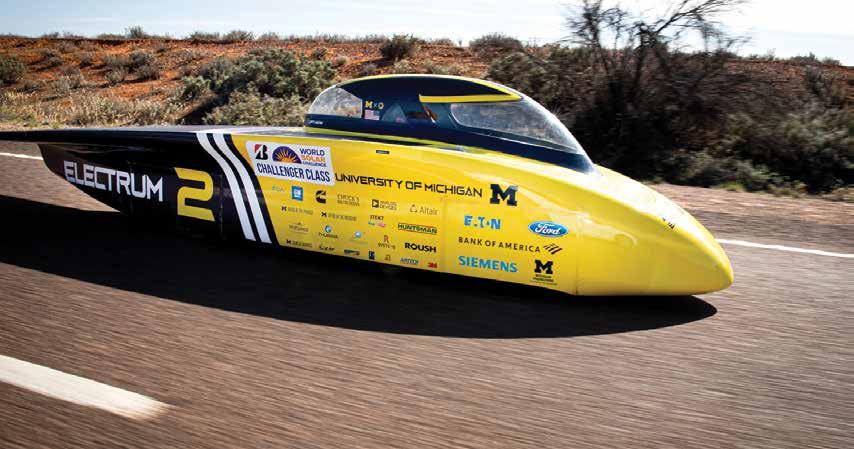
Michigan reached Adelaide, South Australia, on Thursday afternoon, after five days and 1,800 miles spent “racing our race,” the team’s mantra.
The 2019 vehicle, Electrum, might look like the one that raced at the previous world challenge, but under the hood were significant changes. In a complete electrical system overhaul, the team ditched traditional lithium ion batteries and switched to lithium polymer cells. They saw double-digit boosts to power efficiency, while cutting down weight per cell.
“Given the long hours we’ve been pulling to make a competitive, top-tier solar car, and considering the fact that—unlike many other top teams—we’re all undergraduates that were taking classes through the start of the summer, I’m impressed that our character and strong work ethic can bring us all together when this should be, by all rights, an extremely tenuous relationship,” said Ian Stewart, an electrical engineering sophomore who serves as the race microsystems engineer “All of us feel the stress of competing on the world stage, but we’re using it to band together.”
Electrum is the fifteenth car made by Michigan Solar since being founded in 1989. The team has won the American Solar Challenge nine times, had podium finishes in the Bridgestone World Solar Challenge six times, and won its first international championship in 2015 at the Abu Dhabi Solar Challenge. With more than 100 students from schools and colleges across the university, it’s one of the largest student organizations on campus.
Electrum cruises down Australia’s Stuart Highway in third place on the final day of racing.
Photo: Joseph Xu
STUDENT FEATURES 67
Michigan Electric Racing: No Longer a Hybrid
For years, the Michigan Hybrid Racing (MHybrid) team tested their ingenuity, engineering know-how, and pure adrenaline drive as U-M’s official Formula Hybrid racing team. In 2019, they switched gears to pure electric.

MHybrid – a multidisciplinary, student-run organization – was founded in 2011 with the mission to design, build, test, and finance their own high-performance, hybrid-electric Formulastyle race car. The team transitioned from hybrid vehicles to full-electric as a response to overall trends in the automotive industry, and it proved to accelerate their success. Just one year after leaving the gas engine behind, the team realized its best performance in competition – a 2nd place finish at Formula SAE North.
“Being able to focus on just one powertrain helped our reliability,” said EE senior (and now alumnus) Spencer Hansen. “This is my third year on the team. When we were hybrid, both our electric powertrain’s power output and the gas engine’s output was about 40 hp. When we switched to electric, our car’s total output was 110 hp.”
When designing a sustainable vehicle, it’s common to want to design one that has the best gas mileage, or one that runs entirely off renewable energy. But it may seem strange that an additional criterion would be that it is good at racing. However, the team’s academic advisor Prof. Heath Hofmann referenced Tesla to argue that, no matter how sustainable your car is, consumers ultimately want a cool car.
“By emphasizing the performance of their vehicles, Tesla has opened their market beyond the people who want their products only for sustainability reasons,” said Hofmann, who worked with Tesla when they were designing their first vehicle, the Roadster. “I thought that was pretty clever and, at least thus far, a successful strategy for them.”
Members of MER are exposed not only to the engineering challenges of designing an all-electric racing car, but they are also coping with the real-world economic and market challenges. MER is open to students from across the university, including non-engineering students, with about 35% of the students coming from electrical and computer engineering. The students do all the vehicle design work, coordinate all the manufacturing, and manage the entire budget.
“It’s also a multidisciplinary design project, which is awesome,” said Michael Reber, a senior (and now alumnus) in computer engineering who spent time this past year designing custom inverters. “I’m a computer engineer, but I’m working in power electronic design, and I’m working with someone in EE who is doing the analog software.”
EE senior Ella Ahn joined the team after they were already fully electric, because she wanted more hands-on experience outside of class. “A lot of the work that I do on the team is circuit design, which is not what I mainly do in my coursework,” said Ahn, who is one of about 15 women on the team.
68
The MER19 was designed, built, and tested entirely by students. In their first year as a fully electric team, they placed 2nd at Formula SAE North. Spencer Hansen is in the driver’s seat.
While Michigan Electric Racing (MER) is a student-run team, they do appreciate advice from Hofmann, and welcome support from companies – whether technical or financial. This past year, for example, Keysight Technologies Automotive Customer Center in Novi, Michigan worked closely with Hansen, who was custom designing a new battery pack. Keysight’s equipment helped Hansen’s division test the battery design, which he said was “invaluable in designing the cooling of our car ’s battery pack.” [read “Wolverines Don’t Usually Run This Fast” for an inside look into Keysight’s partnership with Hansen.]

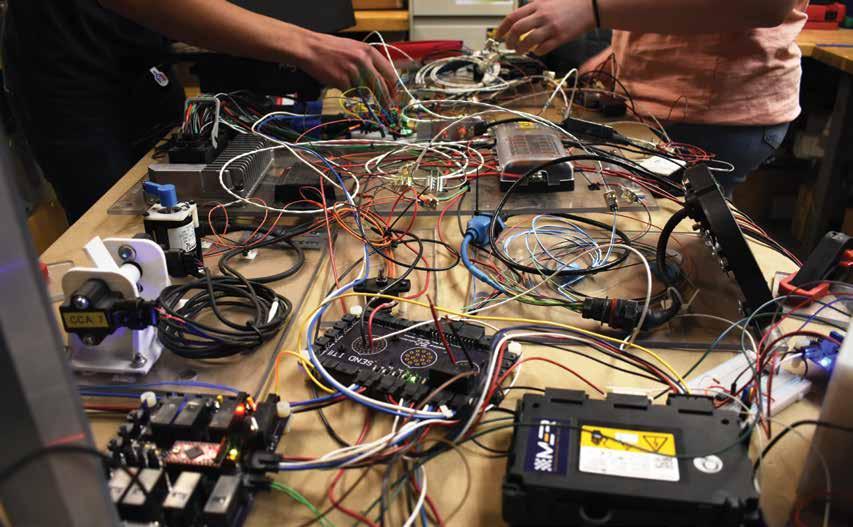
The team forms close relationships with corporate sponsors, who often recruit team members. In recent years, former team members have gone on to work for Ford, GM, FCA, Tesla, Boeing, Raytheon, Cruise, Stryker, and Bosch, among others.
“All of my job offers came through being on this team,” said Reber.
“When we were hybrid, both our electric powertrain’s power output and the gas engine’s output was about 40 hp. When we switched to electric, our car’s total output was 110 hp.”
— Spencer Hansen
69
The electric powertrain and controls division alone produce over 100 circuit boards a year.
STUDENT FEATURES
Students Helping Turn Students Into Professionals

In just its second year of existence, the University of Michigan Student Chapter of the IEEE Geoscience and Remote Sensing Society (GRSS) received the IEEE GRSS 2020 Chapter Excellence Award, “In recognition of an outstanding set of activities as a GRSS Chapter.” The IEEE GRSS applies the theory, concepts, and techniques of science and engineering to the remote sensing of the earth, oceans, atmosphere, and space. It presents this award to no more than one chapter per year.
“Our chapter is focused on technical activities and career development for graduate students and young professionals within EECS, CLaSP [Department of Climate and Space Sciences and Engineering], CEE [Department of Civil and Environmental Engineering], etc.,” said ECE doctoral student and chapter chair Tianlin Wang.


Wang established the U-M chapter of GRSS September 5, 2018 to provide a focal point for students and young professionals with an interest in geoscience and remote sensing. Michigan’s student chapter was the first such chapter in the United States. Among its more ambitious activities, the chapter organized the 2019 IEEE GRSS Workshop on Microwave Remote

Sensing, which took place November 23, 2019 at the University of Michigan. The workshop was attended by more than 50 individuals on campus, and more than 30 others from around the world – months before COVID became a reality.

They also established the IEEE GRSS Young Professionals Seminar, and co-organized a series of seminars with CLASP that numbered 16 in 2019. They collaborated with five other student organizations on campus to offer a “Training for Better Presentation” graduate speaker series, giving 10 different students the opportunity to present their research to their peers. And they hosted guest speakers on campus.

Associate research scientist Dr. Leland Pierce was the faculty advisor to the group. He also serves as president of the Southeastern Michigan Chapter of IEEE GRSS.

“The student members are very enthusiastic and hard-working,” Pierce says. “I am happy to help them with their efforts to broaden their education and to hold events that help them get to know each other while connecting with other leaders in the field.”
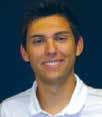 TIANLIN WANG (EECS) Chair
DAVID MAYERS (CLASP) Vice Chair
RAJESWARI BALASUBRAMANIAM (CLASP) Secretary
LEELAND PIERCE (EECS) Advisor
HUANTING HUANG (EECS) Treasurer
TIANLIN WANG (EECS) Chair
DAVID MAYERS (CLASP) Vice Chair
RAJESWARI BALASUBRAMANIAM (CLASP) Secretary
LEELAND PIERCE (EECS) Advisor
HUANTING HUANG (EECS) Treasurer
NAVID BARANI (EECS) Treasurer 70
MARYAM SALIM (CLASP) Webmaster
Leaders for Better Engineering
RAHEIDA KHALIQUE
Raheida is a senior majoring in Electrical Engineering with a focus in applied electromagnetics and power systems. She’s been an active member of the Society of Women Engineers chapter at Michigan, for which she served as External Vice President last year, and she was also a member of U-M’s Bangladeshi Students Association.
Through SWE, Raheida has been involved in many outreach projects, including an annual trip to India where SWE members tutor young students on STEM projects and help mentor young women. Raheida also helped organize the SWE Career Fair, the largest engineering career fair at Michigan, to help her peers expand their opportunities and improve their professional network. For Raheida, outreach is a critical component of engineering.
“As engineers, we’re creating solutions for different communities, but if you don’t have a diverse group of perspectives, you can misunderstand important aspects of the problem, and your solution won’t work,” Raheida said. “That’s why social issues are incredibly important and social identity is really important in engineering.”
CAMILLE BURKE
Camille graduated this spring with a BSE in Electrical Engineering with a focus in power systems and photonics. During her time at Michigan, she served as an executive board member for U-M student group, GRID Alternatives Students for Sustainable Energy, an affiliate of the NGO GRID Alternatives, which sends students to underprivileged communities around the world to install solar panels to provide clean, affordable energy to homes and communities.
Burke also served as president of the U-M student chapter, ONE, which is a global advocacy organization that works to mobilize governments to push legislation to eradicate issues such as extreme poverty, educational inequality, and more.
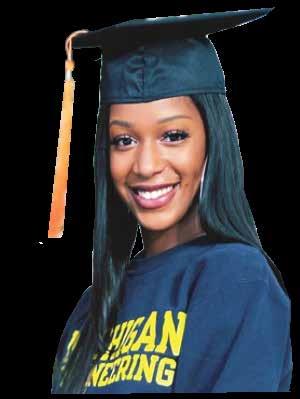
“Engineering is not just about the numbers, it’s not just about the lab results, it’s about the impact, it’s about who it’s delivered to in the end, it’s about how it’s applied in real life,” Camille said. “I don’t think I could walk away from my engineering experience not being at least conscious of environmental justice and social justice and how important it is and what we do as engineers.”
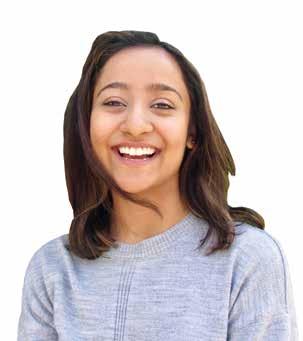
71
Two ECE undergraduate students were honored with a 2020 University of Michigan Martin Luther King Jr. Spirit Day Award. The award recognizes members of U-M’s community “who exemplify the leadership and vision of Dr. King through their commitment to social justice, diversity, equity, and inclusion.”
Amulya Parmar: One Conversation Can Change Everything
Amulya Parmar, an undergraduate student studying both computer engineering and business administration, has started multiple businesses, launched product across the U.S., been a speaker at the United Nations, given TEDx talks, and more. Behind each of his accomplishments was a conversation that helped propel him forward.

Amulya started his first company at the age of 15. While attending a top-ranked high school in Michigan, he realized that not everyone had equal access to skilled learning opportunities. So he took $100 of his 15th birthday money to buy a computer server and created his first website dedicated to education. At the same time, he launched a hosting company to offset some of the costs, but soon after started offering space for free and eventually sold the company.
In 2017, he created Host Your Voice, a digital marketing accelerator for nonprofits. Just one year later, Host Your Voice was named one of five partners of the United Nations. Amulya shares: “What started as a cold message on a social platform led to a call, and eventually a partnership.”
Thanks to the international success of Host Your Voice, he’s been to the United Nations three times, most recently in 2020, and was invited to give a talk at TieCon Detroit 2017 – Michigan’s largest entrepreneurial conference.
At the UN, he met Paul Pilozzotto, a former president of CBS and founder of Givewith, which is dedicated to driving company growth while funding environmental and social impact programs. After this conversation, Amulya was invited to recruit students at the University of Michigan for Givewith.
For Amulya, this was just the start of his entrepreneurial and engineering journey.
As a student in Ann Arbor, Amulya was looking for housing, and grew tired of having to personally visit every location to get an
idea of the living conditions. So in March 2020, he co-founded the company LeaseMagnets.
LeaseMagnets offers apartment communities the ability to provide important information to potential renters visiting their website by creating realistic virtual tours. He’s taking a semester off to devote his attention to the company, which took 2nd place at the annual Ann Arbor SPARK Entrepreneur Boot Camp Celebration (behind an established company that had raised $50M in the past year).
Outside of entrepreneurship, his summer internship with JP Morgan was extended so he could continue working on a machine learning solution for business automation. “I was co-responsible for rebuilding an entire automation pipeline in multibillion dollar commercial pipeline,” said Amulya. He’s also participated in a three-day machine learning hackathon in Israel sponsored by Google for Startups, where he received an award for being the most impactful hack.
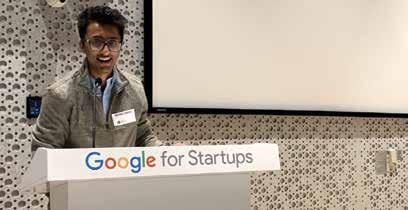
What Are You Most Passionate About?
I’m very passionate about communication, and removing friction from processes and experiences that help people. Even something as simple as getting a virtual tour on demand can be simply deconstructed to a friction that I personally experienced and I aimed to solve.
Additionally, I am passionate about bridging the gap between digital and physical experiences. I was the inventor of the first way to share contacts two ways via a QR code with my app Cardz (Play Store), and LeaseMagnets is the first way to take a virtual tour as if it was an in-person tour. I believe the disruption of large physical industries like malls, real estate, and education to digital formats has begun, and COVID has been their catalysts. Additionally – I belong to a few organizations that support students with disabilities, including LimeConnect. I grew up with some idiopathic hearing loss, and I learned the importance of hearing others, and I found my own internal voice through that experience. I have no doubt that this contributed to my passion for communication, and making sure other voices are heard.
What’s Next?
I am building a development bootcamp and hiring platform/ community called BuildMy.App to enable entrepreneurs with the best way to learn Fullstack or hire full stack talent to enable them with confidence that they can “Build my app.”
Outside of that community, I aim to launch a book and article series called Resource to Resourceful and podcast called “One Conversation can change Everything” on Host Your Voice.
“I’m super grateful for the University of Michigan,” said Amulya. “It’s been the most supportive university I could have ever asked for on every level: entrepreneurship, machine learning, software, creativity, even business.
72
Amulya Parmar at the Google Startups HQ Hackathon, where he and his teammates showcased Pinocchio, a chatbot associated with Whatsapp that used a machine learning algorithm to detect fake news.
Students Get Insider’s View of ECE in Industry

ECE Expeditions gives students behind-the-scenes access to a variety of companies and fields. Students learn about the role of electrical and computer engineers in industry, get to network with high-ranking U-M alums, and explore the different business and company atmospheres. Students also get to network with other current ECE students who are in different degree programs or research areas.
Before the COVID-19 pandemic shutdown, students participated in two separate ECE Expeditions: exploring tech companies in Ann Arbor and New York City.
The trip to NYC was a first. Staying in the heart of Times Square, students toured IBM, Duality, Richards Manufacturing, MEMX, and Elenion Technologies while also getting time to explore and enjoy the city that never sleeps.
“The ECE Expedition overall was very, very fun and very interesting,” said EE undergraduate student Hassan Fawaz. “I thought it was just going to be another networking opportunity, but it was a lot more than that. We got to talk to alumni who went through the same struggles as us, and they gave us detailed tips on how to deal with school. And the technical demos really showed us how relevant everything that we’re learning in class is.”
ECE alumni are typically part of the company tours. At IBM, the Honorable Zachary Lemnios (BS EE), who leads the Physical Sciences and Government Programs globally across IBM Research, spent time with the students, followed by a panel of engineers, all U-M alums.
“My favorite part of the IBM visit was actually the panel, because those panelists were speaking not just as IBM employees, but as Michigan alumni who shared their life stories and their experience,” said ECE master’s student Minzhi Chen. “I got to speak to one after, and he was very warm and reassuring and gave me really good advice.”
The NYC trip included a visit to Duality, a data security company that addresses the need of enterprises to collaborate on sensitive data, co-founded by ECE alumnus Kurt Rohloff.
“I think my favorite part of the visit was the fact that I got to speak with someone who was a founder of a startup,” said Jonathan Wong, an Electrical Engineering undergrad attendee.
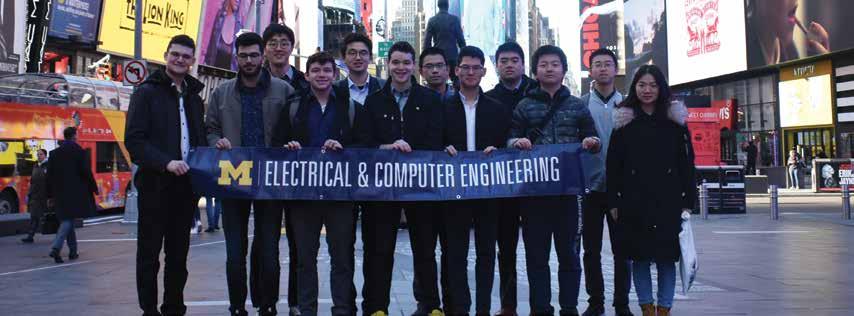
“That’s a very different kind of culture and work life that you don’t really get to hear about too much, because a lot of people go into big companies. Hearing his perspective about what it’s like was very cool.”
Everyone crossed over to New Jersey to visit utilities supplier Richards Manufacturing Company, where they met with ECE
alum and company VP Zachary Bier, and Members Exchange (MEMX), a FinTech firm led by CEO and U-M alum Jonathan Kellner.
They finished up their NYC expedition at Elenion Technologies (recently acquired by Nokia), developer of system-on-chip optical engines. They got to visit one of their clean rooms, which turned out to be a favorite experience of Fawaz.
For the Fall term expedition, students stayed close to home with only a two-day study break and visited KLA’s newest headquarters in the morning, and ECE startup Quantum Signal AI in the afternoon.
KLA’s main headquarters is located in Silicon Valley, but they are currently building a second headquarters in Ann Arbor Technology Park, which will officially open in 2021. The company is led by ECE alum, President, and CEO Rick Wallace. The company is hoping to hire hundreds of U-M alumni.
Quantum Signal, co-founded by Mitch Rohde and his advisor Prof. Emeritus Bill Williams, was acquired by Ford Autonomous Vehicles LLC in 2019. Rohde stayed on as CEO, and is excited to help make robotaxis, driverless delivery vehicles, and other futuristic mobility concepts a reality in the near future.
73
Students participate in a LEGO exercise during a visit with KLA in Ann Arbor, MI.
ECE, Pre-Med, and COVID-19
Stefany Escobedo brought home a puppy from the Humane Society a year ago, and he keeps her company as she remains fairly isolated in her apartment in Ann Arbor due to the pandemic. This is a new normal that’s not normal.
Escobedo is a master’s student who recently graduated from Michigan with her BSE in Computer Engineering. In addition to serving as a graduate student instructor, she is part of MEDPREP (a post-baccalaureate premedical program), serves as an ECE Ambassador, was president of the Student Veterans of America (SVA) University of Michigan chapter, a board member of IEEE, and a member of the engineering honor societies HKN and Tau Beta Pi as well as the Society of Hispanic Professional Engineers.

We wanted to find out how life has changed for her at Michigan since the pandemic struck campus, and at the same time caught a glimpse into the background of this remarkable student. How do you see your ECE degree meshing with your goal of being a doctor?
I like working on projects that are for people, that are critical for their well-being. And embedded systems are in everything. My hope is to be a part of that bridge between technology and medicine, and hopefully help somebody in the future.
Back in March when the University first shut down, did you stay on campus or return home?
I first returned home to Miami because I already had a flight scheduled so I could do some work in the Air Force Reserve. I first thought I’d just stay there, but my family home includes my brother’s family with his three daughters, and his dog, and I have a dog. It was chaotic – and I was used to having a quiet place to retreat to after school and a library to study in. Since everything was closed, it became a choice between being around people, or passing my classes, so I came back.
As a Graduate Student Instructor for EECS 461 (Embedded Control Systems), have you noticed signs that students are having problems?

Fortunately, no one in our class has tested positive for COVID-19, but I’m sure there are students who are going through other stressors. We’ve had some students who stopped attending the labs and stopped submitting assignments. I think we all need to be keeping track of individuals like this.
Were there any positive changes that were spurred by COVID?
I like having 24 hour exams. The questions are more in depth and more open-ended and application based, as opposed to memorization of information and equations. And getting away from the time crunch helps some people. Some of my friends really like to sleep all day and work until 4 in the morning, so they really like that flexibility. And it’s great that now all the lectures are recorded.
74
Student Athletes
KEVIN BUCA
Major: Electrical Engineering (Bachelor’s)
Academic All-Big Ten (2019)
Two-time U-M Athletic Academic Achievement (2018-19)

Big Ten Sportsmanship Award honoree (2019)
“Engineering is one of those fields where you can make an impact regardless of what you decide to do,” Buca explained, mentioning specifically the creation of autonomous vehicles or designing systems to reduce traffic on roadways. “Electrical engineering is about designing faster implementations for some of the things we have now.”
“When I set out to do things, I don’t think about awards. I think about how I can improve myself as a person. The way I see it, if you do well in your journey, the recognition will come.”
“Michigan provides you with so many opportunities when you’re here and after you leave. The networking and relationships you build are invaluable. Being here opens new doors, new avenues for growth. Above all, it provides you with the resources to develop as a person and an athlete. It makes you better.”
ALAN GERDOV
Major: Electrical Engineering (Bachelor’s), with a Ross School of Business minor
Academic All-Big Ten (2020)

UG Assistant Coach (2019)
“My brother and sister are electrical engineers. My dad is a mechanical and aerospace engineer. Listening to these people who inspire me every day talk about things I can’t understand, it piqued my interest,” Gerdov said. “Slowly, through my own research, I learned more about those conversations and wanted to join in on them.”
“Electrical engineers are essential to industry. Nearly everything in our lives has some kind of electrical component. Engineers are types of people who are passionate about solving problems and making things more efficient.”
“I’ve been bombarded with adversity. I’m either going to run from it or overcome it. To me, being at Michigan, in a word, means family. If it wasn’t for all the opportunities provided to me by my family, coaching staff and friends, I don’t think I would’ve been able to conjure up what it took for me to get over all those hurdles. Michigan made me the person I am today.”
THOMAS COPE
Major: Electrical and Computer
Engineering (Master’s); received his BSE in Electrical Engineering in 2020. Big Ten Medal of Honor (2020)
Three-time Academic All-Big Ten (2018-20)
Holds the record at U-M for 200-yard breaststroke
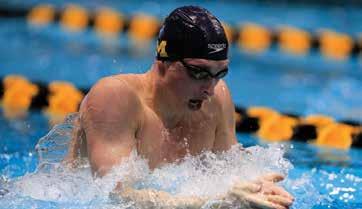
“What I really want to do with my degree is go forward in the field of robotics and brain-machine interfaces,” said Cope. “In my research this past year, we’ve been working with amputees, and it’s really crazy as an athlete to someone who can’t use a part of their body because it’s such an important thing to us. So, to be able to try to return some kind of faculty to people with disabilities – it would be a great thing to do.”
“When multiple people are working on the same thing, you get so many creative solutions and you are really able to move forward in what you’re doing – really you can just solve any problem if you can work together well enough.”
“I’m a GSI and a student, so I see both sides. I go to office hours almost every day, and I’m always encouraging my students to come to my office hours. I think it’s easy to feel alone with online learning, but there are actually people here, dedicated to making sure you’re successful as a student.”
75
STUDENT HONORS, AWARDS + ACTIVITIES
CHRIS ALLEMANG
Doctoral Student
3rd place poster award for “Passivation of Thin Channel Zinc Tin Oxide TFTs using Al2O3 Deposited by O3-Based Atomic Layer Depositionat the 2019 LNF Users Symposium.
LAURA ANDRE
Doctoral Student
2020 Optics and Photonics Education Scholarship, SPIE
NAVID BARANI
Doctoral Student
Best Paper award for “Biological Cells
Communication: Quorum Sensing versus Electromagnetic Signaling,” at the 2020 North America Radio Science Meeting (USNCURSI) Student Paper Competition
Best Poster Award for “A New Phase Modulation Scheme for Ultra-Low Frequency
Handheld Antennas Enabling Reliable Wireless Underwater Communication” at the 14th International Conference on Underwater Networks & Systems (WUWNet’19)
MATTHEW BELZ

Doctoral Student
Analog Devices Outstanding Student Designer award
National Defense Science and Engineering Graduate Fellowship
ESTER BENTLEY
Doctoral Student
National Defense Science and Engineering Graduate Fellowship
KEVIN BUCA
Undergraduate EE Student
Big Ten Distinguished Scholar
CAMILLE BURKE
Undergraduate EE Student
MLK Spirit Award, University of Michigan
XIUZHANG CAI
Doctoral Student
2nd Prize for best student paper for “A Machine Learning Based 77 GHz Radar Target Classification for Autonomous Vehicles” at AP-S/URSI 2019.
HSIANG-WEN CHEN
Doctoral Student
Chia-Lun Lo Fellowship, Rackham Graduate School
2020 Optics and Photonics Education Scholarship, SPIE
MINCHANG CHO

Doctoral Student
IEEE SSCS Predoctoral Achievement Award, IEEE Solid-State Circuits Society





SUNG YUL CHU
Doctoral Student
Finalist, 2020 Lemelson-MIT “Move it!” Graduate Student Prize, for wireless electric vehicle invention



JOSEPH COSTELLO
Doctoral Student
NSF Graduate Research Fellowship



VERONICA CONTRERAS
Master’s Student
76
GEM Fellowship, National GEM Consortium
THOMAS COPE
Undergraduate EE Student
Big Ten Distinguished Scholar


ZHE DU
Doctoral Student
Best Student Paper, 3rd place, for “Mode Clustering for Markov Jump Systems” at the 8th Int. Workshop on Computational Advances in Multi-Sensor Adaptive Processing
STEFANY ESCOBEDO
Graduate Student
COE Distinguished Leadership Award
Google Scholarship
DEJIU FAN
Doctoral Student
1st place poster award for “From 2D to 3D: Strain- and Elongation-free Topological Transformations of Optoelectronic Circuits,” at the 2019 LNF Users Symposium
MICHAEL FISHER
Doctoral Student
Best student paper finalist at the 58th IEEE Conference on Decision and Control, Nice, France
ZACHARY FRITTS
Doctoral Student
NSF Graduate Research Fellowship
JOHN GEARIG
Undergraduate EE Student
COE Roger M. Jones Fellowship
JAMES GRUBER
Doctoral Student
NSF Graduate Research Fellowship, Honorable Mention








SHOUCHANG GUO
Doctoral Student
Magna Cum Laude award for “OSSI
Manifold Model for High-Resolution fMRI Joint Reconstruction and Quantification” at the 2020 International Society for Magnetic Resonance in Medicine
ELIZABETH HOU
Doctoral student
Best Oral Presentation for “Anomaly Detection in Partially Observed Traffic Networks” at the 2019 Michigan Student Symposium for Interdisciplinary Statistical Sciences
RAHEIDA KHALIQUE
Undergraduate EE Student
MLK Spirit Award, University of Michigan
CHRISTOPHER KNEBEL
Undergraduate CE Student
EECS Outstanding Achievement Award
William L. Everitt Student Award of Excellence
DAVID KUCHER
Undergraduate CE Student
COE Distinguished Academic Achievement Award
JEREMY LATHAM
Undergraduate EE Student
EECS William Harvey Seeley Prize



77
STUDENT HONORS, AWARDS + ACTIVITIES
REBECCA LENTZ
Doctoral Student
NSF Graduate Research Fellowship, Honorable Mention










MATTHEW LICHTINGER
Undergraduate EE student
EECS Commercialization/Entrepreneurship Award
RUNDAO LU
Doctoral Student
Best Student Paper award for “A 16-Element Fully Integrated 28GHz Digital Beamformer with In-Package 4×4 Patch Antenna Array and 64 Continuous-Time Band-Pass
Delta-Sigma Sub-ADCs” at the 2020 IEEE Symposium on Radio Frequency Integrated Circuits.
TONGLIN LU
Doctoral Student
NSF Graduate Research Fellowship
BROOKE MASON
Master’s Student
2020 DOW Sustainability Fellowship
GILLIAN MINNEHAN
Undergraduate CE Student
EECS Outstanding Service Award
HOSSEIN NAGHAVI
Doctoral Student
Featured paper, “Terahertz Electronics: Application of Wave Propagation and Nonlinear Processes,” in Applied Physics Reviews
TREVOR ODELBERG
Doctoral Student
National Defense Science and Engineering Graduate Fellowship
JOSHUA POLARK
Undergraduate EE Student
COE Distinguished Academic Achievement Award
BRIAN RAEKER
Doctoral Student
Towner Prize for Outstanding Engineering Graduate Student Instructors, College of Engineering
NATHAN RIOPELLE
Undergraduate CE Student
EECS Outstanding Research Award
BEHNOUSH ROSTAMI
Doctoral Student
Selected to participate in Rising Stars 2020
DEBJIT SARKAR
Undergraduate EE Student
EECS Outstanding Research Award



CODY SCARBOROUGH
Doctoral Student
Exceptional Student Contributions Award for “Modified FloquetBoundary Condition for Open Boundary Problems with N-Path Symmetry” at Metamaterials 2020 (The 14th International Congress on Artificial Materials for Novel Wave Phenomena)

78
MINGSHUO SHAO
UG CE Student (current masterʼs student)

EECS Commercialization/Entrepreneurship Award

YUGUO SHENG


Undergraduate EE Student
EECS Outstanding Achievement Award
MORTEZA TABA

Doctoral Student
Featured paper, “Terahertz Electronics: Application of Wave Propagation and Nonlinear Processes,” in Applied Physics Reviews

TIANLIN WANG
Doctoral Student
Distinguished Leadership Award, College of Engineering
Richard and Eleanor Towner Prize for Distinguished Academic Achievement, College of Engineering
First Place, Poster Paper Competition, 2020 IEEE Rising Stars Conference
Honorable Mention, Richard and Eleanor Towner Prize for Outstanding PhD Research, University of Michigan


Presidentʼs Postdoctoral Scholars Fellowship, The Ohio State University
STEVEN
Doctoral Student
Magna Cum Laude award for “Myelin Water Imaging Using STFR with Exchange” at the 2020 International Society for Magnetic Resonance in Medicine. Featured in the journal Magnetic Resonance in Medicine for “Myelin Water Fraction Estimation Using Small-tip Fast Recovery MRI.”
JACK WISBISKI
Undergraduate EE Student
EECS Richard K. Brown Memorial Scholarship


JOSHUA WOODS
Undergraduate EE Student
William L. Everitt Student Award of Excellence
ZHANNI WU
Doctoral Student
Rackham Predoctoral Fellowship, University of Michigan
Selected to participate in Rising Stars 2020
MICHELLE YI
Undergraduate EE Student
EECS Outstanding Service Award
MOSTAFA ZAKY
Doctoral Student
Best student paper award for “Physics-Based Modeling and Electromagnetic Scattering Computation for Snow-Packs” at the 2019 IEEE MTT-S International Conference on Numerical Electromagnetic and Multiphysics Modeling and Optimization.
XUERU ZHANG

Doctoral Student
Rackham Predoctoral Fellowship, University of Michigan
Selected to participate in Rising Stars 2020
79
T. WHITAKER
ECE COUNCIL
The ECE Council (ECEC) is a prestigious group of alumni and friends of the department who are committed to ECE’s goal of being a national and global nexus of positive, transformational change across all industries. The ECEC provides guidance and help with key priorities, including alumni engagement, industry engagement, development, diversity, entrepreneurship, education innovation, and future initiatives
SYED ALI
MSE EE ’81
Board of Directors, Marvell. Founder and CEO of Cavium Inc.


TODD COLEMAN
BSE EE and CE ’00; also MS and PhD EE from Massachusetts Institute of Technology
Professor, Bioengineering, University of California, San Diego

RHONDA FRANKLIN
MSE PhD EE ’90 ’95
Professor, Electrical and Computer Engineering, University of Minnesota
K. CYRUS HADAVI PhD EE ’83
Founder & CEO, Adexa, Inc.
KATHERINE HERRICK
BSE MSE PhD EE ’93’ 95 ’00
Senior Fellow, Raytheon Missile Systems
ZACHARY LEMNIOS
BSE EE ’76; also MS EE Washington University
Vice President, Government Programs, IBM
PRASHANTH MAHENDRA-RAJAH
BS ChemE 1992; also MS in Engineering from Johns Hopkins University, MBA from Purdue University

Senior Vice President, Finance and Chief Financial Officer, Analog Devices, Inc.

ISAAC PORCHE
PhD EE:S ’98
Deputy Director, Applied Research Lab, Penn State University
JORDI RIBAS
PhD EE:S ’96
Corporate Vice President, AI Products, Microsoft
MITCHELL ROHDE
BSE MSE EE ’94 ’96; MSE PhD
BME ’97, ’00
CEO & Co-founder, Quantum Signal AI, LLC
NAVIN SHENOY
BSE EE ’95; also completed Stanford Executive Program
Executive Vice President and General Manager, Data Platforms Group, Intel Corporation









AMIT SINGHI
MSE EE:S 1989
COO and CFO, Piston Group
VIK VERMA MSE EE ’89
CEO, 8×8, Inc.
DAWSON YEE
MSE EE ’87
System Engineer –AzureHardware, Quantum Computing, Microsoft
80
ALUMNI SPOTLIGHTS
Nicolaos G. Alexopoulos Earns Alumni Medal
For Nicolaos (Nick) Alexopoulos’ work championing the discipline from the classroom to the boardroom, he received Michigan Engineering’s 2019 Alumni Medal, the highest accolade given by the Michigan Engineering Alumni Board.
Alexopoulos earned his BSE, MSE, and PhD in Electrical Engineering from the University of Michigan in 1965, 1967, and 1968, respectively. Since 2008, he has served as a vice president at Broadcom Corporation, and currently serves as Vice President for Academic Programs and University Relations with Broadcom Foundation.
Under his 11 years of leadership as dean of engineering at the University of California, Irvine, the school more than doubled enrollment and faculty, and nearly tripled research expenditures.
As the electrical engineering department chair at UCLA, Alexopoulos established the nation’s first High Frequency Electronics Research Center. He also directed two STEM programs focused on underrepresented students in California.
Alexopoulos has served as editor-in-chief of the journal Electromagnetics and authored more than 270 journal and conference papers. He was elected to the National Academy of Engineering in 2007 for “contributions to microwave circuits, antennas, and structures for low observable technologies, and for contributions in engineering education.”
During his lecture at Michigan, entitled “My First Student: My Mother,” Alexopoulos described his journey from Nazi occupied Greece as a child, to putting himself through school at Michigan, and his impact as a teacher and administrator

Rick Bergman: Designing the Future of the Human-tech Interface
Rick Bergman (BS EE), the Executive Vice President of Computing and Graphics at Advanced Micro Devices (AMD), received the 2019 ECE Alumni Impact Award. This award is the highest recognition granted by ECE to its alumni.
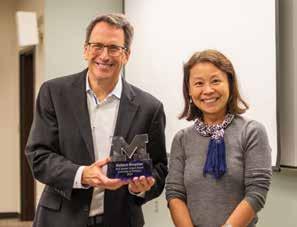
Bergman is responsible for AMD’s high-performance PC, gaming, and semicustom businesses. He originally joined AMD in 2006, where he served in a series of senior executive positions. During this time, he was responsible for delivering microprocessors and graphics chips to AMD customers across server, client, embedded and game consoles, and for driving the technology that put a graphics chip and processor on a single piece of silicon.
Bergman took a break from AMD between 2011-2019 to serve as president and CEO of Synaptics, a leading developer of human interface solutions including touch, display, IoT and biometrics solutions.
After earning his MBA from the University of Colorado, Bergman joined ATI Technologies. Until AMD acquired ATI in 2006, Bergman was senior vice president and general manager of ATI’s PC Group. Additionally, he has held senior management positions at S3 Graphics, Texas Instruments, and IBM.
During his talk at Michigan, “Leading Through High Performance Technology,” Bergman recalled the key lessons learned at Michigan: the importance of friendships, hard work, understanding both hardware and software, how to think critically and solve problems, and the amazing power of technology to change lives.
“Your children, someday, won’t understand what a [light] switch is,” Bergman said. “They’ll just expect that naturally lights will come on and the temperature will adjust and [the room] will recognize who they are.”
81
Dr. Nicolaos G. Alexopoulos and Mingyan Liu, the Peter and Evelyn Fuss Chair of ECE.
“He is the Michigan Difference personified.”
— Khalil Najafi, the Schlumberger Professor of Engineering and Professor of EECS
Rick Bergman accepts the ECE Alumni Impact Award from Mingyan Liu, the Peter and Evelyn Fuss Chair of ECE.
“As exciting as this decade has been in the human-machine interface, I think the next decade is going to be even more exciting.”
— Rick Bergman
Karen Fireman is Honored for Her Distinguished Service
Karen Schreiber Fireman’s decades of experience in industry and outstanding dedication to electrical and computer engineering education at the University of Michigan was honored with Michigan Engineering’s 2019 Distinguished Service Award, one of the highest accolades given by the Michigan Engineering Alumni Board. The award honors a graduate who has given generously of their time and talent to further college projects and activities.

Schreiber Fireman has served as a Michigan Engineering Alumni Board member and was vice chairman of the Electrical and Computer Engineering Council. She earned her BS in Computer Engineering from U-M in 1980. She earned a MS in Numerical Analysis in 1983 and MBA in 1985, both from Johns Hopkins University.
Schreiber Fireman has over 25 years of experience in compliance consulting, risk oversight and complex financial modeling. She is a chartered financial analyst whose resume includes chief technology officer of ManTechCyber, chief financial officer of Columbus Properties, and chief compliance officer of Columbia Partners.
She has sat on investment boards of several charitable endowments, and has provided financial advice to multinational institutions. She has been an adjunct professor at Johns Hopkins, and a teaching assistant at the University of Michigan. Currently, she is a principal at Fireman & Associates.
Schreiber Fireman gave the talk “Ready Fire Aim: RE-Wiring my Brain for N=ALL” during Homecoming 2019.
Eric Karl: Advancing the Future of Circuit Design
Dr. Eric Karl (BSE MSE PhD EE ‘02,‘04, ‘08) serves as both an Intel Fellow driving embedded memory technology and as the Director of Advanced Design, a diverse organization responsible for early development of foundational circuits on Intel technology.

“We do design and technology co-optimization across all of the components that go into modern processors and modern integrated circuits within the manufacturing organization at Intel,” Karl says. “We look at digital logic libraries, embedded memories, high-speed IO circuitry, and analog circuits – really, the whole gamut of technology sensitive circuits.”
It’s rare for an Intel Fellow – one of the highest levels of technical acknowledgement within the company – to also manage a large organization like Advanced Design, but Karl embraced the challenge.
“My favorite part of the job is when we bring a great new technology that we’ve worked on to market,” Karl says. “You feel that you’re making an impact to a broader group of people.”
Karl’s PhD advisors were Dennis Sylvester, the Edward S. Davidson Collegiate Professor of Electrical and Computer Engineering, and David Blaauw, the Kensall D. Wise Collegiate Professor of Electrical Engineering and Computer Science.
As a student, Karl originally planned to pursue programming, but changed his mind after taking an electronic circuits class. “I didn’t do very well at first, and it made me think, wow, there’s a lot of depth to this,” Karl says. “I got hooked on circuits at that point, and that’s how I ended up where I am now.”
— Eric Karl
82
Karen Fireman and Prof. Khalil Najafi during Homecoming 2019.
“Our staff, faculty, and students will be forever grateful for her boundless energy and enthusiasm for ECE at Michigan.”
— Mingyan Liu, the Peter and Evelyn Fuss Chair of Electrical and Computer Engineering
“If I remember one thing from my time at Michigan, it was the great groups of people that I worked with, the long hours in the lab and trying to put together interesting projects in those courses. That helped me so much. It just taught me how to really get things done.”
Steven McLaughlin: A Very Distinguished Educator
Steve McLaughlin was awarded this year’s ECE Distinguished Educator Award. The award is the highest recognition granted by ECE to its alumni in academia, and recipients are regarded as visionaries within the field and are celebrated for their exceptional work in educating the engineers of the future.
At the time, McLaughlin served as Dean of the College of Engineering at the Georgia Institute of Technology; he is now their Provost and Executive Vice President for Academic Affairs. Before being named Dean, he was the Steve W. Chaddick School Chair in the School of Electrical Engineering.
McLaughlin received his BS from Northwestern University, MSE from Princeton University, and PhD in Electrical Engineering from the University of Michigan. His research interests are in the general area of communications and information theory. His research group has published more than 250 papers, and he owns 36 U.S. patents. He is a past President of the IEEE Information Theory Society and is a Fellow of the IEEE.
During his lecture, “Perspectives on Educating Engineers,” McLaughlin focused on two pillars of experience that improve the college culture: addressing mental health concerns and recognizing current cultural challenges; and fostering an environment that encourages extracurriculars such as student clubs, study abroad, and entrepreneurial experience.
“Students don’t come to Georgia Tech or Michigan not wanting to be challenged,” McLaughlin said. “It is not about decreasing rigor, but it is about better balancing and understanding and dealing with the challenges that our students are facing.”
Kurt Rohloff: Data Security for a Safer World
Having grown up in the metro New York City, 9/11 changed everything for Kurt Rohloff. The event set him on a path to a career in security and U.S. defense, which he combined with education and entrepreneurship.

Rohloff joined the New Jersey Institute of Technology (NJIT) as an Associate Professor in 2014. The same year, he co-founded the PALISADE open-source homomorphic encryption software library, now widely used in the defense industry. As co-founder and Director of the NJIT Cybersecurity Research Center, he attracted more than $10M in funding in 2 years.
Rohloff co-founded Duality Technologies in 2017, where he currently serves as CTO. Duality is a data security company that addresses the need of enterprises to collaborate on sensitive data. Their award-winning platform, known as SecurePlus™, uses a type of homomorphic encryption, which enables secure analysis and AI on encrypted data.
Rohloff attended Georgia Tech for his undergraduate degree before earning a master’s and PhD in Electrical Engineering: Systems at Michigan. His PhD advisor was Stéphane Lafortune, the N. Harris McClamroch Professor of EECS.

“It was always a very positive social experience going to conferences with him where he’s so tremendously well-respected in the community,” Rohloff said of Lafortune. “It made it so much easier for me to approach other people.
A defining moment for Rohloff at Michigan came when he met his wife in the North Campus dining hall (now Pierpont Commons). She was a PhD student in Art and Architecture.
“We actually had blue and yellow flowers for our wedding,” Rohloff says.
83
Steve McLaughlin (center) stands with Alec Gallimore (left), Robert J. Vlasic Dean of the College of Engineering, and Mingyan Liu (right), Peter and Evelyn Fuss Chair of Electrical and Computer Engineering. McLaughlin holds the ECE Distinguished Educator Award during his visit on October 1, 2019.
“There’s a culture at Michigan that’s really infectious and that keeps people around. I learned to never be afraid to think too big.”
— Steve McLaughlin
Kurt Rohloff accepts his gift bags for hosting an ECE Expeditions visit to Duality in New Jersey on March 3, 2020.
“What attracted me to Michigan was the full, big university experience – it wasn’t just a tech school in a major city. It had anything and everything under the sun and an extremely good reputation. It was the full package all at once in one place.”
— Kurt Rohloff
Clarence Wardell III: The Renaissance of the American City
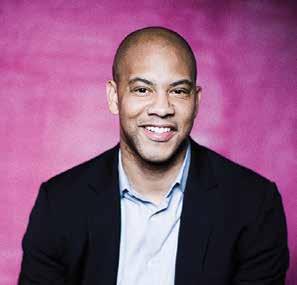
Dr. Clarence Wardell III knew early in his career that he wanted to make changes for good. Today, he serves communities across the nation as the director for What Works Cities, a branch of Bloomberg Philanthropies. What Works Cities is a national organization that provides resources to assist local governments in determining how they can best address key issue areas and serve those who need them most. He is also the Vice President of Solutions at Results for America, which aims to help “decision-makers at all levels of government harness the power of evidence and data to solve our world’s greatest challenges.”
After receiving his BSE in Computer Engineering at Michigan, he earned a PhD in Industrial and Systems Engineering from the Georgia Institute of Technology, and in 2011, he co-founded the startup tinyGive. tinyGive, which was later acquired by Give Lively!, provided social fundraising tools and resources to organizations, all through the faculties of social media.
During the Obama administration, Wardell founded the Police Data Initiative. Departments were encouraged to share data on everything from violent acts to routine traffic stops to promote visibility and more accurate representations of police actions in the community. Currently more than 150 city police departments are partnered with the program, thus improving both police accountability and administrative transparency for millions of people.
“The goal was to get police departments across the nation to voluntarily share their data around police accountability and interaction,” he said. “There was truly a paradigm shift for both the public and the police. They’d never shared this information before, and people had never seen these kinds of numbers. We wanted to make it the new normal.”
Dawson Yee: Alumni Merit Award for ECE
Dawson Yee (MSE EE 1987) returned to campus during Homecoming 2019 and gave the talk “How to prepare to work on the next Xbox, Kinect, Hololens, or Quantum Computer” to a room packed with students, faculty, and staff. He is the 2019 College of Engineering Alumni Merit Award for ECE.
Yee is currently System Engineer – Azure Hardware, Quantum Computing at Microsoft. Prior to this, he was the Hardware Systems Architect and Engineer for both Xbox 360 Kinect and Xbox One Kinect. At the time, the Xbox Kinect was the fastest-selling product in consumer electronics history. He later served as a Hardware System Engineer and Architect for HoloLens.
Prior to joining Microsoft in 1998, Yee was at Intel for 10 years. He has authored more than 80 granted and pending patents. He is a member of the ECE Advisory Council.

The cornerstone of Yee’s talk, was about following your passion. He quoted Mark Twain, saying, “The two most important days in your life are the day you are born and the day you find out why.” Yee was born to be Mr. Fix It.
“Mr. Fix It just means that I like to learn how things work, and when I found out how things work, then I can apply it to engineering principles,” Yee said.
Yee also spoke of his passion for giving back, and how his wife, who passed away in 2017, influenced him.
“What was important to her was educating students, and so I really wanted to be here to give back, mentor, help,” Yee said. “Think about others before you. Your professors, your teachers – they have all given you this knowledge to add to your toolbox.”
84
“I’d like to see more equitable cities, more resources and services across the board. This is the future we are working toward.”
— Clarence Wardell III
Dawson Yee and Mingyan Liu, the Peter and Evelyn Fuss Chair of ECE, during Homecoming 2019.
“Do great things as engineers. Go change the world. Pass the knowledge forward, and remember where you got it from.”
— Dawson Yee
Tony Hsu and Family Establish New Fellowship Fund to Support Graduate Students
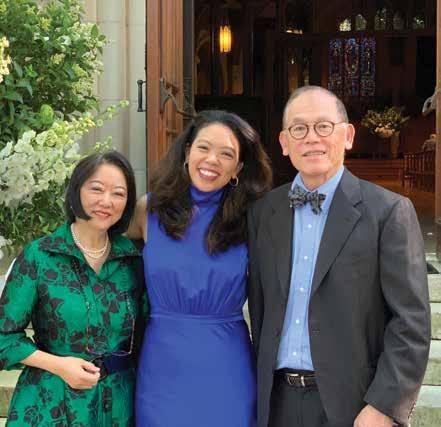
Tony Hsu (BSE EE ’68), his wife Lily, and their daughter Alexandra have established the “Tony S., Lily P., and Alexandra Hsu Fellowship Fund,” which will support Electrical and Computer Engineering graduate students at the University of Michigan. They also provided a gift to the ECE Fund, which supports a wide variety of activities and initiatives related to research and the educational experience.
“I wanted to express my appreciation for Michigan ECE,” Tony said. “The university is there to educate and inspire people to do something that’s meaningful, that makes the world a better place.”
While a student at Michigan, Tony enjoyed tennis, squash, and sailing, and he was a member of the FF Fraternity – a global social club for Chinese students. He spent many Saturdays cheering on the Wolverines in the Big House and grabbing a greasy, mouthwatering dinner at Blimpy Burger. He frequented the original Pretzel Bell, which featured wooden tables where generations of U-M students had carved their names. But his favorite place on campus was the Undergraduate Library, or as it is more commonly known, the UGLi.
“The UGLi was basically the place where I could find a quiet setting,” Tony says. “But it was also a place where guys would meet girls.”
After graduation, Hus went on to earn his master’s degree and doctoral degree in Applied Physics from Yale University. During this time, he spent several years working at Lockheed Missiles and Space Co. (LMSC), where he worked on communication satellites for the Intelsat Program. This program was directly related to some of the work he’d done under Ralph E. Hiatt and Keeve (Kip) M. Siegel at the Michigan Radiation Laboratory. After finishing his degrees at Yale, Tony went into industry and had a successful career at Newport Corporation, where he became Vice President. He fostered connections with several prominent research groups around the world, including the Ultrafast Science and Phenomena at U-M, which is now the Gérard Mourou Center for Ultrafast Optical Science.
After leaving the Newport Corporation, Tony worked as an angel investor, board member, and advisor, helping to fund startups in semiconductors, semiconductor equipment, network technology, laser communications, and fiber optics companies.
Tony served as a member of the National Science Foundation (NSF) Committee where he helped select candidates for the Presidential Young Investigators Awards in physics, considered the highest honor granted by the NSF. He was actively involved with the Optical Society of America, the American Physics Society, and the IEEE Laser and Electro Optics Society. He also served as one of the two conference and program co-chairs of the Conference of Lasers and Electro-Optics, the largest and most respected international conference in laser and electro optics technology.
In 2018, Tony published Chasing the Modern, an exploration of the life of his grandfather, the iconic Chinese poet Xu Zhimo. The project was inspired from an interaction with a friend during Tony’s freshman year at U-M.
Tony and Lily, a former fashion designer, have been married for over 45 years. Their daughter Alexandra is a filmmaker.
85 GIVING NEWS
“I wanted to express my appreciation for Michigan ECE. The university is there to educate and inspire people to do something that's meaningful, that makes the world a better place.”
— Tony Hsu
THANKS TO OUR DONORS Electrical and Computer Engineering thanks the recent donors named below as well as those who gave anonymously.
INDIVIDUALS
Mr. Mark J. Abel and Mrs. Diane M. Abel
Vinay Ahuja
Mr. Viral A. Amin and Mrs. Rakhi V. Amin
Dr. Robert M. Anderson Jr. and Mrs. Janice P. Anderson
Ms. Christine L. Anthony and Mr. Jeremy LeBoy
Robert J. Armantrout
Dr. John S. Asvestas and Mrs. Effie Asvestas
Mr. John E. Bacon and Mrs. Jacqueline P. Bacon
Dr. Qing Bai and Dr. Kun Wang
Dr. Paul E. Bauhahn and Mrs. Ruth E. Bauhahn
Mr. Philip K. Bayer and Ms. Dana Bayer
Mr. R. James Bennett
Prof. Frederick J. Beutler and Dr. Suzanne A. Beutler
Mr. Jaydip Bhaumik
Dr. Xiaochuan Bi and Dr. Jianbai Wang
Mr. Srinivas R. Bidare and Ms. Somya Bidare
Matthew F. Bombery
Mrs. Andrea M. Borkowicz and Mr. Neil L. Borkowicz
Mrs. Heide K. Boutell and Mr. David G. Boutell
Mrs. Ann-Marie Brauchler and Dr. Fred T. Brauchler
Dr. Thomas W. Bristol
Dr. Arik D. Brown and Ms. Nadine S. Brown
Mr. Gregory F. Buchanan and Ms. Christine J. Kolberg
Mr. Nicholas A. Bueter and Ms. Megan F. Bueter
Mr. James D. Burich
Ms. Tiffany C. Bynum
Mr. J. Scott Carr and Ms. Marion E. Parr
Mr. Matthew D. Casselton and Dr. Maureen A. Walton
Dr. John Q. Cheng and Ms. Jingxiao Zhang
Mr. Shing H. Choo and Ms. Marina Chin
Mr. Rex Chung
Mr. Thomas J. Clark and Mrs. Gail E. Clark
Mr. David A. Cochran
Professor Don M. Coleman and Mrs. Madeleine W. Coleman
Dr. Daniel P. Connors
Mrs. Eileen C. Copeland and Dr. Michael J. Piovoso
Mr. Geoff P. Cost
Mr. Thomas W. Craig and Mrs. Julianne L. Craig
Ms. Elena V. Dagg and Mr. James Dagg
Mr. William O. Dargel
Mr. Mahmoud DarvishZadeh
Mr. Douglas J. De Jong and Mrs. Amy S. De Jong
Mr. John G. DeLoof
Mr. David T. DeRoo
Mr. Robert J. Dickson and Ms. Linda G. BradhamDickson
Mr. Daniel J. Dymek
Mr. Larry N. Engelhardt and Mrs. Mary S. Engelhardt
Mr. Andrew J. Farah and Ms. Jennifer Farah
Mrs. Karen S. Fireman and Mr. Howard Fireman
Mr. Maceo A. Foster Jr. and Mrs. Shirley A. Foster
Ms. Lauren Frear
J. George Friess
Mr. Edwin K. Fujinaka
Dr. Samuel H. Fuller and Mrs. Carol W. Fuller
Peter and Evelyn Fuss
Ms. Mary A. Gallagher
Ms. Aviva Garrett Doshay and Mr. David Doshay
Mr. Raymond J. Geitka
Professor Brian E. Gilchrist
Mr. Kevin S. Gilligan and Mrs. Susan Gilligan
Burt and Liz Gold
Dr. Subrata Goswami
Mr. Steven E. Grob and Mrs. Deborah J. w. Grob
Dr. Han Guo
Mrs. Marjorie B. Gurmen and Dr. Erdogan Gurmen
K. Cyrus Hadavi and Shiva T. Hadavi
Mr. Mark L. Haddox
Mrs. Mary F. Hazeltine and Dr. Barrett Hazeltine
Mr. Thomas W. Heisey and Mrs. Kate M. Heisey
Mr. William R. Heydenburg
Mr. Michael J. Hillberg and Ms. Linda A. Mui
Mr. Robert A. Honor and Mrs. Sally F. Honor
Dr. Rebecca S. Horvath
Tony S., Lily P., and Alexandra Hsu
Dr. Wan-Thai Hsu and Ms. Queenie Tsai
Dr. Xueying Hu
Mr. Aaron M. Hurd
Mr. Michael T. Hylland
Dr. Medhat A. H. Ibrahim
Colonel Richard T. Jeffreys and Mrs. Cynthia A. Jeffreys
Mr. Donglin Ji and Ms. Jingjing Zhang
Carrie Alice Johnson
Dr. Catharine S. June and Mr. Robert B. June
Ms. Maria Kaltsouni and Mr. Yahya Mehdizadeh
Mr. Ibrahim S. Kandah
Mr. Michael J. Kaucheck and Mrs. Michelle L. Kaucheck
Dr. Ayman I. Kayssi
Mr. John J. Keller
Mrs. Dawn M. Kelsch and Mr. Kevin M. Kelsch
Mr. Charles H. Kendall and Mrs. Natalia M. Kendall
Mr. Jeffrey T. Klass and Ms. Melissa M. Klass
Mr. Thomas K. Klein and Mrs. Anne Klein
Mr. Michael S. La Moreaux
Mr. John T. Laetz and Ms. Linda J. Laetz
Mr. Christopher L. Lambrecht
Mr. Peter L. LaPresto and Mrs. Cheryle A. LaPresto
Mr. Richard W. Larson and Mrs. Neva M. Larson
Mr. David M. Lavigne and Ms. Lydia K. Lavigne
Ms. Diana G. Lawrence and Mr. Todd Hennis
John and Sarah Lawser
Ms. Yen Ying Lee
Frederick J. Leonberger
Robert and Patricia Lerner
Dr. David M. LeVine
Mr. Yifei Li
Mr. Herman Lieberman and Mrs. Roslyn Lieberman
Mr. Christopher U. Light Jr. and Mrs. Jacquelyn G. Light
Mrs. Liene Linde and Mr. Guntis Linde Sr.
Dr. Thomas E. Lipps and Mrs. Patricia J. Lipps
Mr. George A. Lipscomb and Ms. Karen Lipscomb
The Family of Dr. Yu-Ping Liu
Ms. Diana L. Lorenz and Mr. Peter S. Fales
Mr. Michael J. Loszewski and Mrs. Kristen M. Loszewski
Mrs. Julie M. Louis-Benaglio
Dr. Khai-Quang Luc
Mr. Peter S. Lucyshyn and Mrs. Barbara J. Lucyshyn
Mr. Robert F. Lusch and Ms. Patricia J. Foreman
Ms. Ann J. MacNeill
Mr. David E. Mahlke
Mr. David P. Mans and Ms. Patricia Spector
Dr. Steven M. Martin and Mrs. Laura Martin
Mr. Finley D. McRae III
Mr. Robert L. McVean
Mrs. Mary Anne Medaglia and Mr. Steven P. Medaglia
Mr. Stanley T. Mendenhall and Mrs. Robin Wilt Mendenhall
David G. and Dorothy S. Messerschmitt
Mr. Gary P. Miller and Mrs. Angela M. Miller
Moloney Family
Mr. Robert E. Most
Mr. Eric A. Munson and Dr. Amanda M. Munson
Mr. Michael M. Murray and Ms. Rhonda Murray
Mr. Jerold W. Muth
Dr. Nagaraj Nandhakumar and Mrs. Sasirekha
Nandhakumar
Mr. John J. Nepiuk and Mrs. Mona C. Nepiuk
Dr. Doyle T. Nichols and Mrs. Ellen D. Nichols
Mr. Jonathon P. Niemczak
Mr. Ray J. Notarantonio and Mrs. Kristine L. Notarantonio
Mr. Tadahiro Ohtake and Ms. Anne M. Dwyer-Ohtake
Mr. Javin T. Olson
Dr. Nicholas A. Petrick
86
Mr. Frederick H. Phail and Mrs. Nancy L. Phail
Dr. Charles W. Piez Jr. and Mrs. Mary W. B. Piez
Mr. Daniel B. Pinkert and Ms. Freddi L. Greenberg
Ms. April C. Pixley and Dr. David A. Lustig
Mr. Mark D. Posluszny and Mrs. Cynthia J. Posluszny
Commander Peter T. Poulos
Mr. Mark C. Quint and Mrs. Brigid E. Quint
Mr. Alan D. Reed
Mrs. Ceclia G. Reitz and Mr. David L. Reitz
Mrs. Cynthia A. Retotar and Mr. Daniel D. Retotar
Mr. Conrad S. Revak
Dr. Jordi Ribas
Mr. Henry S. Riddle
Mr. Lawrence A. Rigge and Ms. Janet L. Rigge
Mr. Michael A. K. Rizza
Mr. Glenn S. Robertelli and Mrs. Nithya Robertelli
Mr. Erik S. Rogind and Mrs. Deborah A. Rogind
Mr. Gary A. Samuels and Mrs. Gayle S. Samuels
Dr. John W. Sanguinetti and Dr. Christine A. Litwin-Sanguinetti
Rosemary, Kristen and Catherine Sarri
Dr. W.K. Schnure and Mrs. Gloria Schnure
Mr. Leslie J. Schonberg and Mrs. Ila J. Schonberg
Dr. Arthur A. Schupp Jr. and Mrs. Marilyn J. Schupp
Mrs. Sheila K. Searing and Mr. Richard M. Searing
Dr. Demetrios Serakos
James A. Seydel and Judith C. (Gunderman) Seydel
Mr. Patrick J. Sherhart and Mrs. Lisa S. Sherhart
Mr. Patrick M. Sherry and Mrs. Carol O. Sherry
Mr. David A. Shuster and Mrs. Karen Shuster
Mr. Daniel P. Siewiorek and Mrs. Karon Walker
Siewiorek
Mr. Tejinder Singh
Mr. Amit S. Singhi and Dr. Usha Singhi
Mr. Bryan H. Smith and Ms. Beth A. Woodward
Mr. Richard L. Smith and Mrs. Carol M. Smith
Mr. T. Murray Smith and Mrs. Bonny J. Smith
Mr. David I. Snearline
Mr. George N. Snow and Mrs. Tamara K. Snow
Ms. Noelle M. Soobert and Mr. Allan M. Soobert
Mr. Peter E. Staples and Ms. Judy Staples
Commander Benjamin J. Stoppe Jr. and Mrs. Anne L. Stoppe
Dr. Carl F. Stubenrauch and Mrs. Janice M. Stubenrauch
Mr. Chia-Chen Su
Mrs. Linda J. Teays and Mr. Michael J. Teays
Mr. Paul M. Techau and Mrs. Mary L. Techau
Dr. Douglas A. Teeter and Ms. Terri L. Stull
Mr. Douglas F. Tinker
Mrs. Diane Trew Jr.
Mr. Adam S. Trock and Mrs. Lei Lei Sun Trock
Mr. Sal G. Trupiano and Mrs. Antoinette J. Trupiano
Mr. Chei-Long Tsai and Ms. Fu-mei Tsai
Dr. Junji Urayama
Dr. Kurt L. VanVoorhies and Mrs. Yoshiko H. VanVoorhies
Mr. Mike C. Vartanian
Mr. Joel R. Veenstra
Ms. Catherine S. Victorsen and Mr. Reid A. Victorsen
Jerrold L. Wagener
Richard P. and Mara F. Wallace
Dr. Rodger M. Walser and Mrs. Ardyce M. Walser
Dr. Jason W. Weigold and Mrs. Katrina M. Weigold
Dr. Cheng P. Wen and Mrs. Laura C. M. Wen
Dr. Judy K. Wendt Hess and Mr. Mark D. Wendt
Mrs. Sophia W. White and Dr. Marvin H. White
Mr. Joseph A. Wieciek
Mr. Thomas Wilbur
Mrs. Minoo G. Wille and Mr. David G. Wille
Mr. Robert M. Wise
Dr. Eleanore Wolpaw
Dr. Scott A. Wright and Ms. Aida Ramos Wright
Mr. James J. Wu and Ms. Yi Wu
Mr. Dawson Yee
Mr. Henry C. Yee and Ms. Nancy Y. Yee
Mr. Hariprasad Yerrakalva and Ms. Usha Rani Renaty
Dr. Joseph W. Yoder and Mrs. Patricia L. Yoder
Mr. Russell C. Youngdahl Sr.
Mr. Henry W. Yu
Mrs. Valerie F. Zablocki and Mr. Edward G. Zablocki
Dr. Rongping Zeng
Mr. Dale A. Zeskind and Mrs. Dianne P. Zeskind
Ms. Xujing Zhang
Mr. Jeffrey R. Ziegenfelder and Mrs. Deborah Ziegenfelder
Mr. David M. Zuk and Mrs. Gail W. Zuk
CORPORATIONS & FOUNDATIONS
3M
Agilent Technologies, Inc.
AirVine Scientific, Inc.
Analog Devices, Inc.
Apple Inc.
Avicena Tech
Ball Corporation
BP Corporation
Broadcom Foundation
CalBioEng Inc.
Consumers Energy Foundation
Delta Air Lines Foundation
Detroit Labs
EMAG Technologies, Inc.
Emerson Charitable Trust
Ford Motor Company
Google, Inc.
Gordon and Betty Moore Foundation
IBM Foundation
Intel Corporation
Jenny H. Krauss & Otto F. Krauss Charitable Foundation
KLA Corporation
Medtronic Foundation
Microsoft Corporation
Monarch Butterfly Fund
Nationwide Foundation
Nooril-Iman Charitable Foundation, Inc.
Northrop Grumman
Space Technology
Oracle Corporation
Qualcomm Incorporated
Silicon Laboratories, Inc.
Siloxit Inc.
Texas Instruments Foundation
The Boeing Company
The Engineer’s Foundation
The Procter & Gamble Company
Toyota Motor Corporation
Yanntek, Inc.
87

ece.engin.umich.edu
1301 Beal Avenue
Ann Arbor, Michigan 48109-2122
Photo: Silvia Dykstra















 Peter and Evelyn Fuss Chair of Electrical and Computer Engineering
Peter and Evelyn Fuss Chair of Electrical and Computer Engineering
















 — Rob Giles, Senior Computing Consultant
— Rob Giles, Senior Computing Consultant







 Handing out lab kits for undergraduate courses in electrical engineering for students on campus. The rest were mailed out.
Handing out lab kits for undergraduate courses in electrical engineering for students on campus. The rest were mailed out.


 Prof. Clay Scott
Prof. Clay Scott

















 An electron microscope image shows the semiconductor nanowires. These deliver electrons to metal nanoparticles, which turn carbon dioxide and water into methane.
An electron microscope image shows the semiconductor nanowires. These deliver electrons to metal nanoparticles, which turn carbon dioxide and water into methane.







 A participant tests out iGYM on North Campus in 2019.
Photo: Joseph Xu
A participant tests out iGYM on North Campus in 2019.
Photo: Joseph Xu











































 Prof. Jay Guo holds a sheet of flexible transparent conductor.
Photo: Robert Coelius
Prof. Jay Guo holds a sheet of flexible transparent conductor.
Photo: Robert Coelius

























 Kristen Thornton, ECE PhD Coordinator, and students pose in their “festive sweaters.”
ECE’s Half-Seen tabletop arrangement.
Chinese calligraphy.
Lunar New Year red lantern decorations.
Kristen Thornton, ECE PhD Coordinator, and students pose in their “festive sweaters.”
ECE’s Half-Seen tabletop arrangement.
Chinese calligraphy.
Lunar New Year red lantern decorations.




























































 THORNTON PhD Graduate Program Coordinator
THORNTON PhD Graduate Program Coordinator

















 TIANLIN WANG (EECS) Chair
DAVID MAYERS (CLASP) Vice Chair
RAJESWARI BALASUBRAMANIAM (CLASP) Secretary
LEELAND PIERCE (EECS) Advisor
HUANTING HUANG (EECS) Treasurer
TIANLIN WANG (EECS) Chair
DAVID MAYERS (CLASP) Vice Chair
RAJESWARI BALASUBRAMANIAM (CLASP) Secretary
LEELAND PIERCE (EECS) Advisor
HUANTING HUANG (EECS) Treasurer





















































































